
Garmin has just announced the new Edge 850, alongside its sibling, the Edge 550. The two units are nearly identical at first glance, but as always, Garmin differentiates them slightly in both hardware and software features. But that wasn’t the only things Garmin released today, they also announced the new Garmin Rally X10 power meters, which covers the Garmin Rally 110 & 220 editions for both road Look KEO and Shimano SPD-SL, and Shimano SPD (off-road typically).
In any event, for the Edge 850, the unit essentially takes the existing Edge 1050, and shrinks it down. In fact, one might even argue the Edge 850 is better suited for crappier climates with lots of rain, since it has the full set of buttons on all sides, which the Edge 1050 lacks. But beyond that, the Edge 850 gets all of the new hardware and software features, including the bike bell, spoken voice prompts, a new more brilliant display, Garmin Pay, and more. But, that comes at not just an increased price, but also a drastically reduced battery life.
I’ve been testing the Edge 550 & Edge 850 over the past while, across all sorts of conditions and terrain. From dry days to wet days, on-road to off-road, mountains to flats, you name it. All to figure out what works well, and what falls a bit short. As usual, none of my reviews are sponsored. So, let’s dive into it.
What’s New:
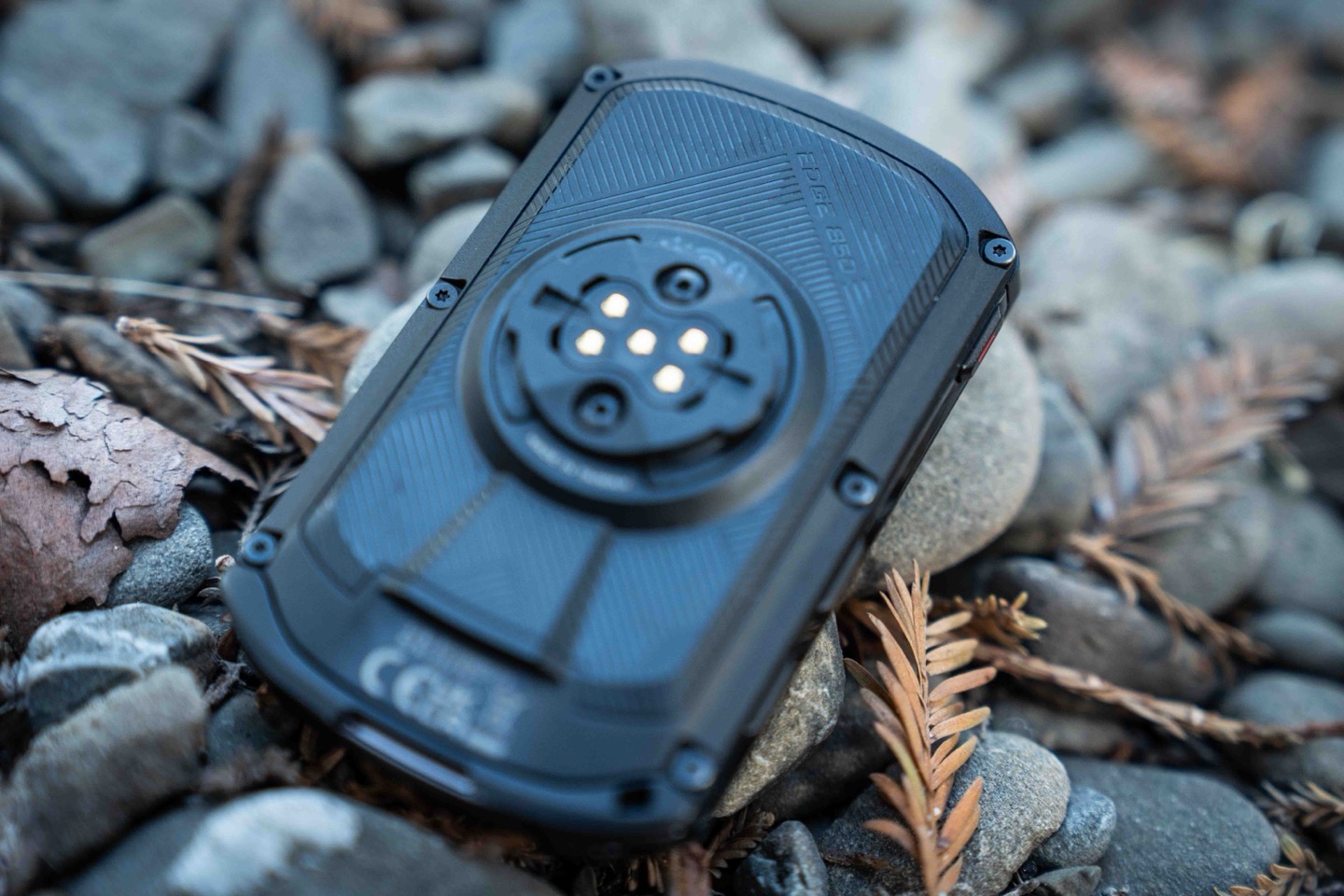
The Edge 850 is essentially an Edge 1050 in a smaller form factor. It’s frankly as simple as that. But, there are still new software things compared to the Edge 1050 (fear not, an imminent firmware update will give the 1050 those added software features). And of course, if you’re coming from the Edge 840, you’ll want to know what’s new compared to that. So, let’s get into it:
– Added speaker (previously just a beeper)
– Added Bike Bell (using new speaker)
– Added voice turn spoken prompts (using new speaker)
– Added Garmin Pay
– Increased display size from 2.6” to 2.7”
– Changed display type from transflective to transmissive LCD
– Added 5Hz GPS/GNSS sampling/recording capability (5x/second)
– Improved processor speed (same as Edge 1050 now)
– Increased storage from 32GB to 64GB
– Extended Garmin Cycle Coach to account for goal course demands (e.g., more elevation, progress towards that goal, etc…)
– Added ’Smart Fueling’ based on user profile, weather, course
– Updated Power Guidance to account for event altitude and user acclimation
– Added Gear Ratio Analysis post-ride (electronic groupsets)
– Improved map rendering engine for faster performance
– Added GroupRide features, including GroupRide data Averages (You vs Group average for last 5 mins for HR/Power/Cad/Speed/Watts/Kg)
– Updated Weather Widget with more detailed forecast
– Added weather layers in map view
– Battery life specs drop to 12 hours, or 36 hours in battery saver mode
– Price increases to $599
Plus, all these things they introduced on the Edge MTB a few months back (Edge 1050 already got):
– Added 5Hz (5 times a second) data recording mode while descending
– Added Timing Gates feature to automatically take splits on route
– Added new Downhill MTB profile
– Added new Enduro profile
– Added new eEnduro profile
– Added automatic run/tracking for downhill MTB
– Added new Climb/Descent lap tracking in Enduro profile (with manual lap button)
– Added enhanced Forksight feature (shows more data on upcoming trails at forks)
– Added post-ride trail breakdown
– Removed default ’Smart Recording’ option (woot!!!!)
Now, when it comes to the differences compared to the Edge 550 that was also just released, it’s the following:
– Edge 850 has an actual speaker (Edge 550 has a beeper)
– Edge 850 has the bike bell (Edge 550 doesn’t)
– Edge 850 has voice prompts (Edge 550 doesn’t)
– Edge 850 has a touchscreen (Edge 550 doesn’t, purely button-based)
– Edge 850 has Garmin Pay (Edge 550 doesn’t)
– Edge 850 has 64GB of storage, versus 32GB on the Edge 550
– Edge 850 has preloaded maps for two regions, Edge 550 for one region (free downloadable global maps are available for all other regions, at full fidelity)
– Edge 850 has on-device address search (e.g., 131 Maple street), Edge 550 doesn’t
– Edge 850 has on-device round-trip route creation, Edge 550 doesn’t
Of random notables, here’s how the two units are nearly the same in the hardware department:
– Both units have 2.7” transmissive LCD screens with 1,000 nits
– Both units have resolutions of 420×600 (they are identical screens)
– Both units have the exact same case size (54.6 mm x 92.2mm x 16.8mm)
– Both units are IPX-7 water resistant (30 minutes at 1-meter deep)
– Both units have same 7-button layout (regardless of screen)
– Both units have full topographic maps for the region you bought it in, preloaded
– Both units now have preloaded Trailforks (previously just 840)
Got all that? Fear not, my Edge 550 review is coming shortly, just need to finish editing the video and photo sorting, so expect that in the next day or so. Realistically, though, it’s virtually identical to the Edge 550 in all my testing, save simply not having the bike bell/speaker/touchscreen (and being $100 cheaper).
The Basics & Configuration:
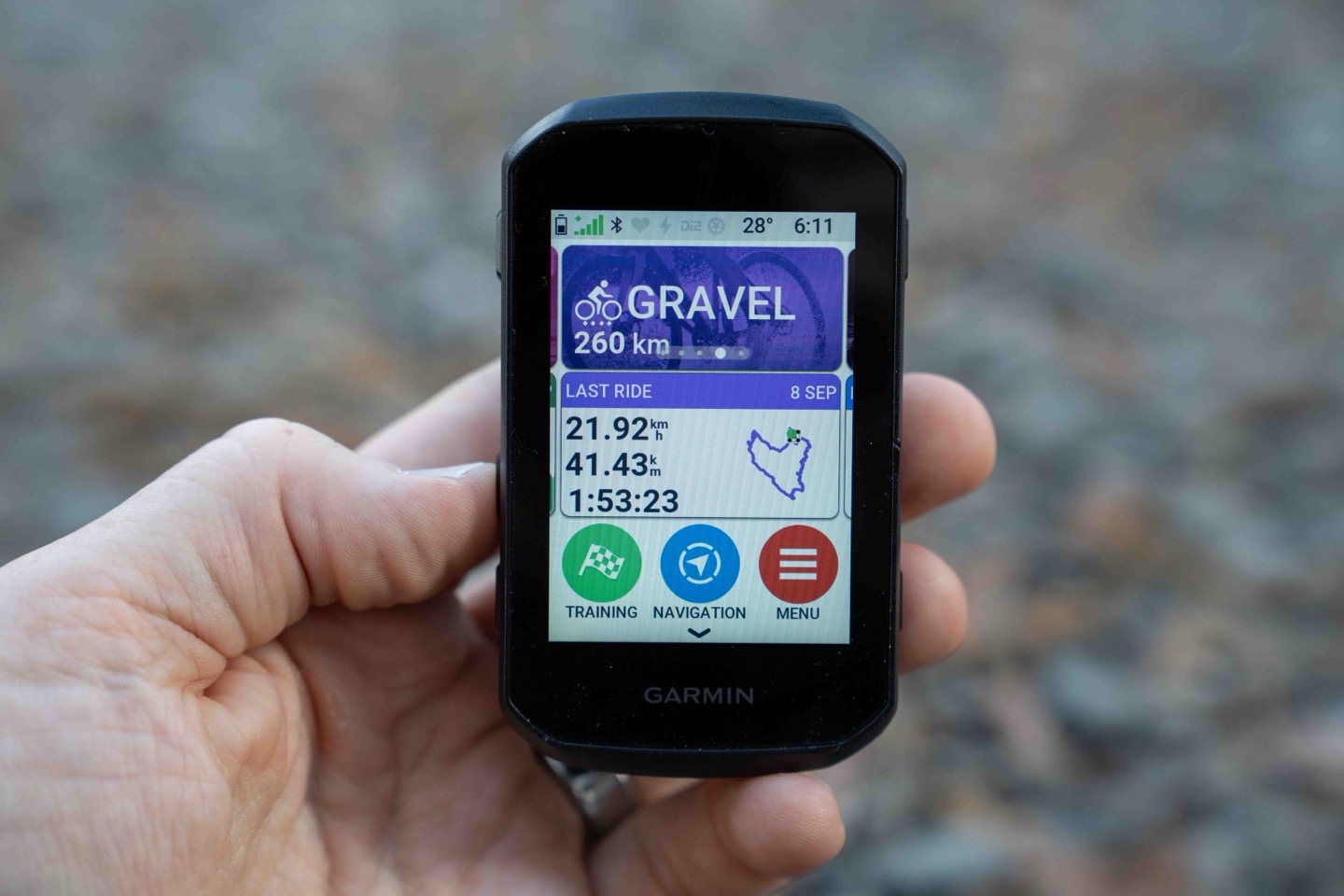
Starting off with the basics, the Edge 850 features both a touchscreen and buttons. This means you can access things via either touch or buttons. So if the weather is non-cooperative (either rain or cold), it’s not a problem. You’ve got three buttons on the left side, two on the right, and two on the bottom facing you. The two bottom ones are for starting/stopping (right), and lap (left).
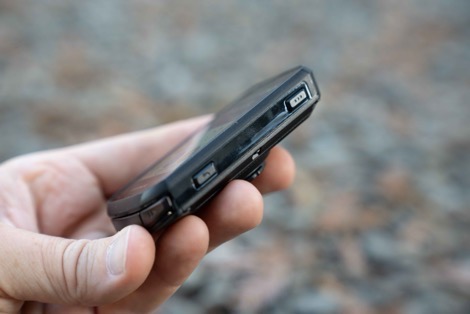
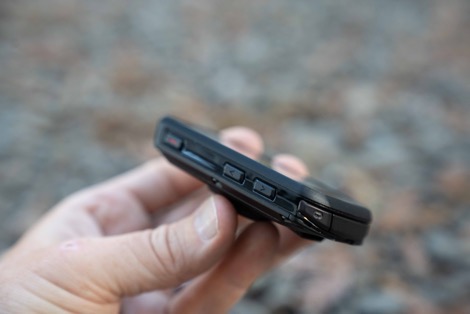

Meanwhile, the touchscreen seems pretty much the same as the Edge 1050 series. It works great when dry, and so-so when wet. It worked better than both the Hammerhead Karoo 3 & Wahoo ROAM 3 when wet, but still made some errors. The ROAM 3 touchscreen was entirely unusable when wet, though the Karoo 3 was closer to the Edge 850. Given how easy the buttons are, it’s just not a big deal to swap to using buttons if the wetness is causing a problem.
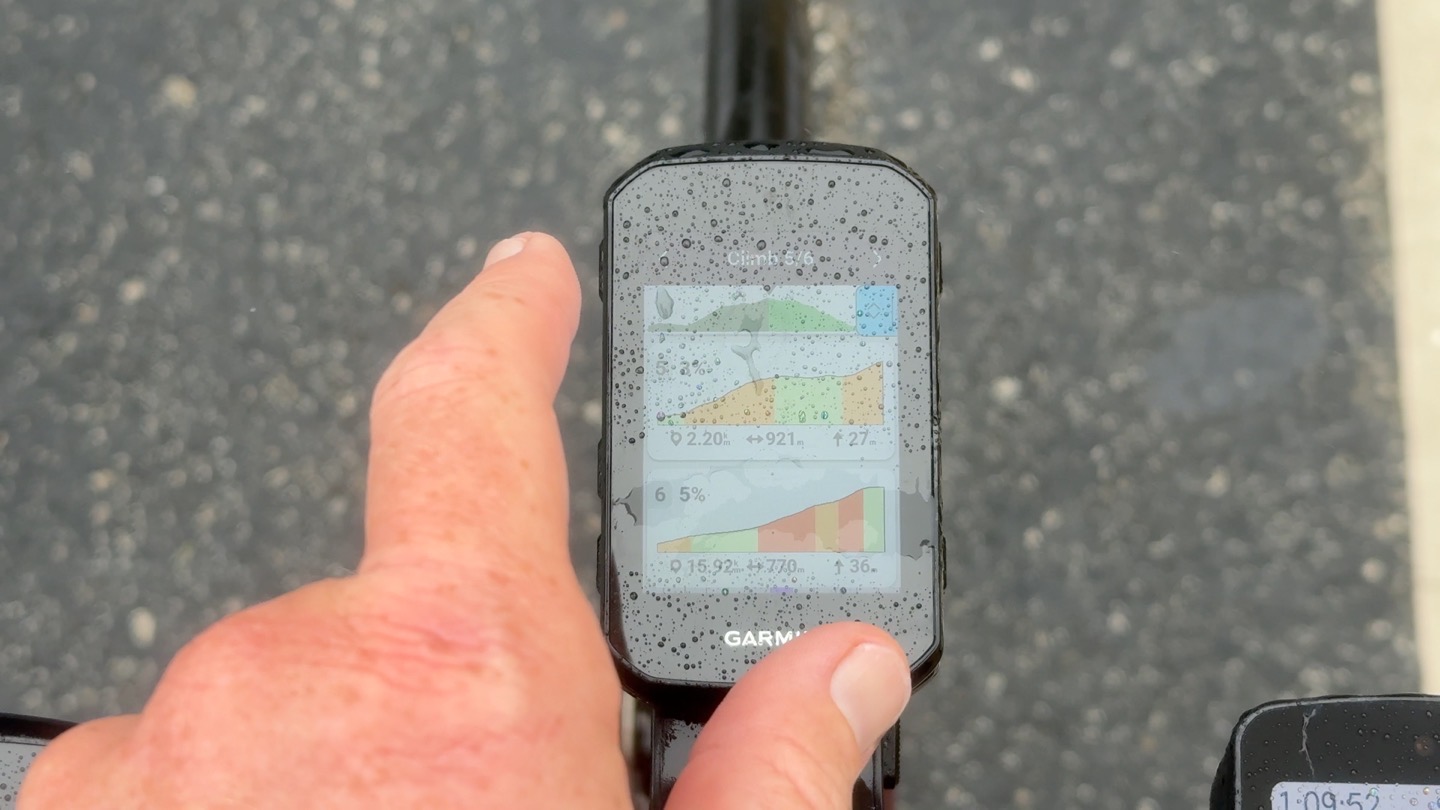
I will note that general sweat/wetness isn’t an issue for me. As a heavy sweater, there have been no problems there. It’s only when the entire screen is covered in water that it’s trickier. That said, this is one advantage of the Edge 850 over the Edge 1050 – the Edge 1050 doesn’t have the side buttons to mitigate any rougher watery situations. Still, I find the Edge 1050’s larger screen makes it a bit easier to get around with wet fingers/gloves than the Edge 850’s slightly smaller screen.
In any event, on the main page, you’ve got your sport profile up top, followed by the last ‘thing’ synced to your device (could be a course, workout, etc…). You can swipe left/right on either of those two levels to switch modes or courses/workouts synced.
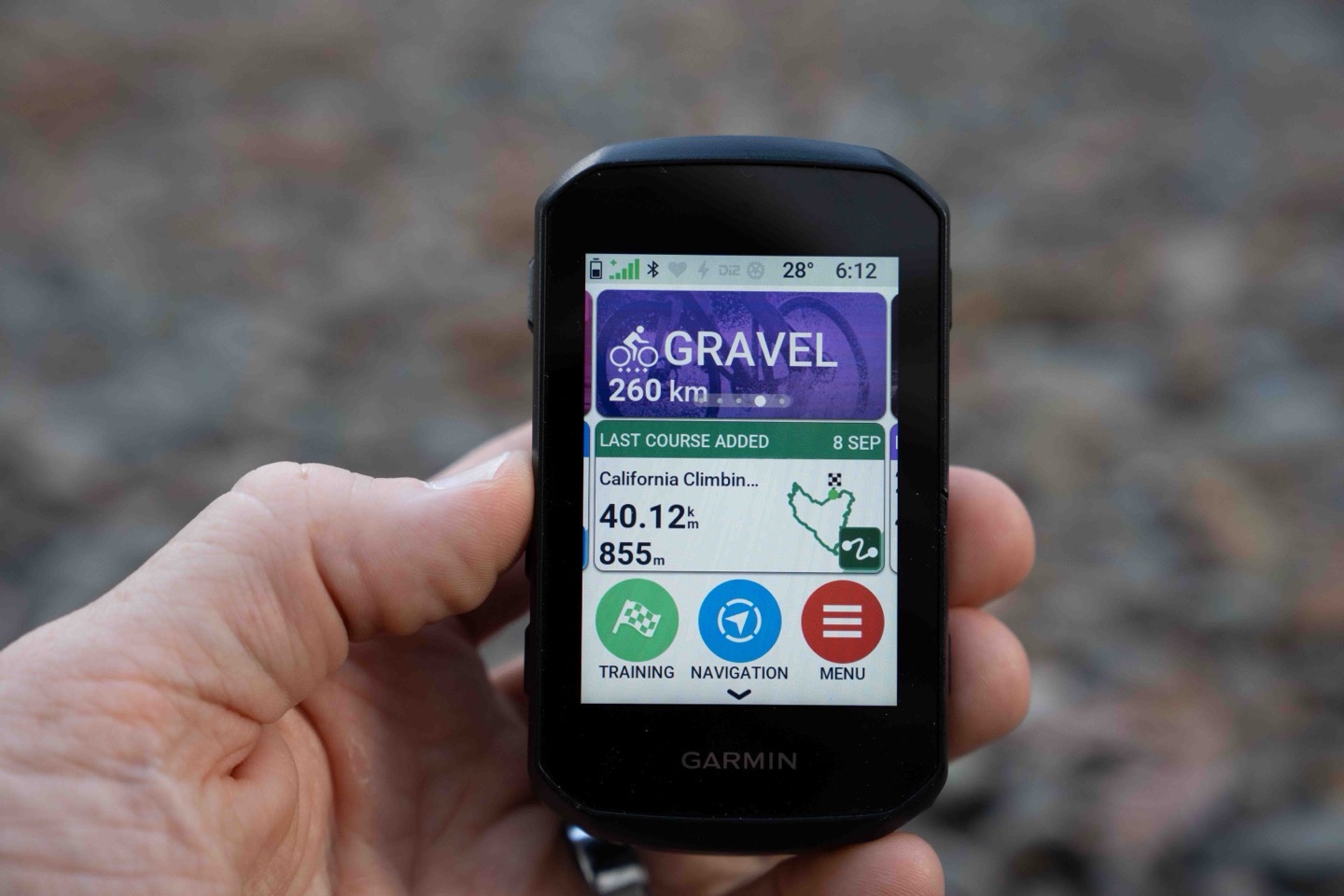
Down below that are the main areas of the device. Starting with Training, you’ll see planned workouts, structured workouts you’ve created/synced from other platforms, segments, intervals, smart trainer control, racing past activities, and more.
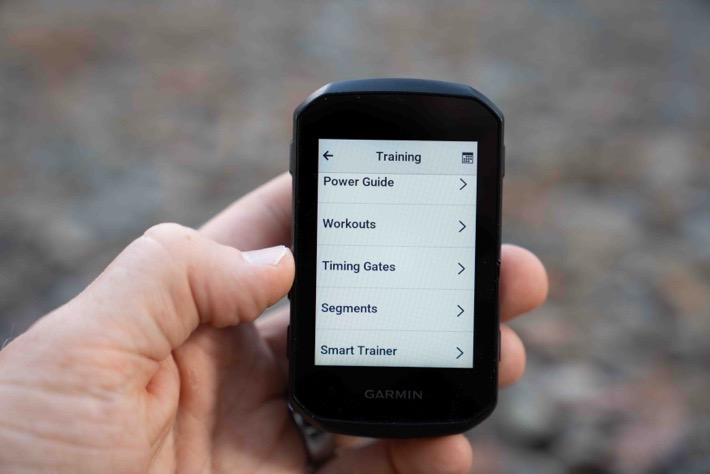
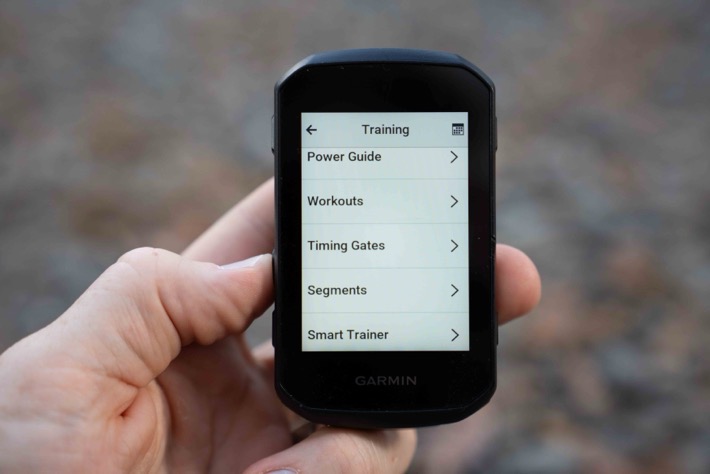
All of this is essentially the same as it’s been for years. Though there are some minor tweaks to Power Guide that I cover in the navigation section.
Heading back, you’ve got the ‘Navigation’ section. That’s where you can browse the map, load up a course, search through POIs (e.g., for a cafe), saved locations, and more.
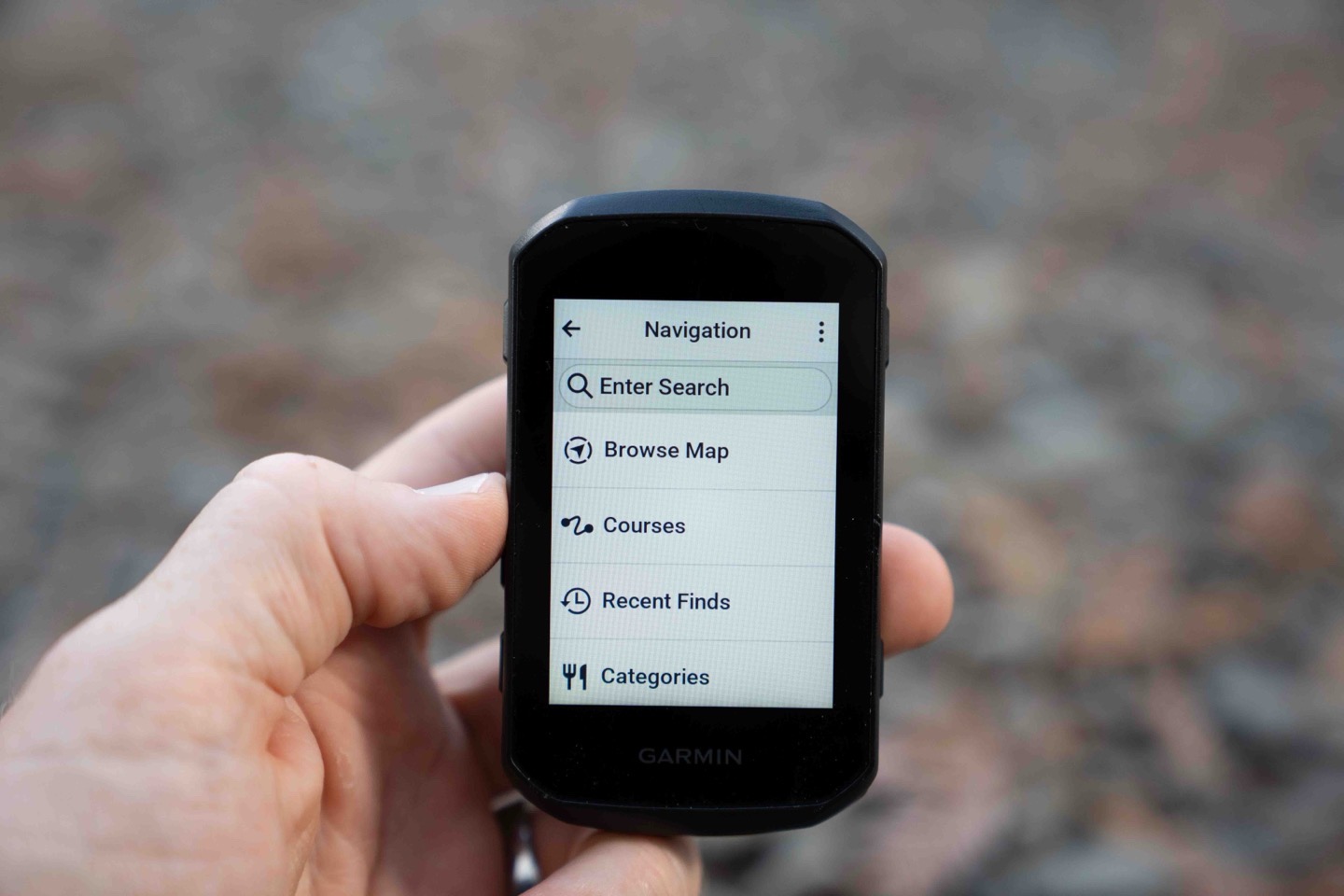
Again, I dive into this more in the ‘Navigation’ section down below.
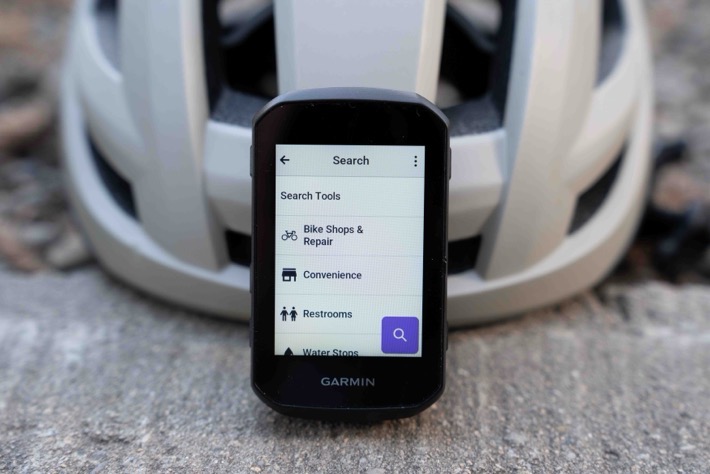
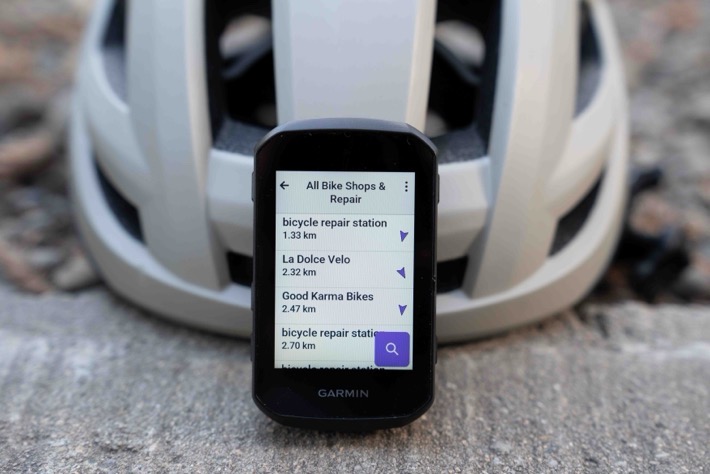
Meanwhile, if you swipe from the top at any time, you’ve got a controls panel. The first page is general status, for things like the backlight, battery, GPS status/type, sensors, and phone status:
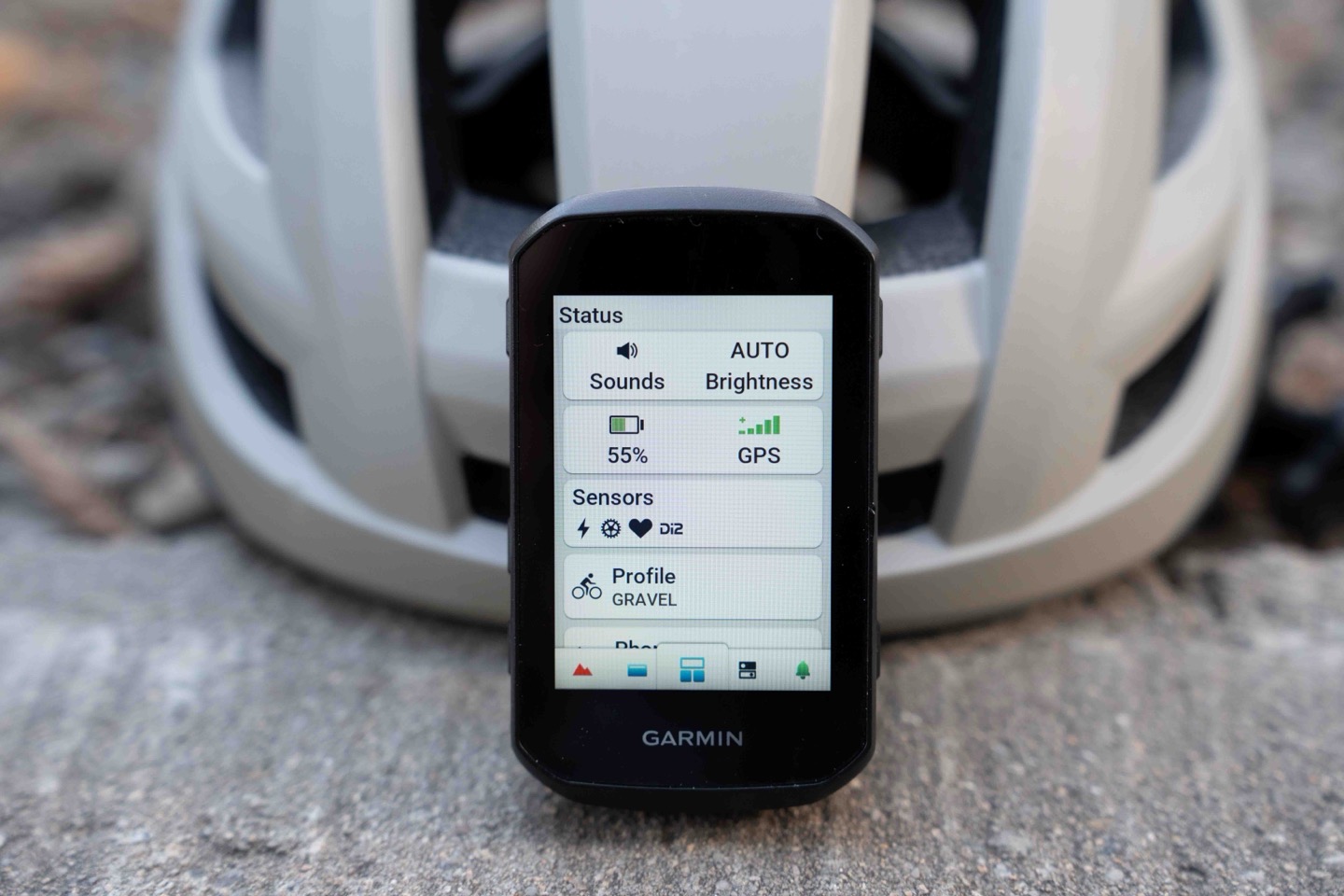
You can then swipe left/right through the different pages: Wallet, Climb Explore, Strava Segment Explore, Weather, Notifications, and other controls (Bike Alarm, finding course, timing gates, workout, etc..):
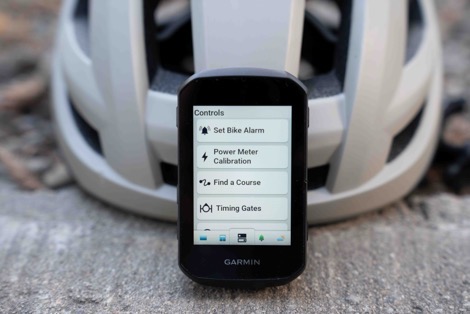
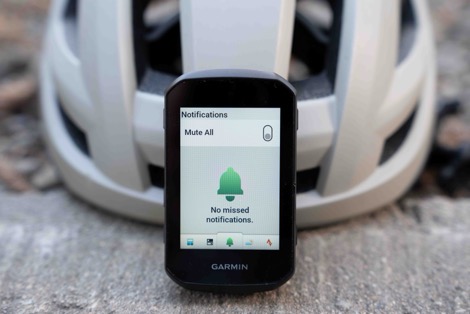

If we look at the weather one, that starts off similar to the past, letting you see the current weather and upcoming weather. However, you’ll notice a new ‘Weather Map’ option, which you tap into:
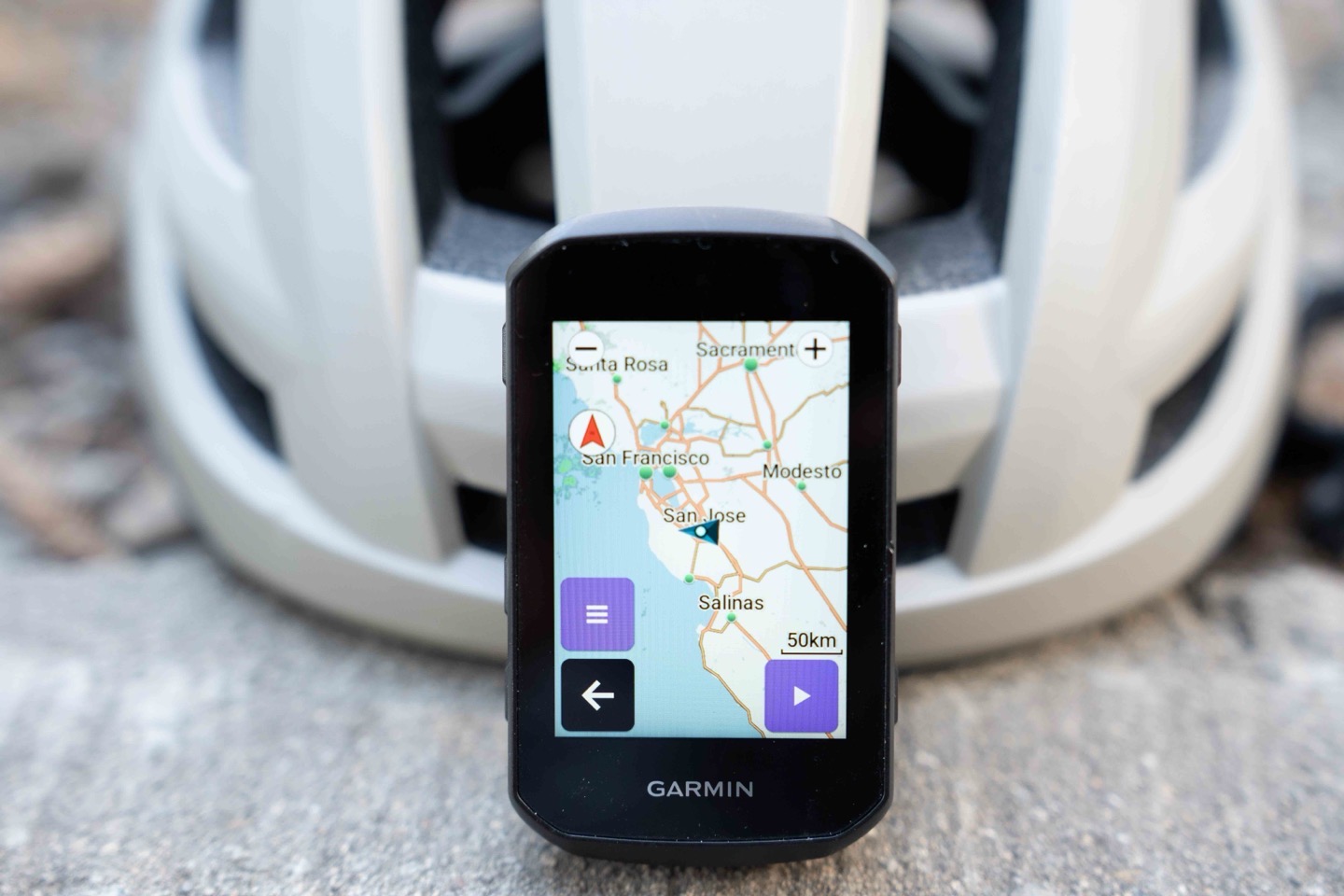
When you do that, you’ll see overlays for wind, precipitation, clouds, and temperature:

Here’s an example of these:
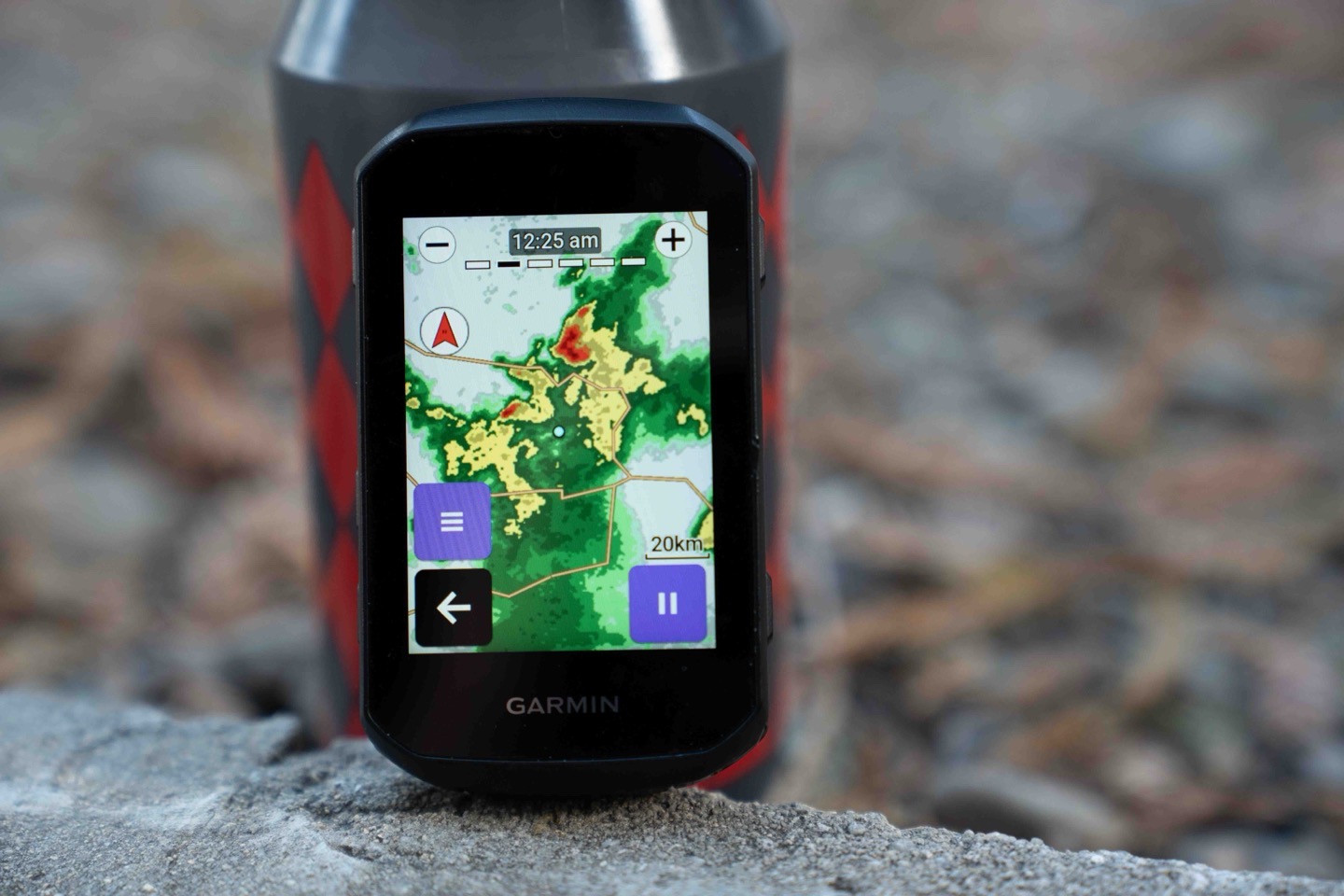
There are actually animations for these too, just like you’ve seen on the Garmin Fenix series for a few years. I show that in the video up above at the top of the post.
While I’d love to see these on the regular map page (versus just this small page), it sounds like that’s a blend of both a processing concern and a battery life concern. The existing map page is already the most battery-heavy thing on the unit, and thus adding a thunderstorm front overlay animation to it isn’t exactly helping the battery.
In any event, back on the main page, you’ve got the menu for settings, and a gazillion other areas. I’ve got a full beginner’s guide coming up here later this week where I’ll dive into all this stuff, though it’s essentially identical to the Edge 1050.
The main thing you’d want to know is that you’ve got Activity Profiles, which you can customize for your different ride types (e.g., road, gravel, MTB, etc…). You can also create your own and customize those, too.

Within these, you can customize all your data pages, data fields, and a dozen other settings.
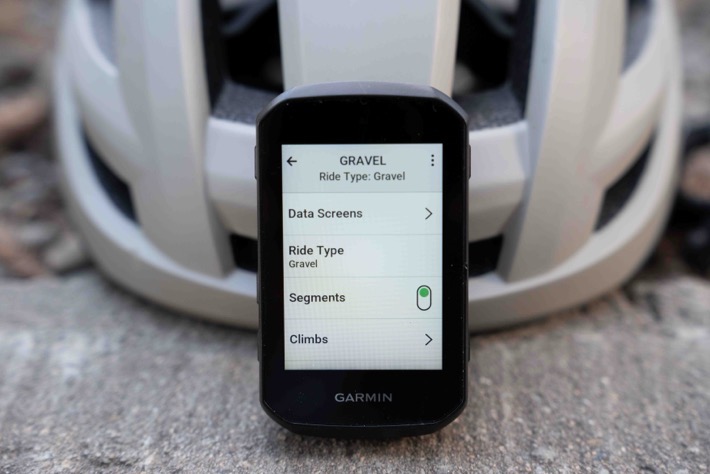
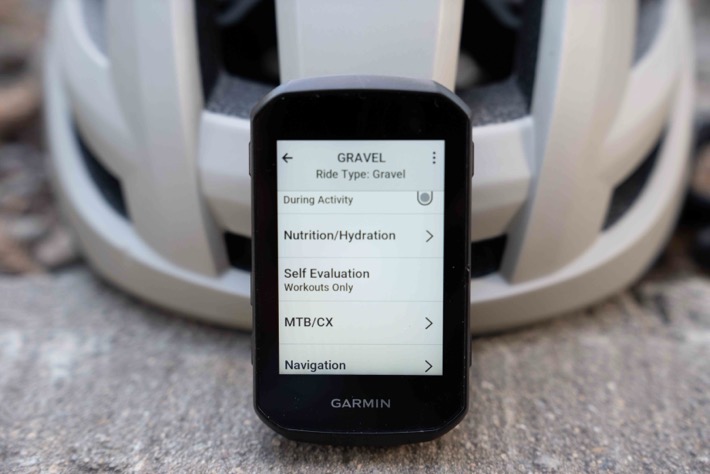
As always, Garmin goes deep on settings/customization. It’s sorta their jam.
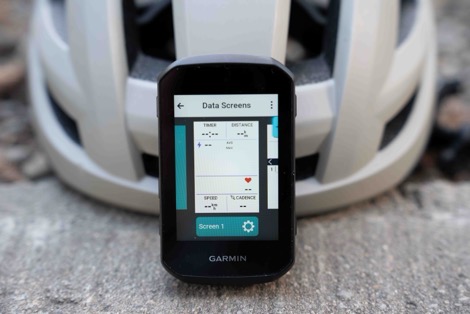
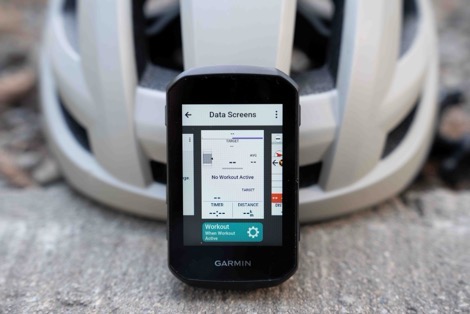
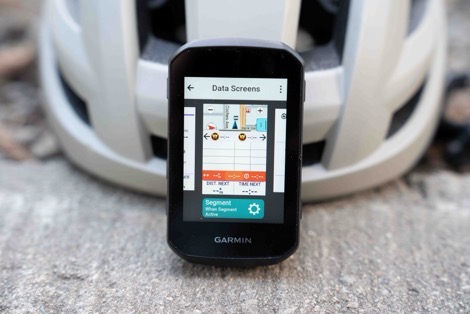
With all that done, you can normally just turn on the unit, and then tap the ride profile at the top. At that point, you’re on your data pages and ready to press the start button in the lower right corner. It usually finds GPS within a few seconds of powering on, well before you get around to hitting start.
Once riding, you’ll see your data pages as you’ve configured them. Here are a few of those from some of my rides:

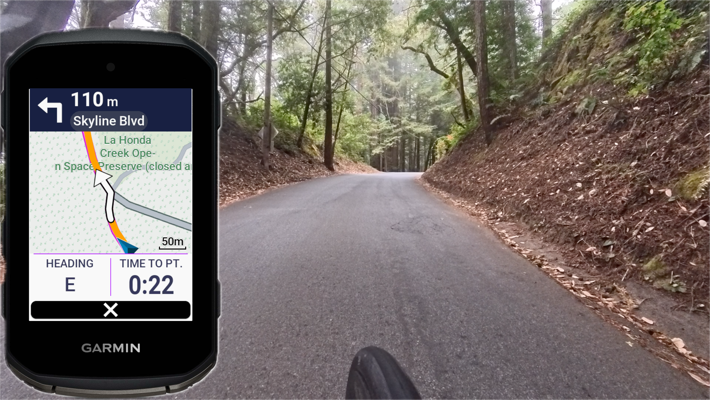
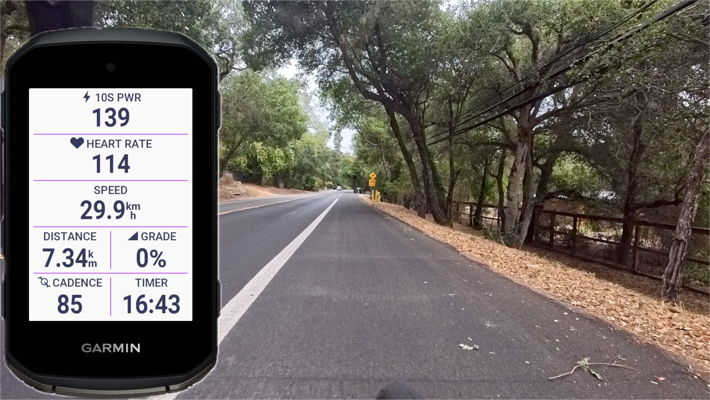
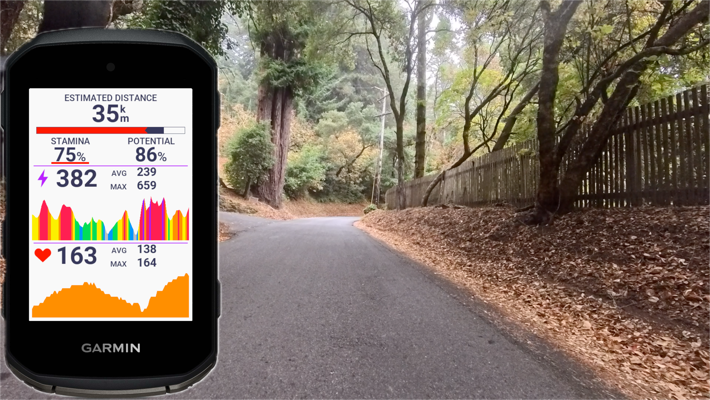
With the ride complete, you’ll get a slate of summary screens, and then your ride is also available on Garmin Connect via Bluetooth or WiFi. From there it’s on to any platforms you’ve configured like Strava, TrainingPeaks, etc…
Lastly, there is the new Garmin Pay inclusion. Of course, there’s been Garmin Pay on Garmin devices for years, but now it’s also on the Edge 850, too. You’ll need to ensure your issuing bank supports it, and then you can use the Garmin Connect app to enable it on your Edge. Once that’s done, you’ll swipe down from the top controls menu to access your wallet:

From there, you’ll unlock it using the PIN code you assigned:
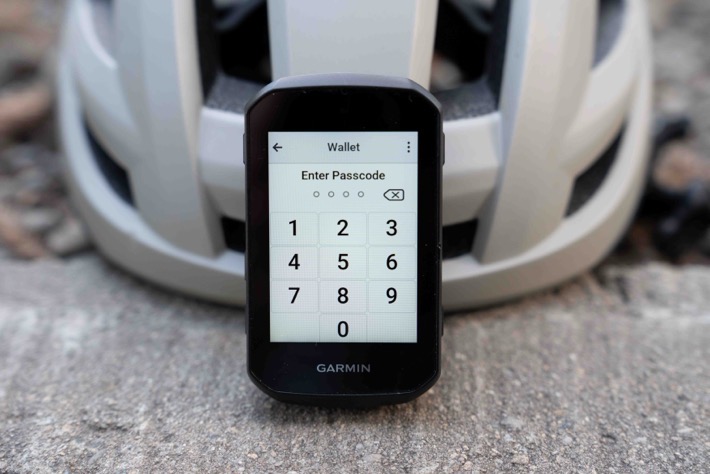
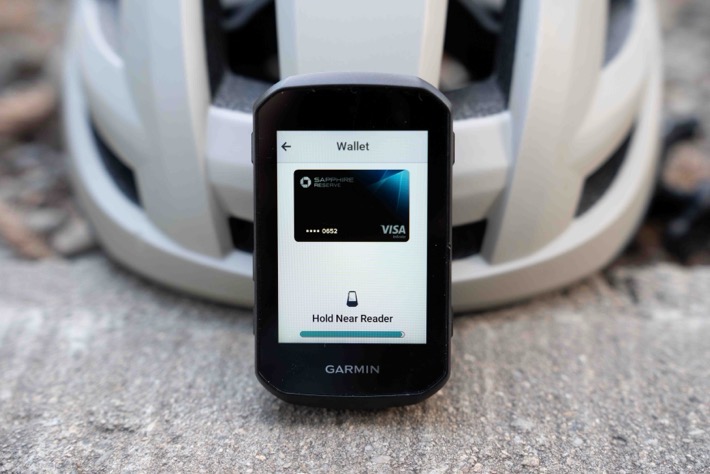
And then it’s ready to make a payment for that mid/post-ride snack:
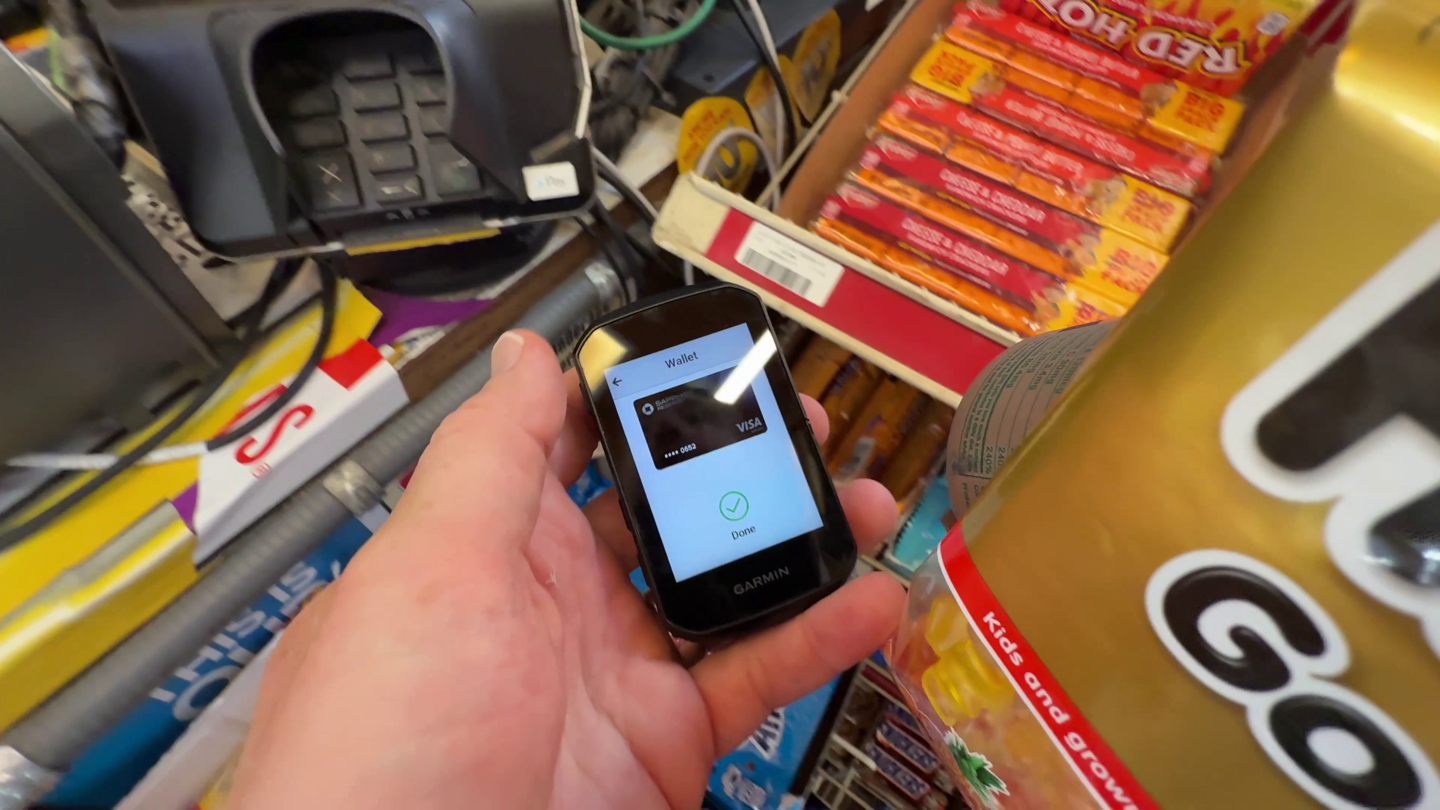
This worked flawlessly for me. Of course, most riders have their phones, but just like with watch NFC payments, it’s just handy to have a backup in case your phone dies. For whatever reason, Garmin decided that the $500 Edge 550 doesn’t deserve this feature, which is kinda funny given Garmin puts it on watches that are half the cost. Sigh.
In any case, with all these basics covered, let’s dive into some of the other new features.
Bike Bell, Voice Prompts, and Speaker Bits:
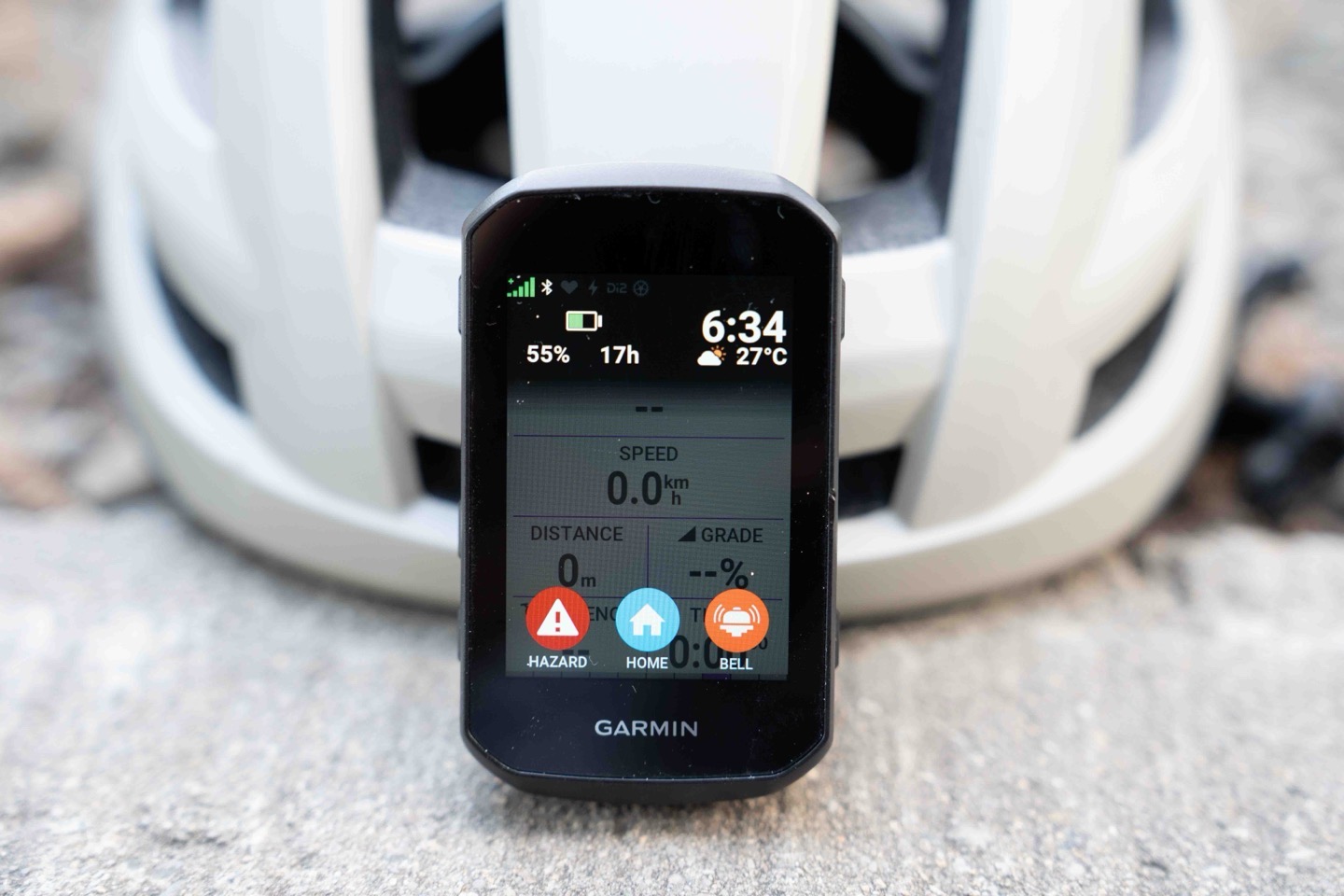
The Edge 850 has a new speaker in it, which is different than the beeper previously. This matches the Edge 1050 in that the speaker enables the bike bell, voice prompts, and other pretty-sounding chimes.
To begin, you can control the different volume levels inside the settings:
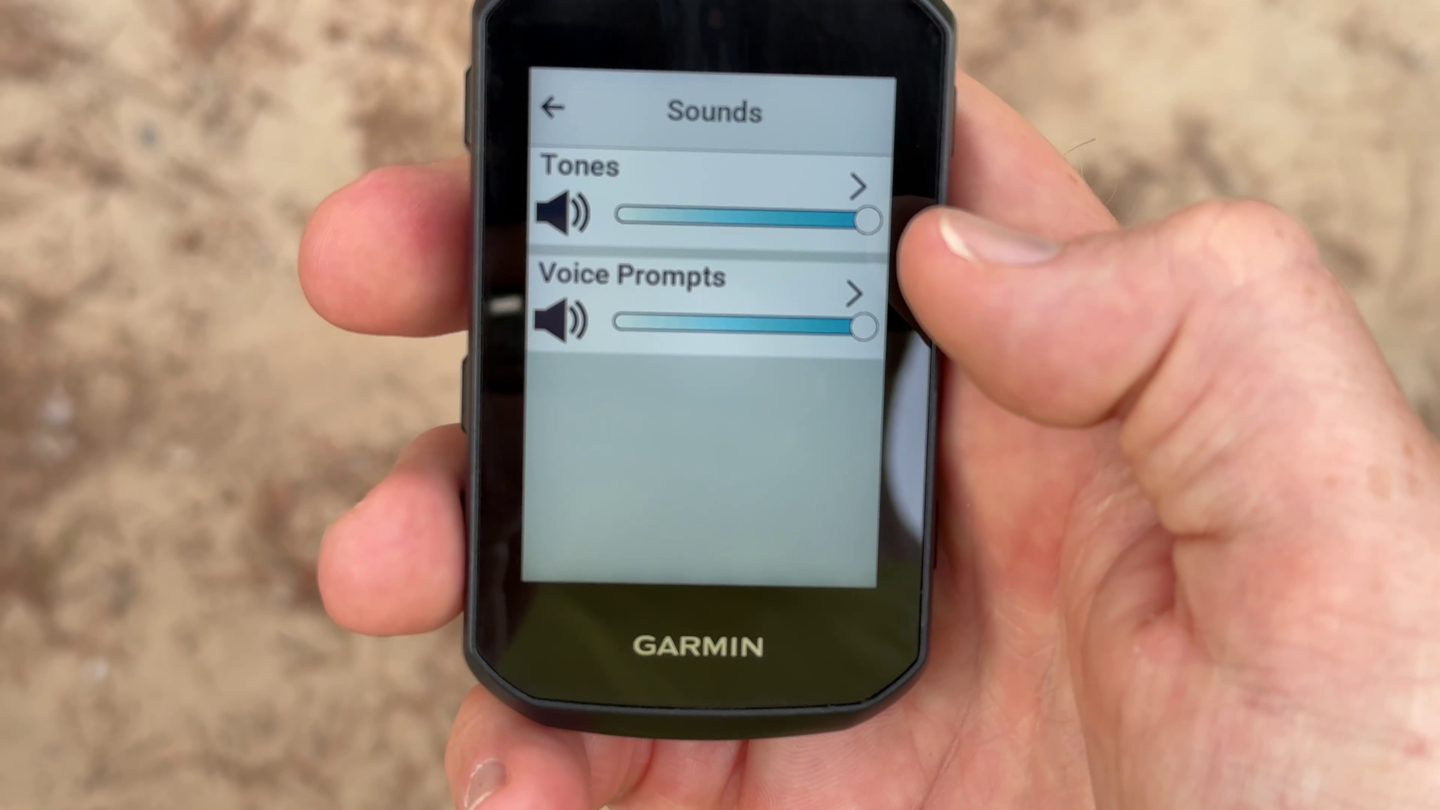
What’s notable here is that you can also control which things it uses voice for, and which things it doesn’t:
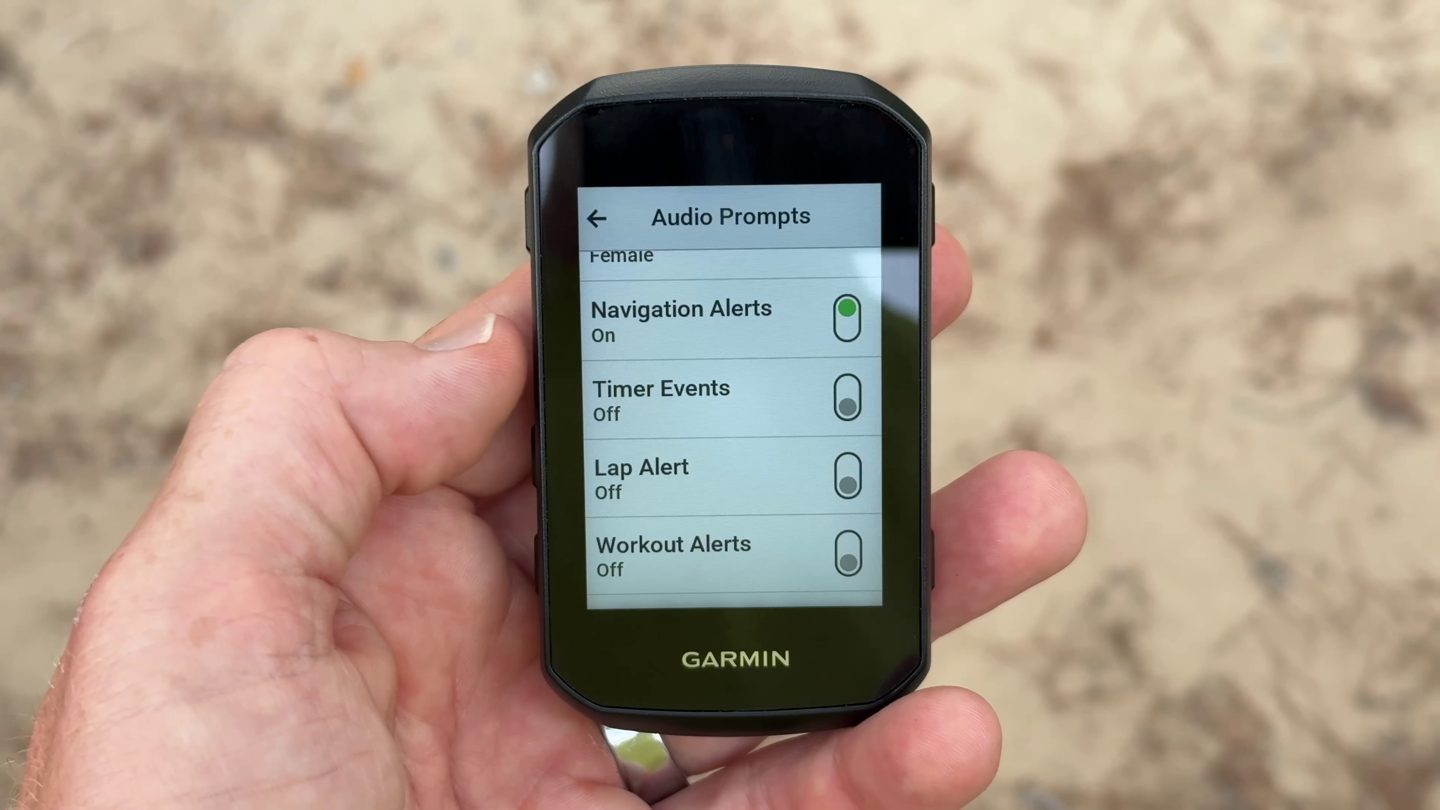
So if you (or your ride buddies) don’t want to hear spoken voice turns or such, you can simply turn those off. I don’t mind the voice prompts. You’ll still get a little chime, and then it just simply tells you a turn is coming, as well as which direction. Nothing intrusive.
Next, of course, is the bike bell. This bell sounds exactly like a real bike bell, and easily tricks even the most well-pedaled Dutch city riding cyclist into thinking it’s just another bike coming from behind.
You can trigger the bike bell by simply tapping the screen once, and then the bike bell icon:
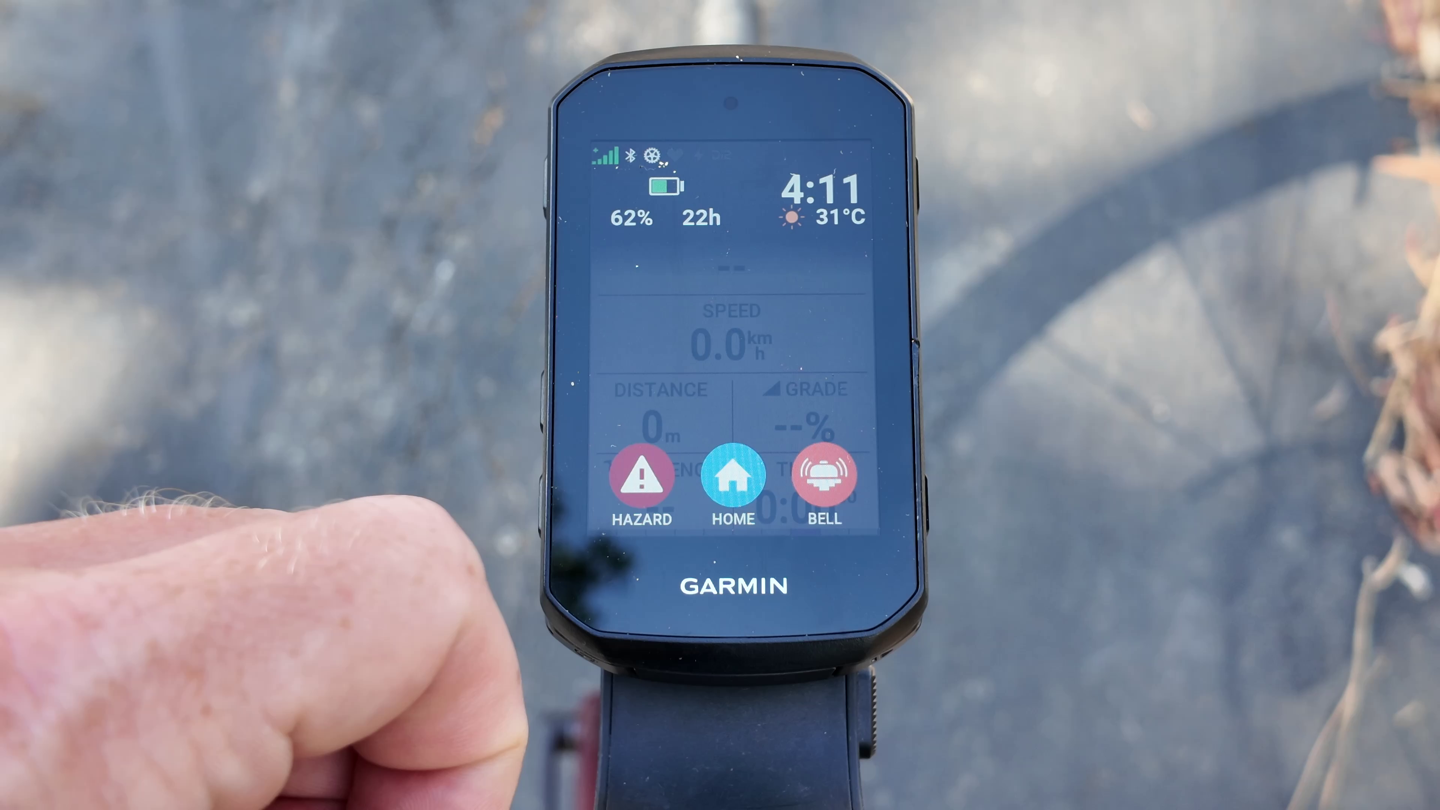
Alternatively, on SRAM AXS with the new bonus button, you can configure that button for the bike bell as well, which is what I do. Technically speaking, you can use any of the extra functions, which you’ll set up within the SRAM AXS app first, and then into the settings of the Edge 850:
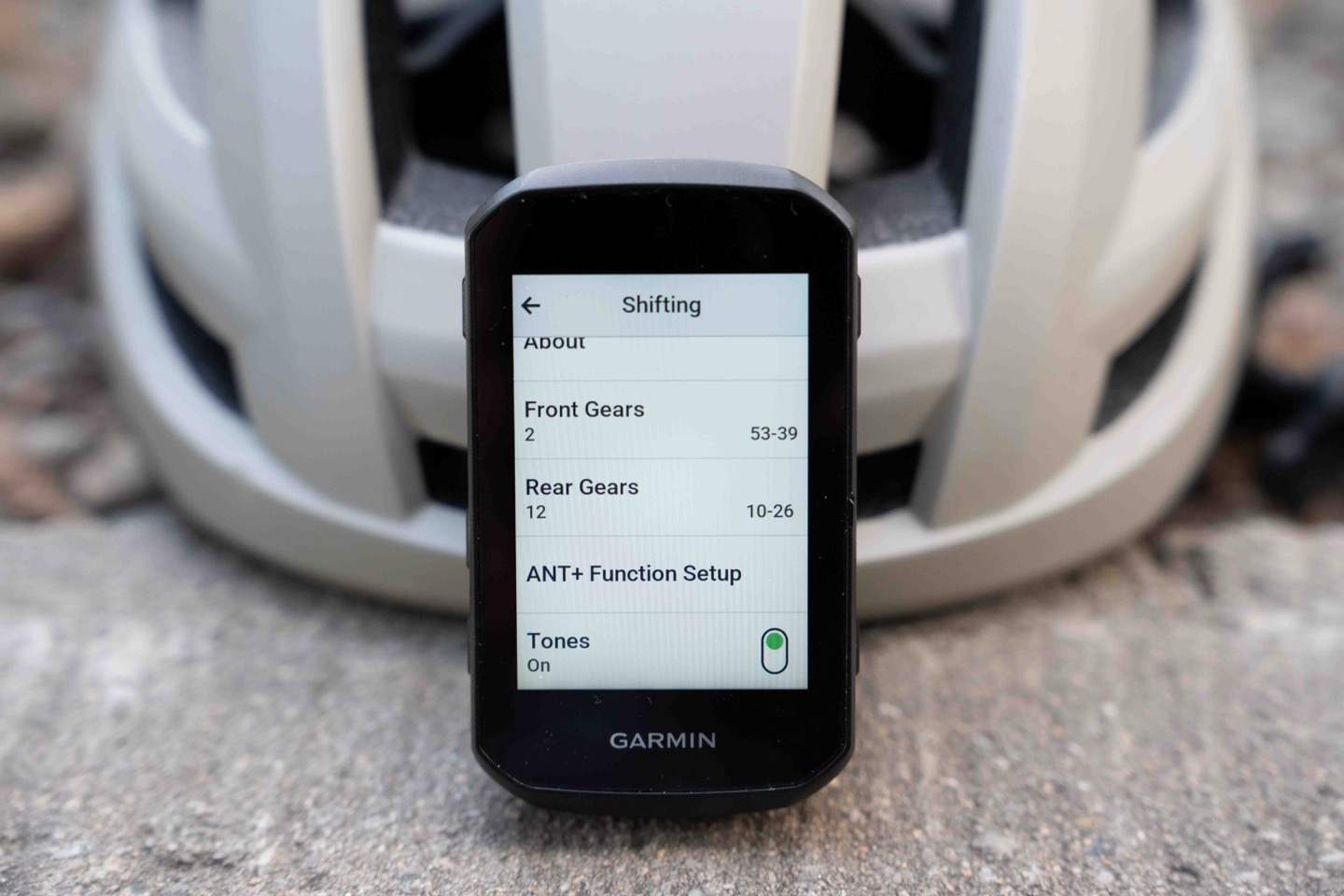
This is super handy, since you can just quickly tap it right from the handlebars without moving your hands anywhere else.
If you have one of those older Garmin Edge remotes (small buttons), you can also trigger it that way. Though sadly, Garmin doesn’t sell them anymore.
Of course, all of this bike bell dinging can also be accomplished by a $3 bike bell, but what’s the fun in that? While I don’t think the speaker is a massive change to your on-bike riding experience as a whole, I think it is a nice upgrade. The sounds are more pleasant, and the overall experience simply feels more refined. In many ways, it’s Garmin taking a page from the Apple playbook of adding refined polish as a way to generate sales. Given it works for the rest of the bike industry too, might as well use it here.
Navigation, Routing, and More:
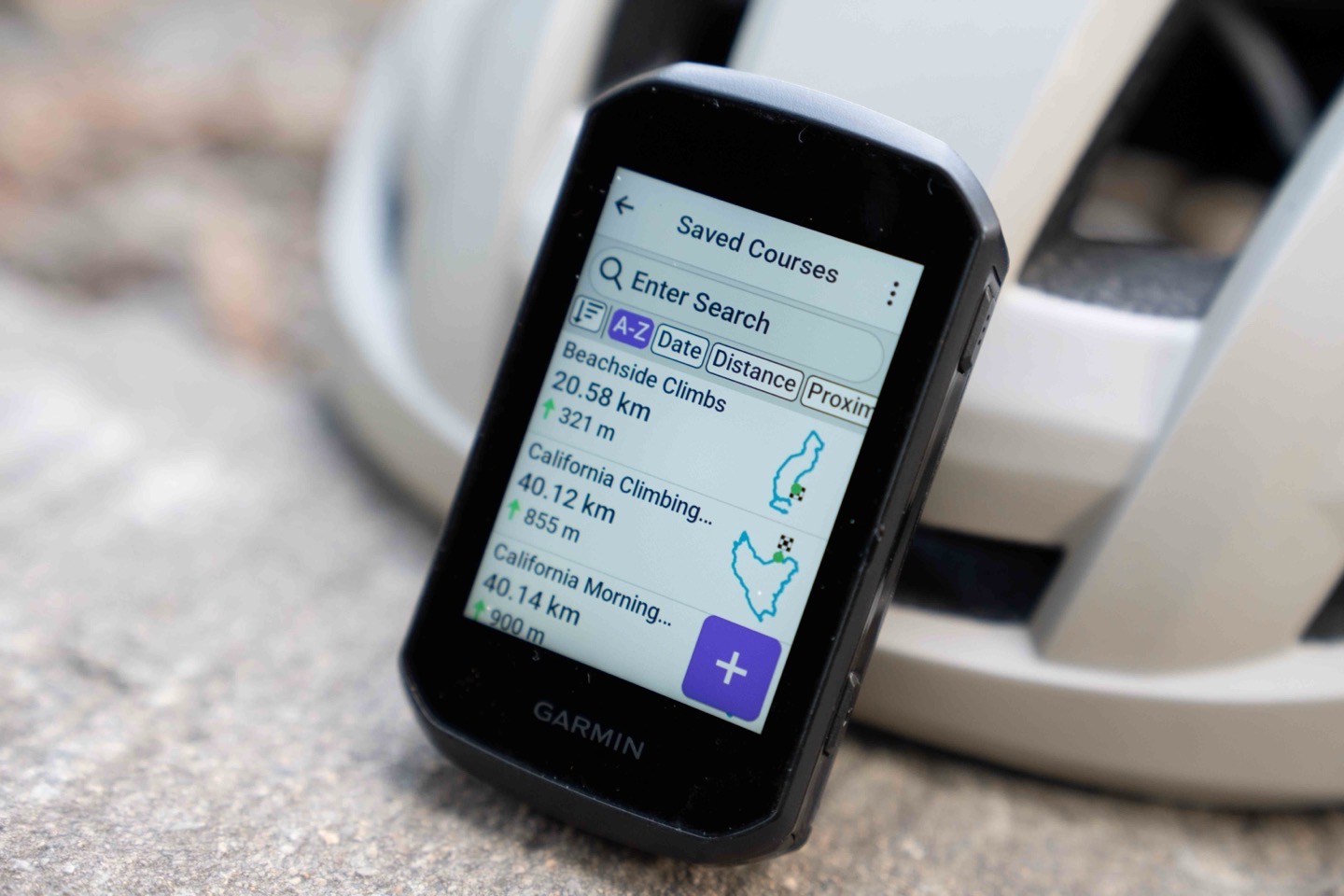
In terms of new features in the mapping/navigation realm, much of this has remained the same. However, with the updated processor, things now render on the maps far faster than before. And also notably, the maps have considerably more detail than before. Route calculation was already substantially improved in more recent Edge 840 firmware, so there’s not a major difference here. There’s really no meaningful time in terms of route calculation; it effectively happens instantly to your eyes (but is offloaded to the background to finish up later portions of the route).
If you watch the video, you can see some of this in terms of speed of panning around and such (check the video for this).
In terms of mapping, fully Garmin TopoActive map downloads continue to be free for the entire globe. However, with the Edge 850 you now get 64GB by default (versus 32GB previously). This allows you to easily download two full regions (notably Europe & North America) without any issues. Generally speaking, you could squish both into the 32GB previously, but this ensures no issues. You can add as many regions as you’d like, assuming they fit.
You can add regions via Garmin Express on a desktop computer (far faster), or via WiFi directly on the unit itself (super slow, basically has to run overnight). TopoActive Europe is 18.9GB, and TopoActive North America is 12.9GB (though, you can load a slightly smaller US-only map, if you download via computer. Same goes for Europe, and breaking it apart.
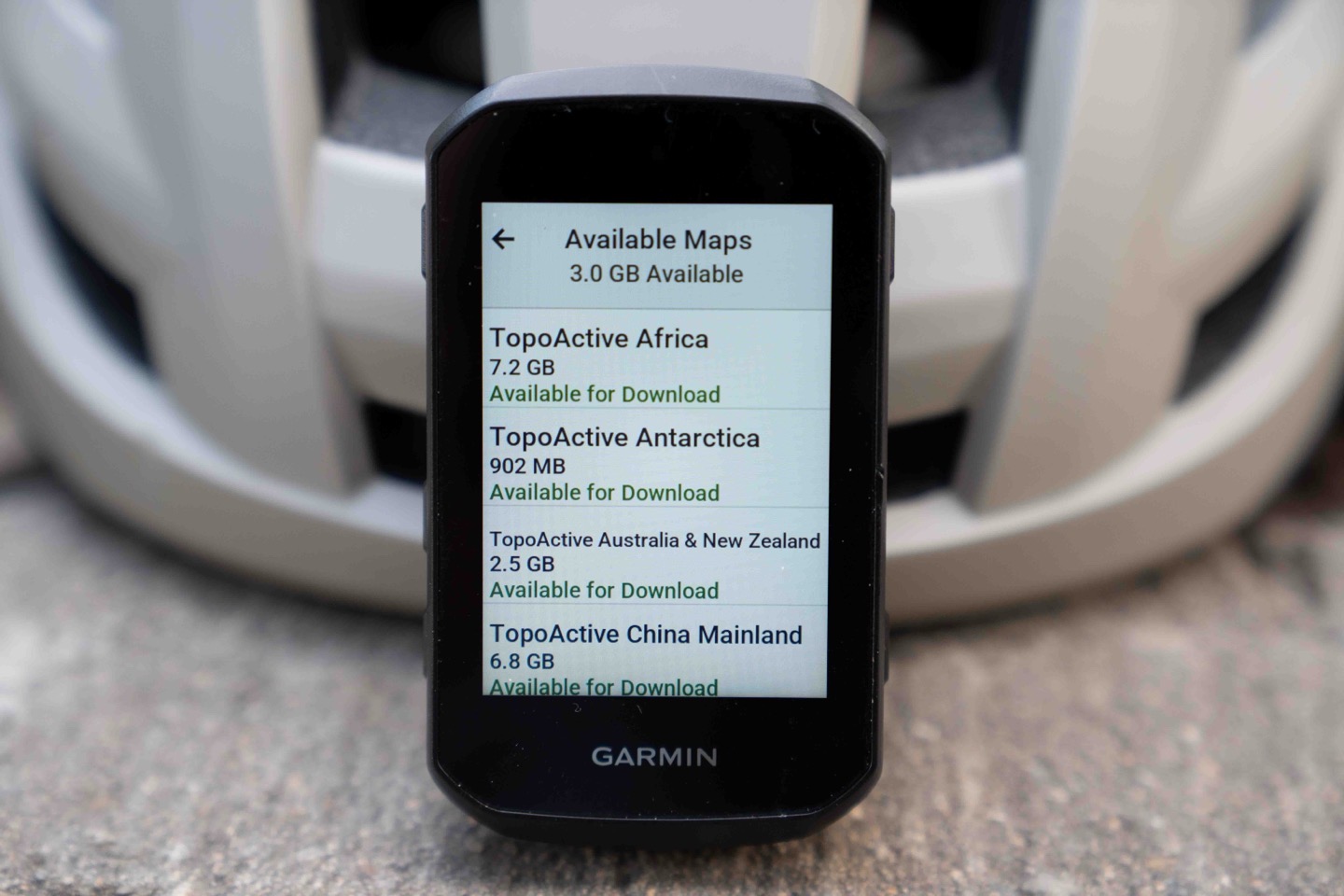
As I keep harping on, this is sorta a pain in the butt when you travel. While I do truly appreciate Garmin offering the single large map size to just take care of the entire continent, I really wish they’d also offer smaller country/regional maps like all their competitors do. It just makes it viable to get maps when you forget to download the maps before landing elsewhere. Plus, it’d seem that it undoubtedly saves on their internet bandwidth bill, since each map download/update being 10-15GB is pretty substantial compared to a smaller country/region at 300-500MB.
In any case, when it comes to navigation on the Edge 850, you’ve got a few core choices:
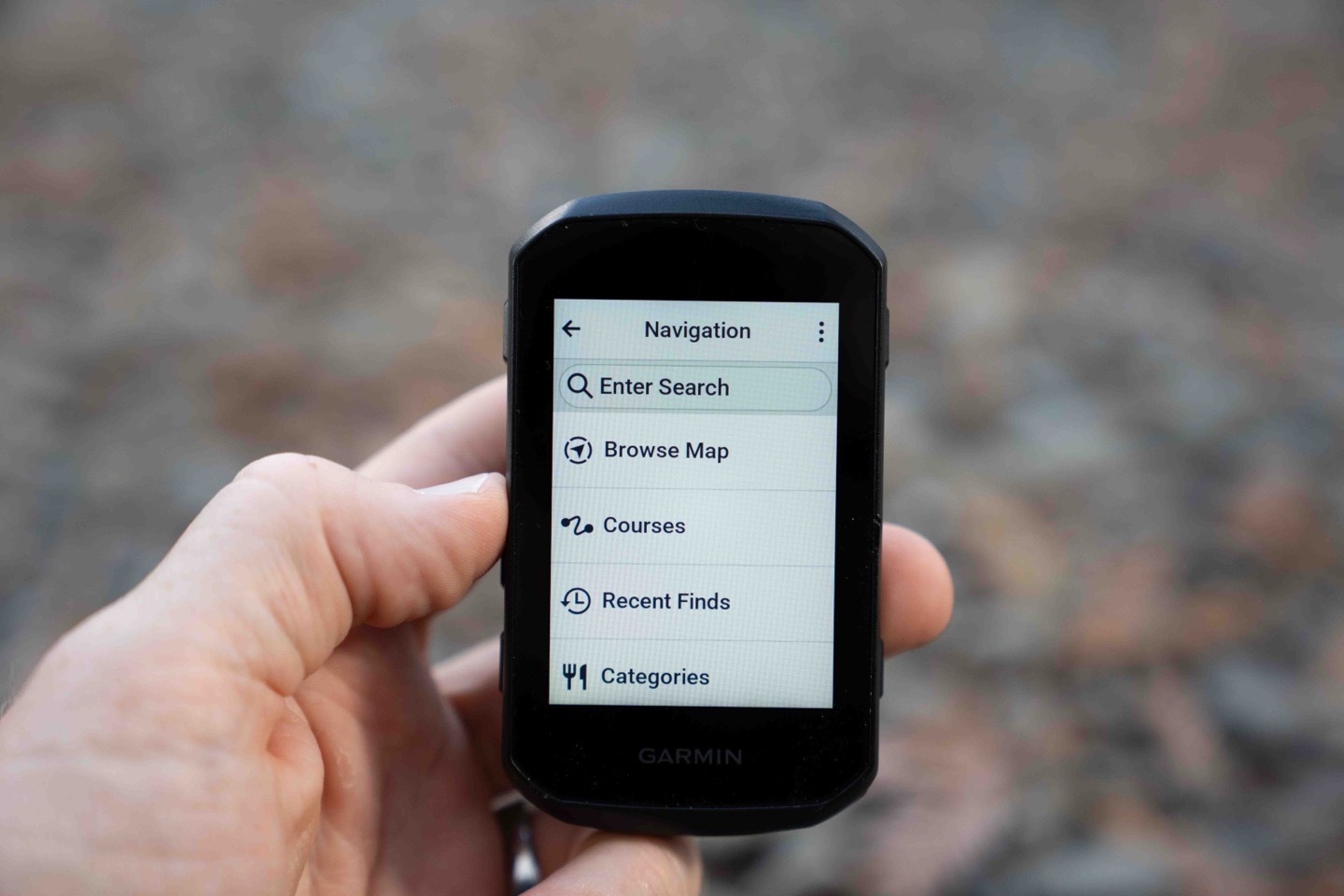
On the Edge 850, you can search for things by name (which you can’t do on the Edge 550), but you can also sift through the POI categories and simply route to a POI quickly and easily.
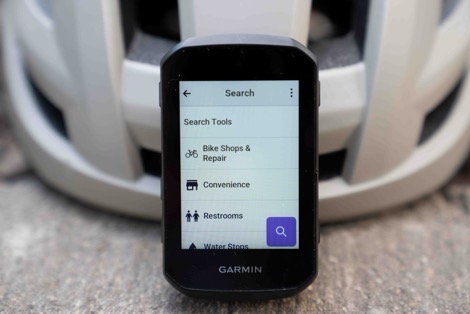
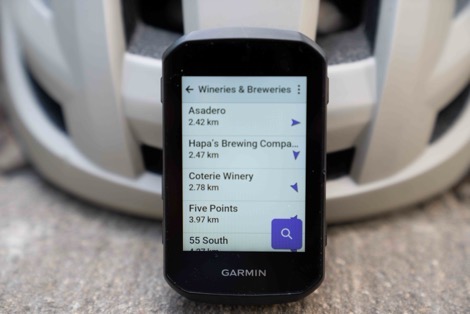
Nonetheless, in approximately 99.994% of the times, I’m creating a route ahead of time on Strava or Komoot (and rarely Garmin Connect, though there’s nothing wrong with it, I just have numerous non-Garmin devices that I sync routes to). Though it should be noted that Garmin has increased the surface types in Garmin Connect recently (e.g., Gravel vs Road), which should help with route planning. Again, the Garmin tools are actually really good, but for my use case in syncing to Garmin/Wahoo/Hammerhead/etc…I just use Strava as my single neutral repository for almost everything.
So, when I create a route on Strava, it automatically syncs to the Edge unit within a few seconds wirelessly, automatically. Here on the Edge 850 it’ll automatically show on the homepage as the most recent synced ‘thing’ (if you had just synced a workout, it’d show that instead, etc…). I can tap the route to load it, or dive into the Navigation/Courses page to load up other routes I may have.
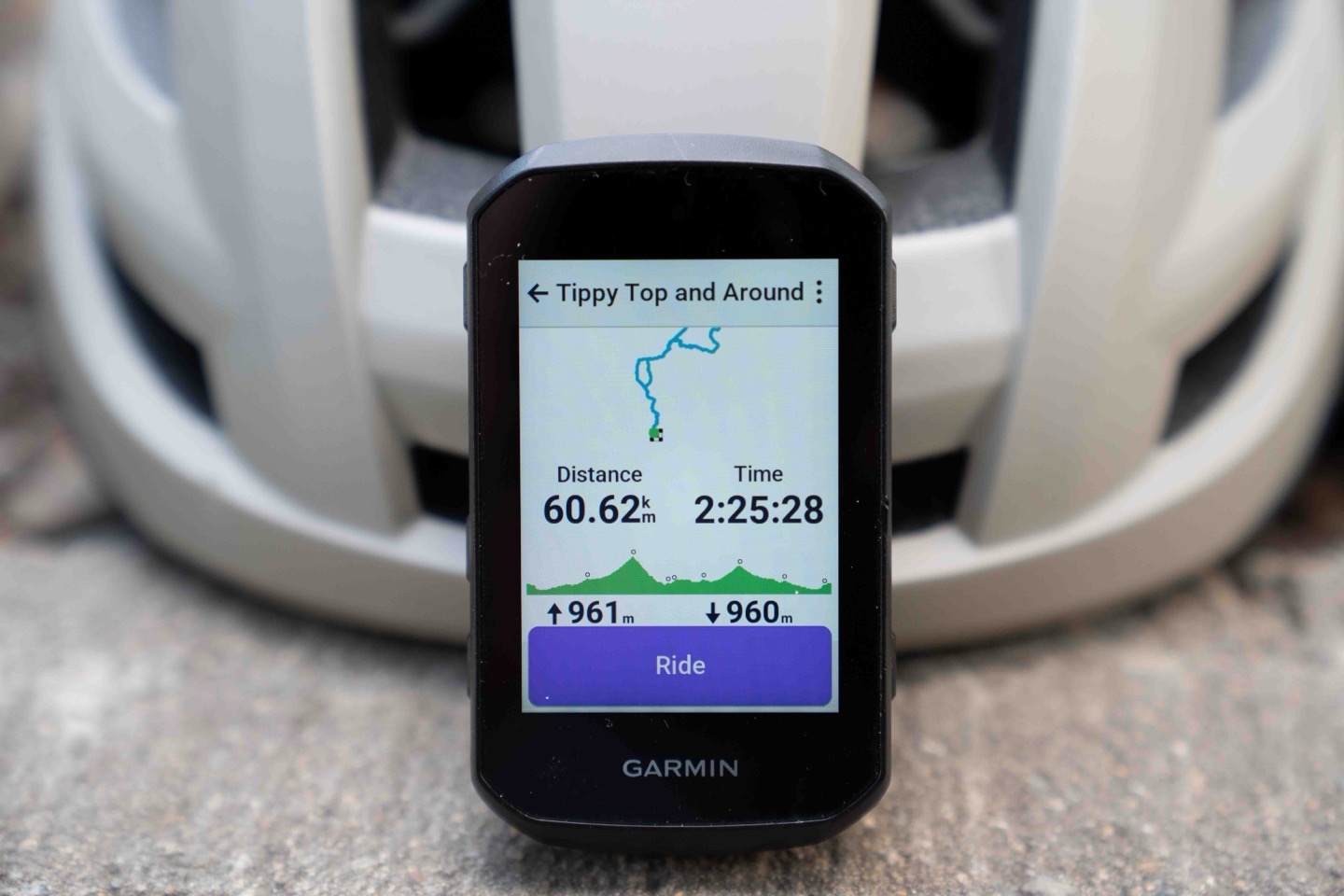
I’m honestly surprised we didn’t see Garmin add some sort of folder structure here. Hammerhead added it a year or so ago, and it’s just so damn good for organizing routes. Especially when you have tons of routes.
Once I select a route, I can see details about it, including the elevation profile, distance, climbs, and more.
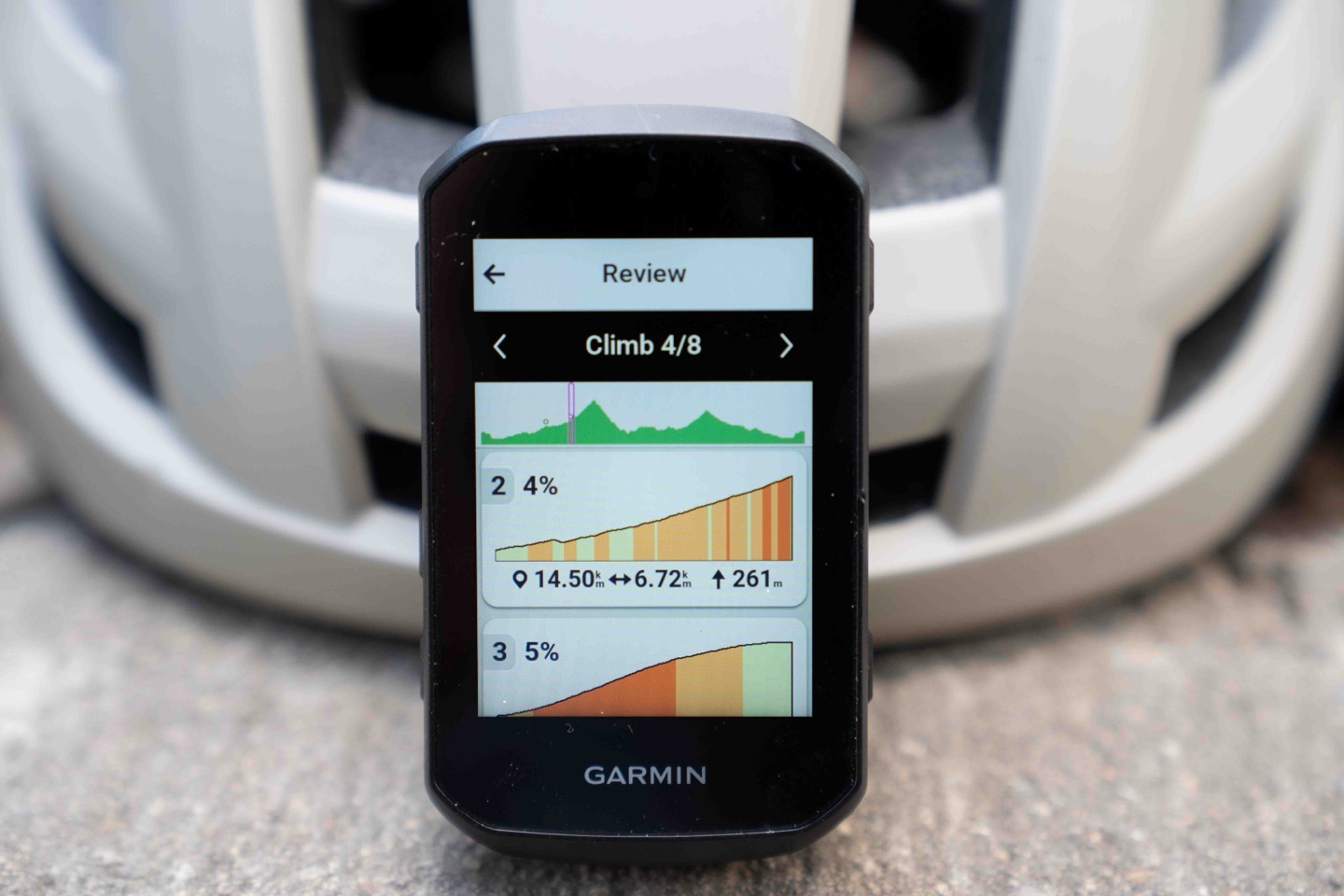
One of the things you’ll see is the nutrition requirements. I don’t really understand why these are so incredibly low. Like, something is hard wrong here:

I should most definitely be eating something on a 40km gravel ride with 3,000ft of climbing on a hot day…and definitely taking more than 400ml of water in total.
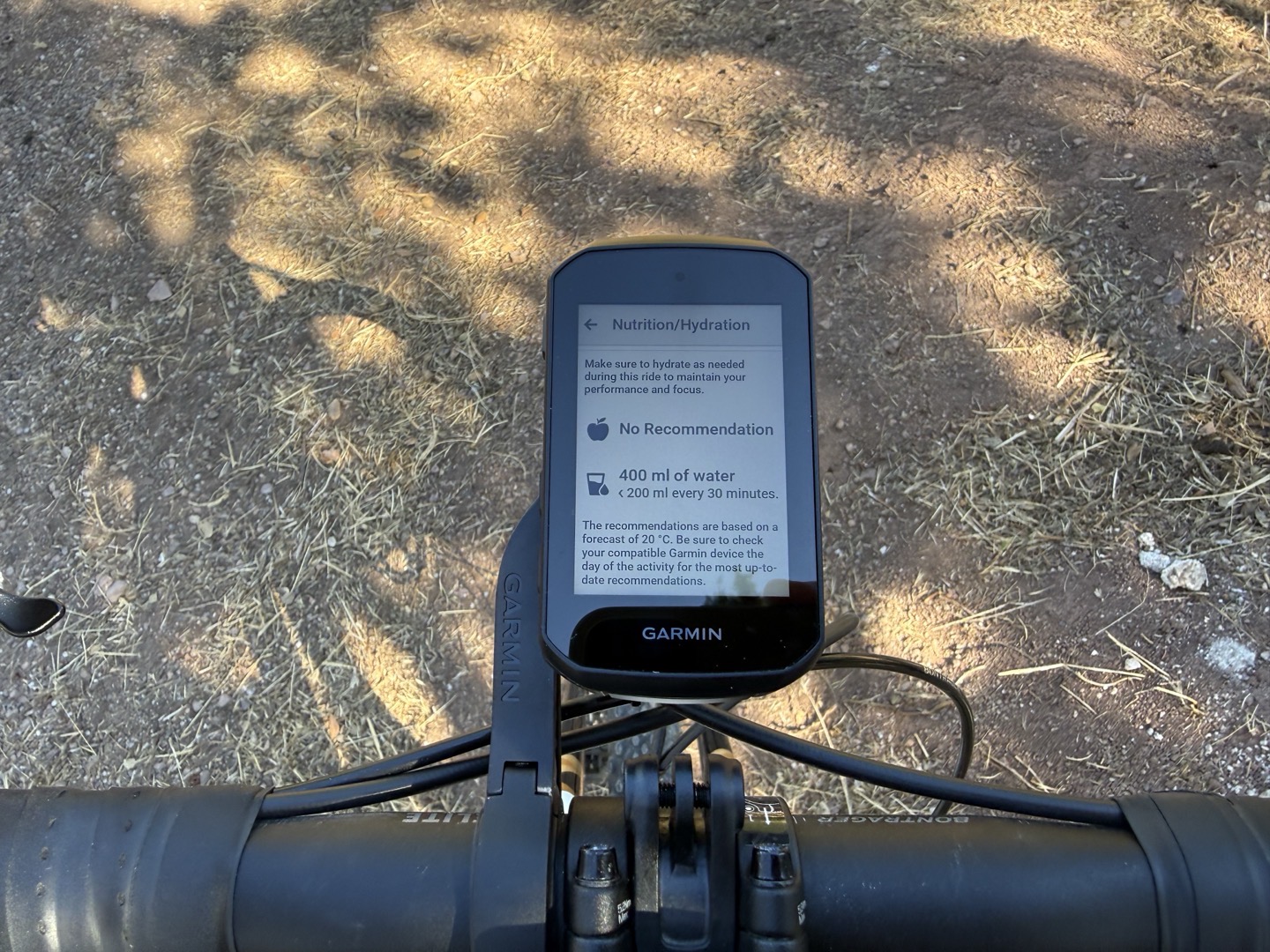
Some rides I’ve had closer amounts for water, like this one here that suggests 3 bottles of water over 2.5 hours on an 80°F+ day. Though, the nutrition side seems pretty low by most modern standards. This is one of the new Edge 550/850 features, but it doesn’t seem to be working well somehow.
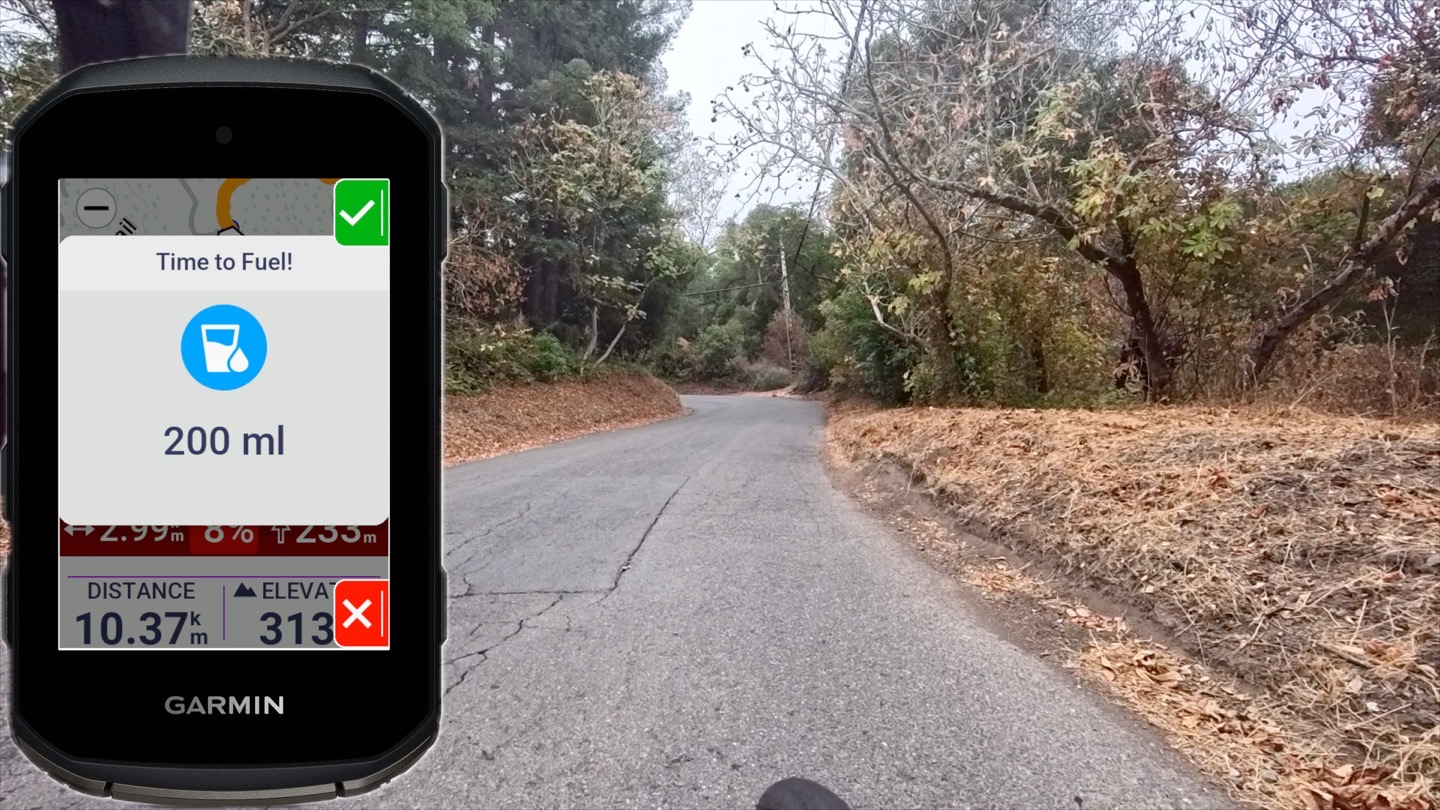
Nonetheless, once you’re ready to start riding, tap the ‘Ride’ button to load up the course. If you’re not at the course start point, it’ll offer to route you there. I generally ignore/skip this if I can just navigate myself to it (e.g., a few blocks away). Once you join the course, it’ll automatically start the route and say ‘Course found’. As you ride, you’ll get turn prompts as you approach a turn, as well as a mini-map pop-up screen (regardless of which data page you’re on):
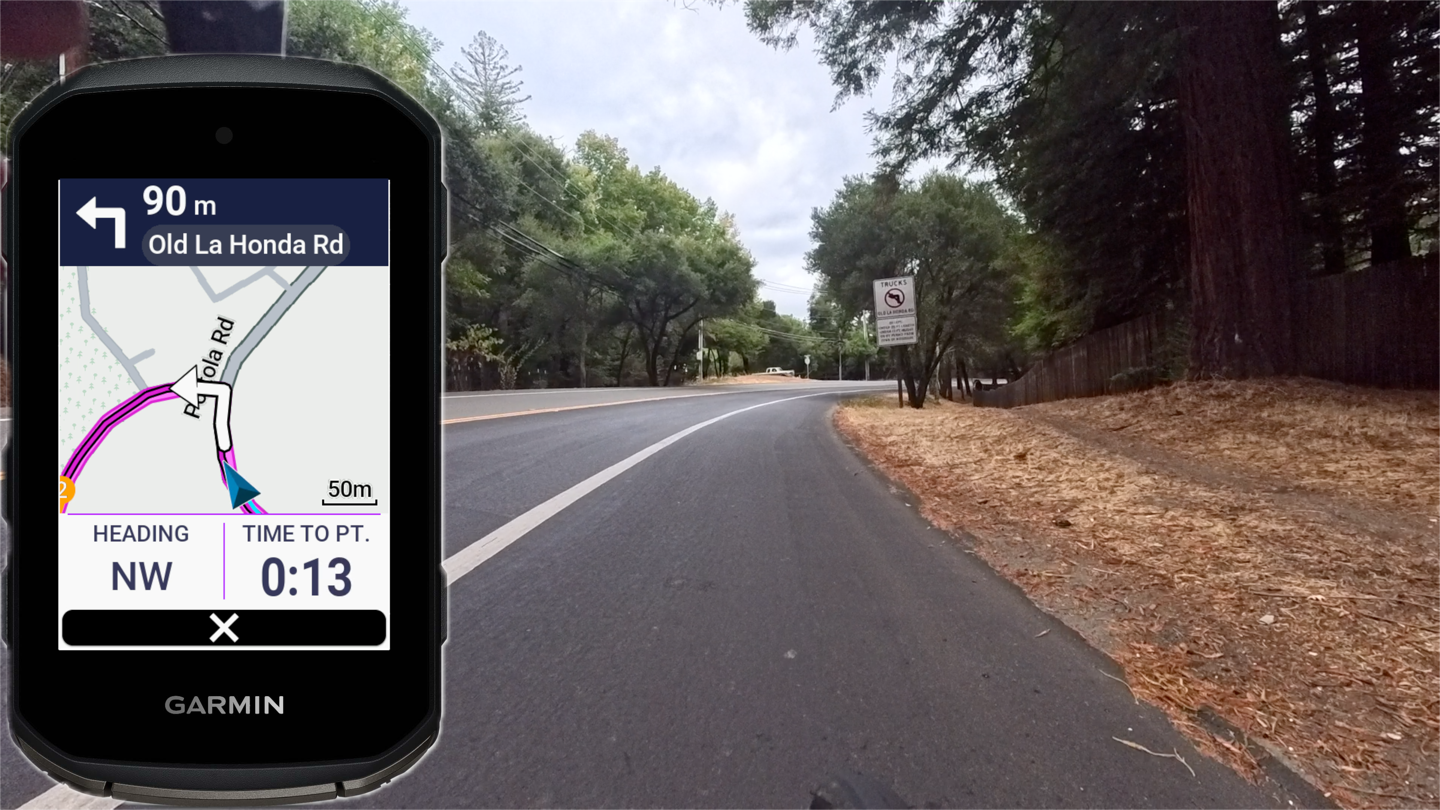
If you were to go off-route, you’d also get automatic re-routing calculations. It’ll first pop-up a box that gives you a chance to pause or end navigation (perhaps you’re just quickly doubling back to grab something you dropped). Otherwise, it’ll just automatically begin to calculate after 10 seconds or so.
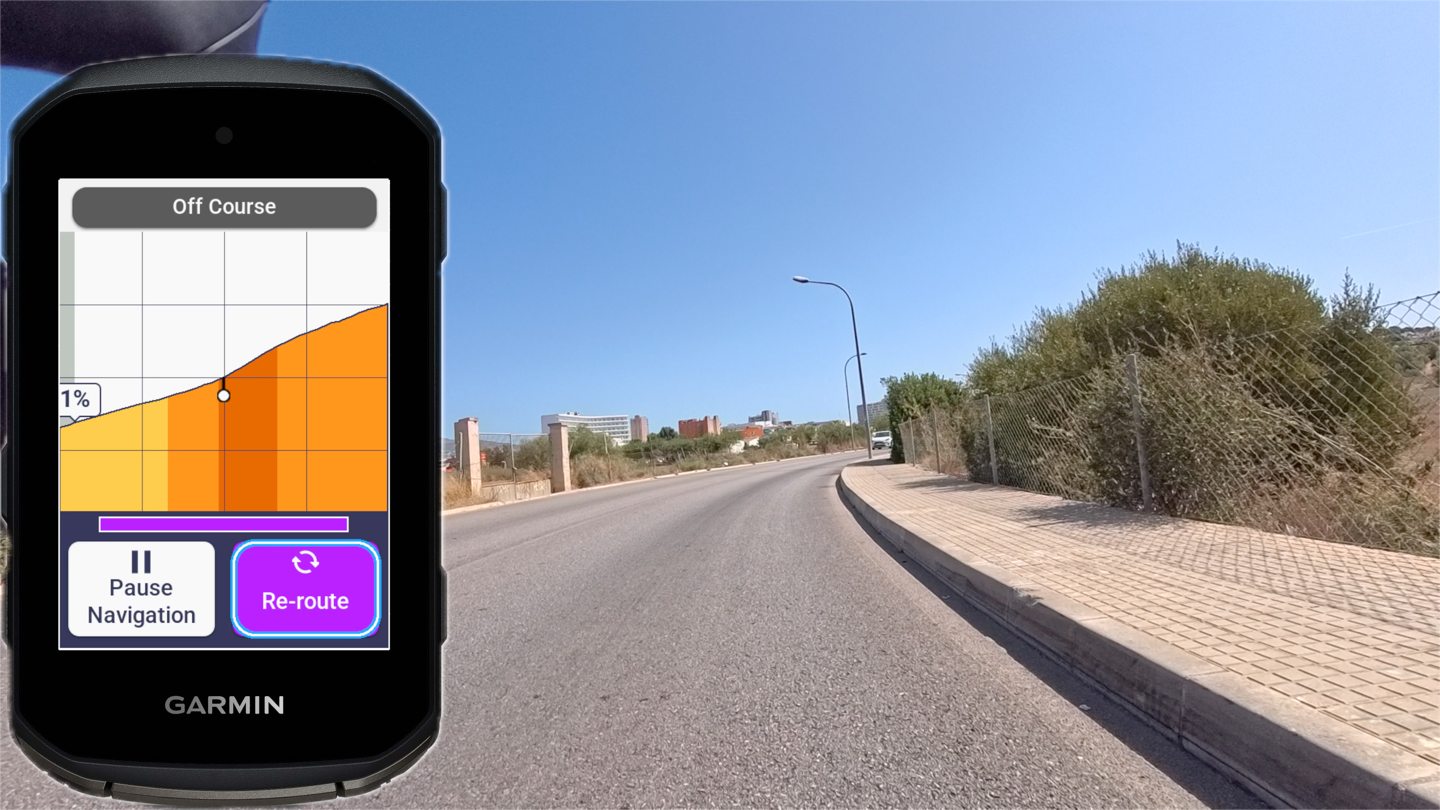
(This screenshot I have is from the Edge 550, I need to regenerate the full-screen recording overlay of the Edge 850 variant of that ride, but it’s nearly identical.)
The automatic recalculation is virtually instant. I suspect it’s simply doing this behind the scenes while it waits for your confirmation, and then boom, it’s ready.
Beyond that, you can always end navigation at any time, as well as navigate anywhere else at any time. The Edge 850 includes a full POI (points of interest) database, as well as the ability to enter actual street addresses. Generally speaking, street address entry is pretty cumbersome from such a unit, but hey, it’s there if you want it. You can also do this from Garmin Connect (smartphone app), and send it to the Edge too, which is far more efficient.
Now, whether or not you have navigation, you’ll have ClimbPro, which continues to be one of my favorite features. ClimbPro is supported on both planned routes and free riding. This means that if you’ve got a planned route, then it can more accurately know the exact course, and thus, the exact climbs you’ll be tackling. Versus with free riding mode, it’ll determine the climbs based on assuming the most logical way up that route (so, if you were to turn off early, then it’d probably assume you’re going to the top of the climb).
You’ll see a note as you approach the start of a climb:
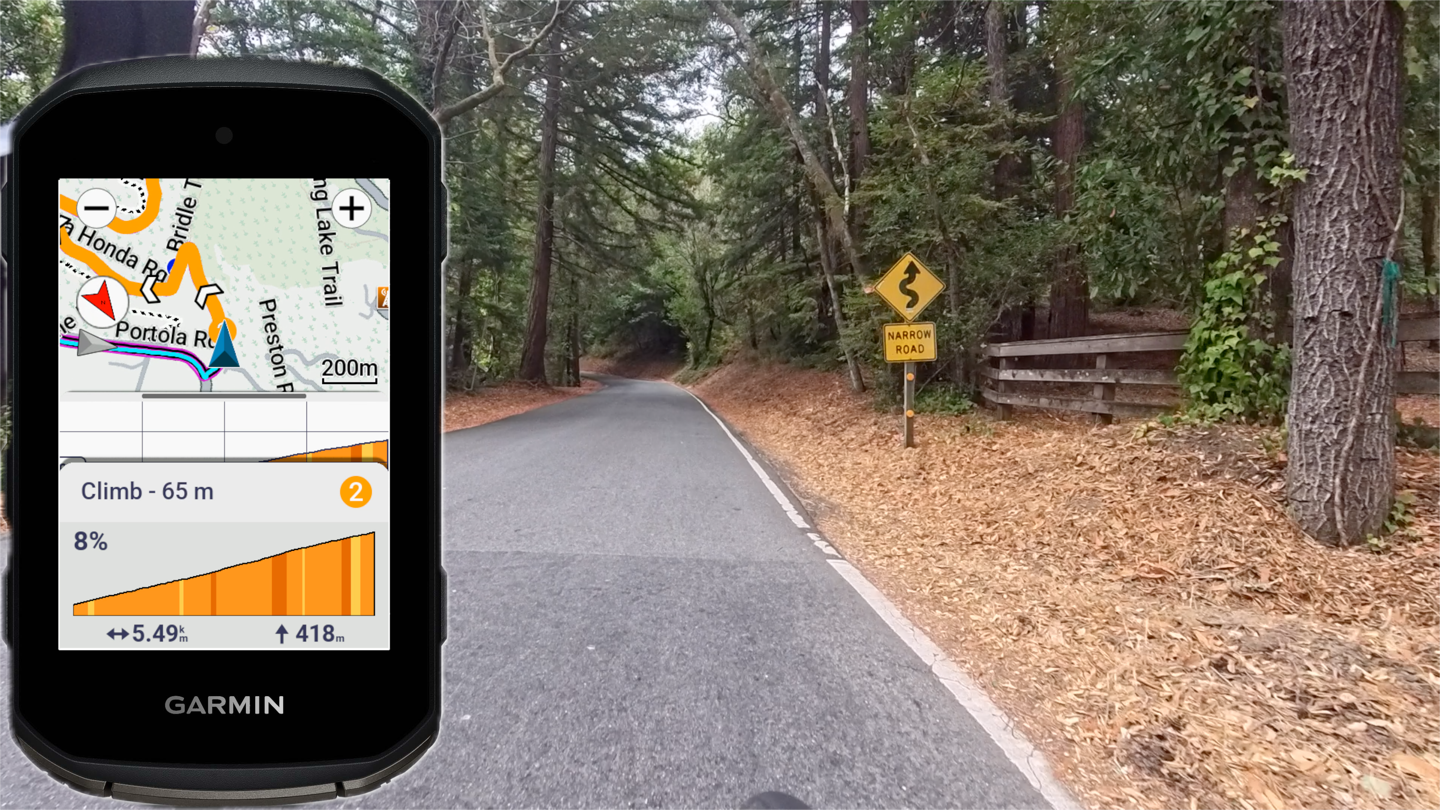
And then details about the climb once you’re on it:

You can change the classification levels that it triggers for, or disable it entirely, if you want. I find it great to know just how much suckery I have left. Though admittedly, there are a few days of long mountain riding where 5-6 hours into it, I just don’t want to know anymore.
Now there are, of course, a gazillion features on the Edge series, including structured workouts (downloadable from Garmin Connect, TrainingPeaks, and plenty more providers). As well as Garmin Coach, and automatic workout suggestions. None of these have really changed in terms of the foundational aspects from the past.
One area that was tweaked though is that the Power Guide feature will now account for altitude/elevation. The Power Guide feature is roughly akin to Best Bike Split (except more basic than them), in that it takes a given course, and then, knowing your rider profile, lets you change how aggressively you want to ride the route to give you specific targets:

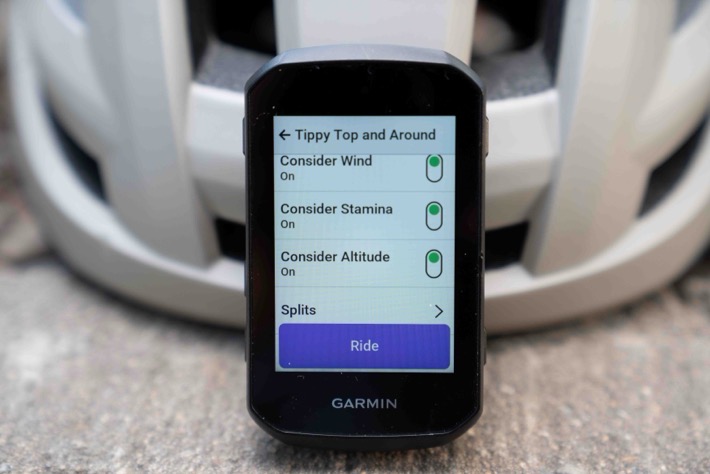
From there, it’ll give you constantly changing targets throughout the ride (which are based on the gradient). So if you have a long flat section, it’ll be the same. Whereas if you’ve got a constantly rolling course, you’ll see it’ll split it up into sections from just a few hundred meters in length, to a few kilometers. You can see these snippets in real-time:
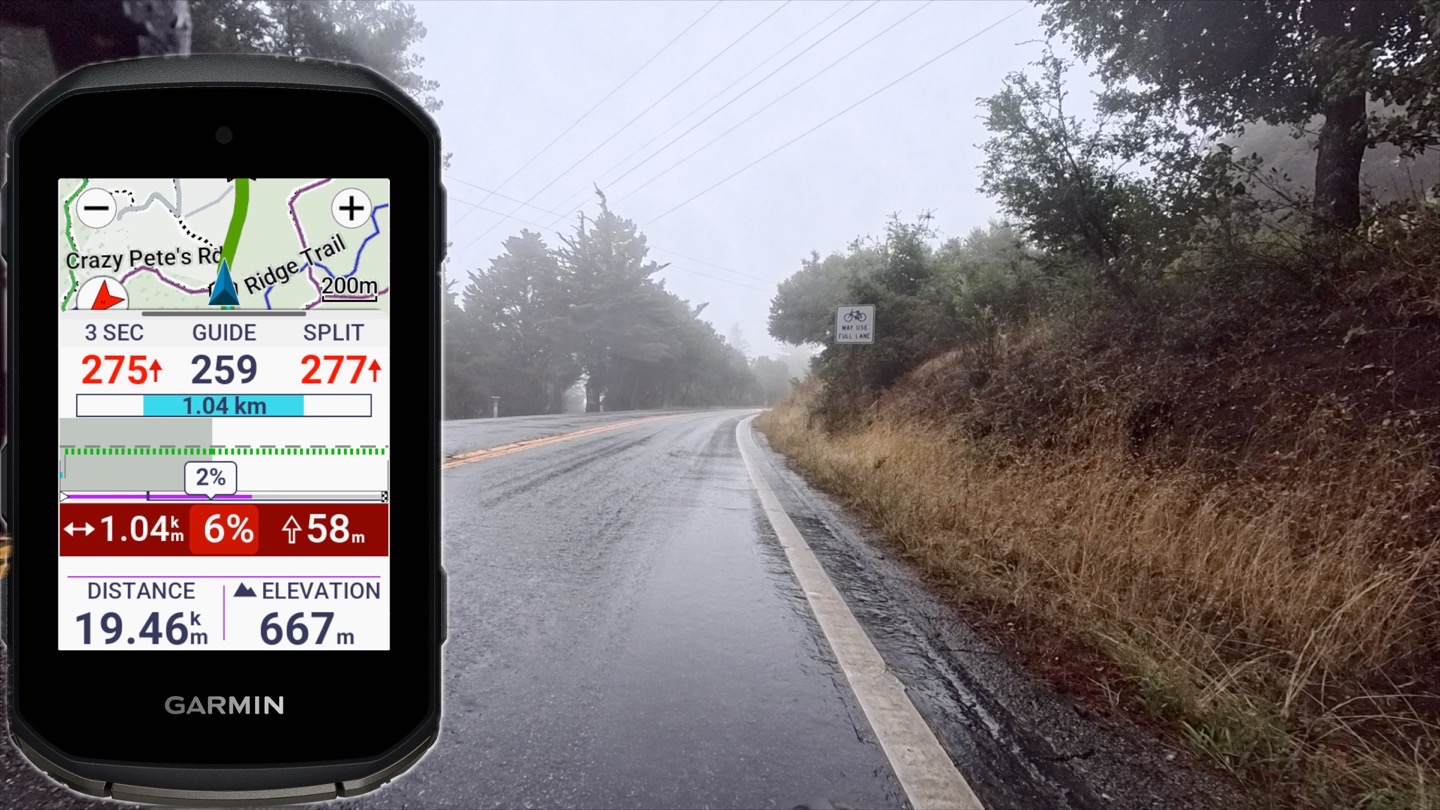
The idea being you can pace a race this way, towards a goal time, with it optimized for your abilities. With the Edge 550/850, it now accounts for the altitude of the route. Meaning, if you’re not acclimated to a high-altitude course, it’ll account for that, so it doesn’t kill you too quickly.
Brilliance or Battery Life:
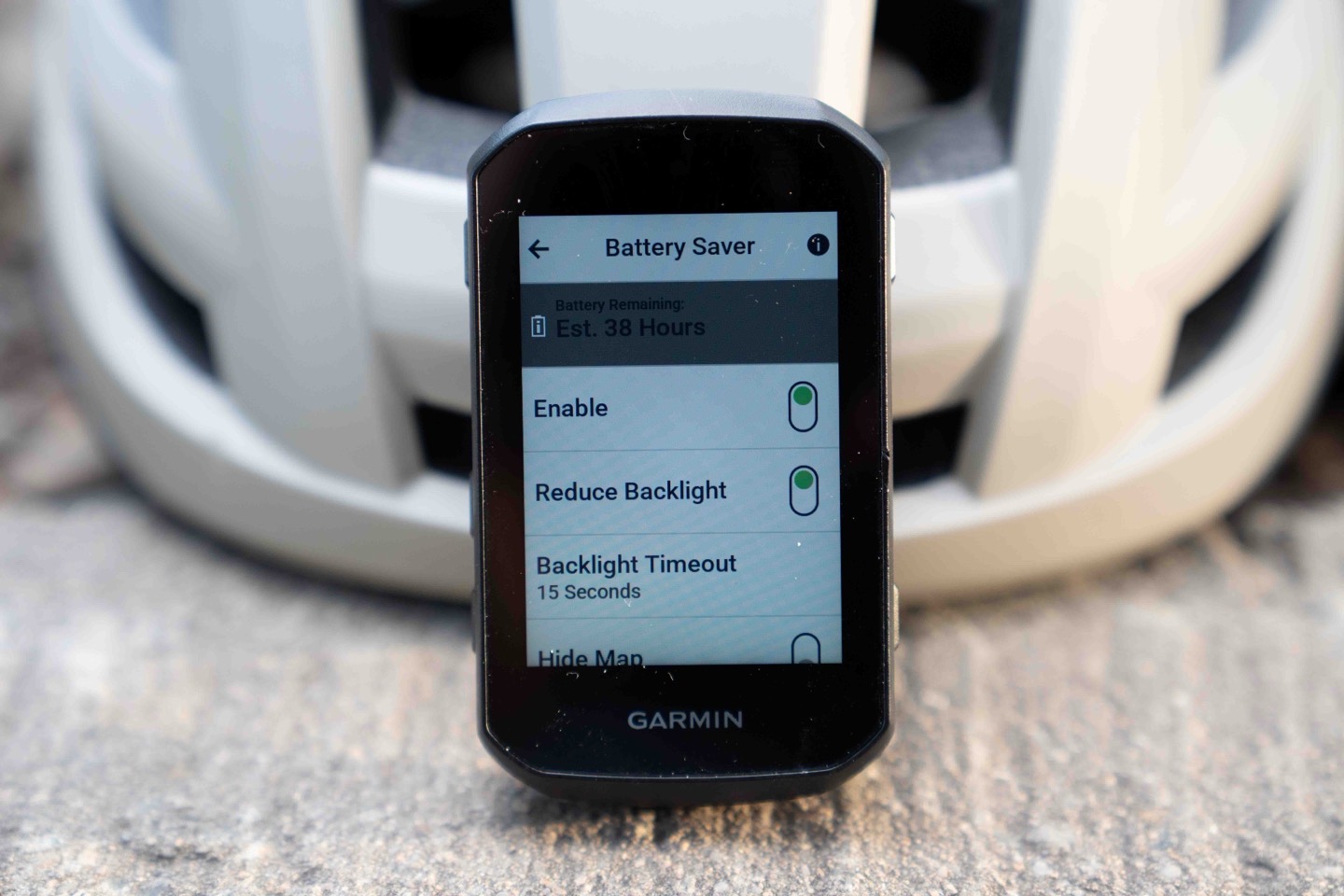
Much like the Edge 1050, you now get a much brighter display, except at a significant cost of battery. And slightly more problematically, there isn’t a choice anymore. With the Edge 1050, Garmin kept around the Edge 1040 Solar (including all the feature updates), allowing folks to choose ‘battery or brilliance’. Now, though, the Edge x40 series is most definitely considered prior generation, and thus will stop receiving major feature updates (it’ll continue to get bug fixes, minor things, etc).
In this case, the claimed battery life of the Edge 550 and Edge 850 units is a mere 10-12 hours in a standard configuration. What does Garmin define as standard? Well, it includes everything below, including dual-frequency GPS.
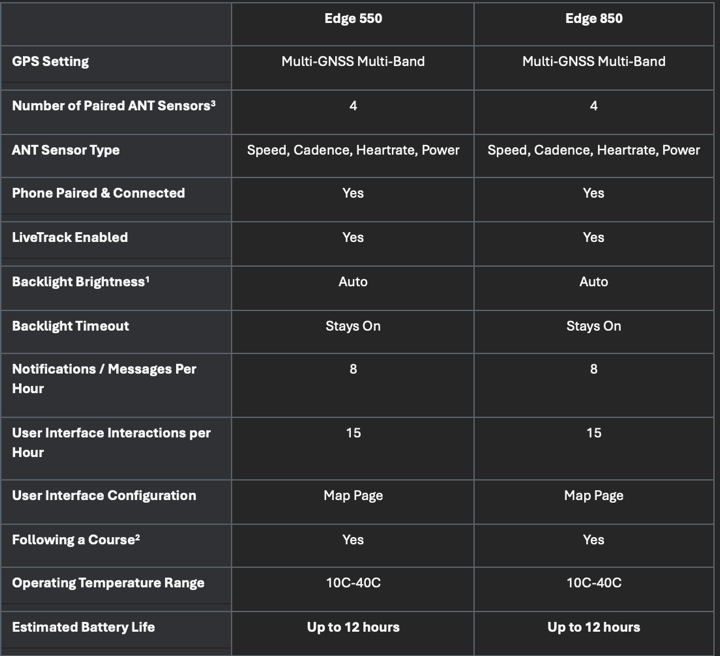
Across all of my rides, this setup has led to being near spot-on with the battery claims (for better or worse). For example, here’s a 2.5-hour gravel ride on a warm toasty day, with navigation enabled, and me spending about half the time on some sort of climbing+map or map navigation page:
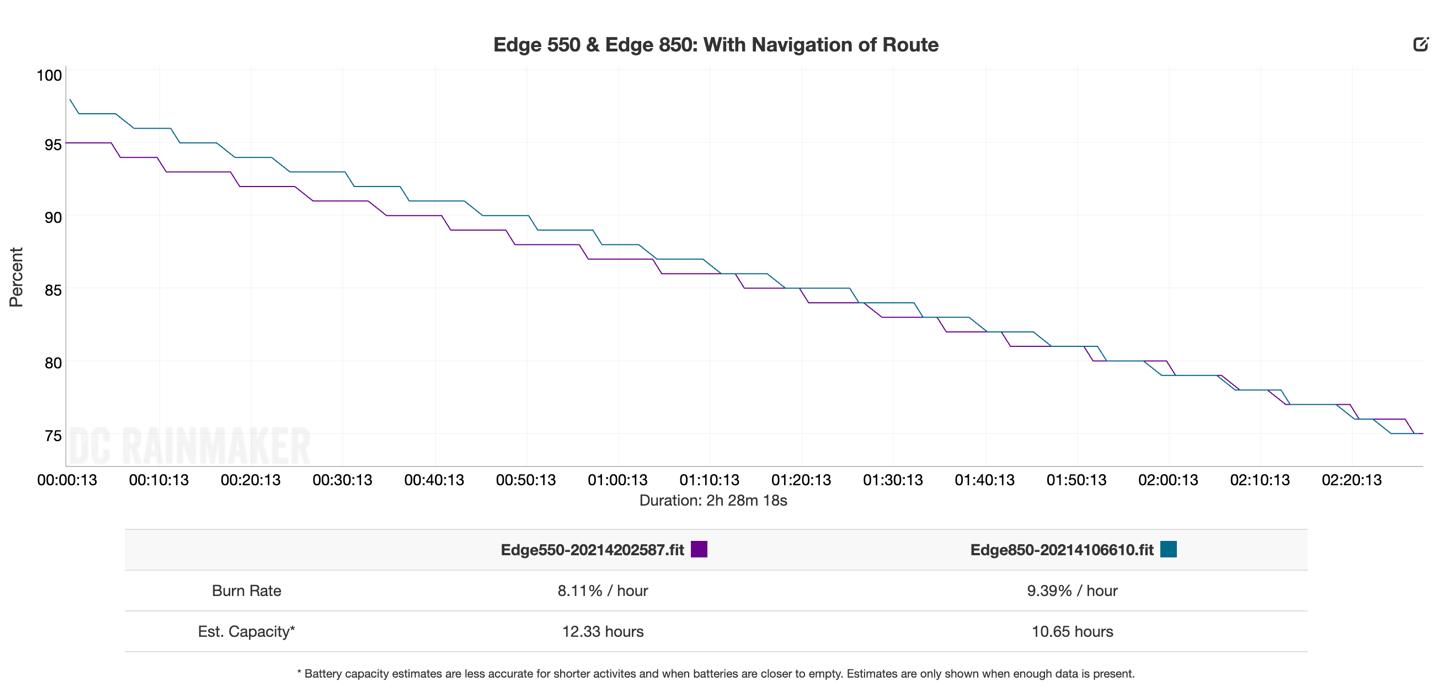
As you can see, estimated battery burn puts me at 10-12 hours on the Edge 550 & Edge 850.
Here’s another ride, this time a road ride along the coast for just short of 90 minutes. In both of these cases it was connected to an ANT+ power meter, ANT+ heart rate sensor, ANT+ SRAM electronic shifting, and my phone for Bluetooth LiveTrack. No navigation was enabled:
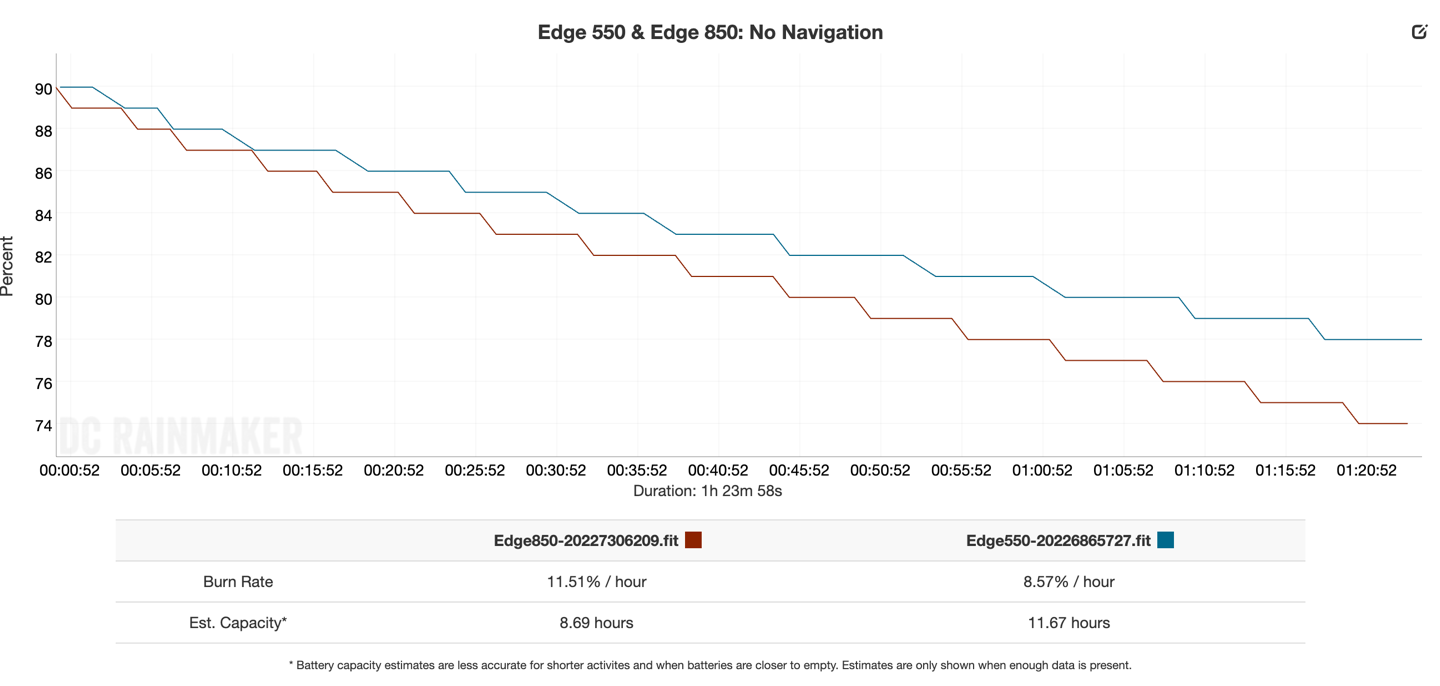
For whatever reason, the Edge 850 was a bit less this time, though the Edge 550 again was in the 10-12-hour range. The key thing here is that navigation was not enabled.
Now, for this next one, I tried as darn hard as possible to keep it purely on a data-only screen. The small challenge with that is that when ClimbPro would kick in (for a few climbs lasting about 25-30 minutes in total), it’d shift back to the map+climb screen. But nonetheless, the rest of the time, it was just data only. Here’s that.
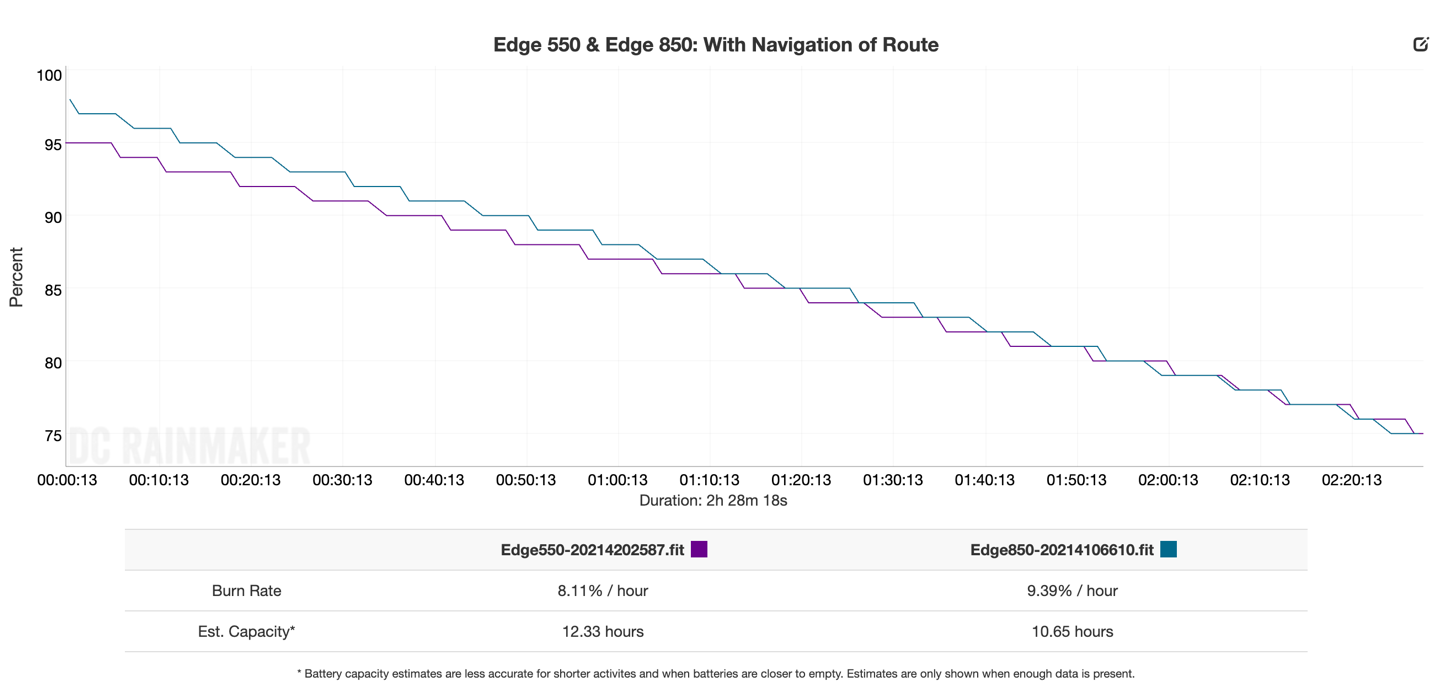
As you can see, that improves things a bit, but we’re still in the same general 10-12hr ballpark.
Next, what if I reduce the GPS setting from dual-frequency/multi-band, down to just All Systems. In most road-cycling cases, you’ll never be able to tell the difference between these two. But I was curious about the battery life differences:
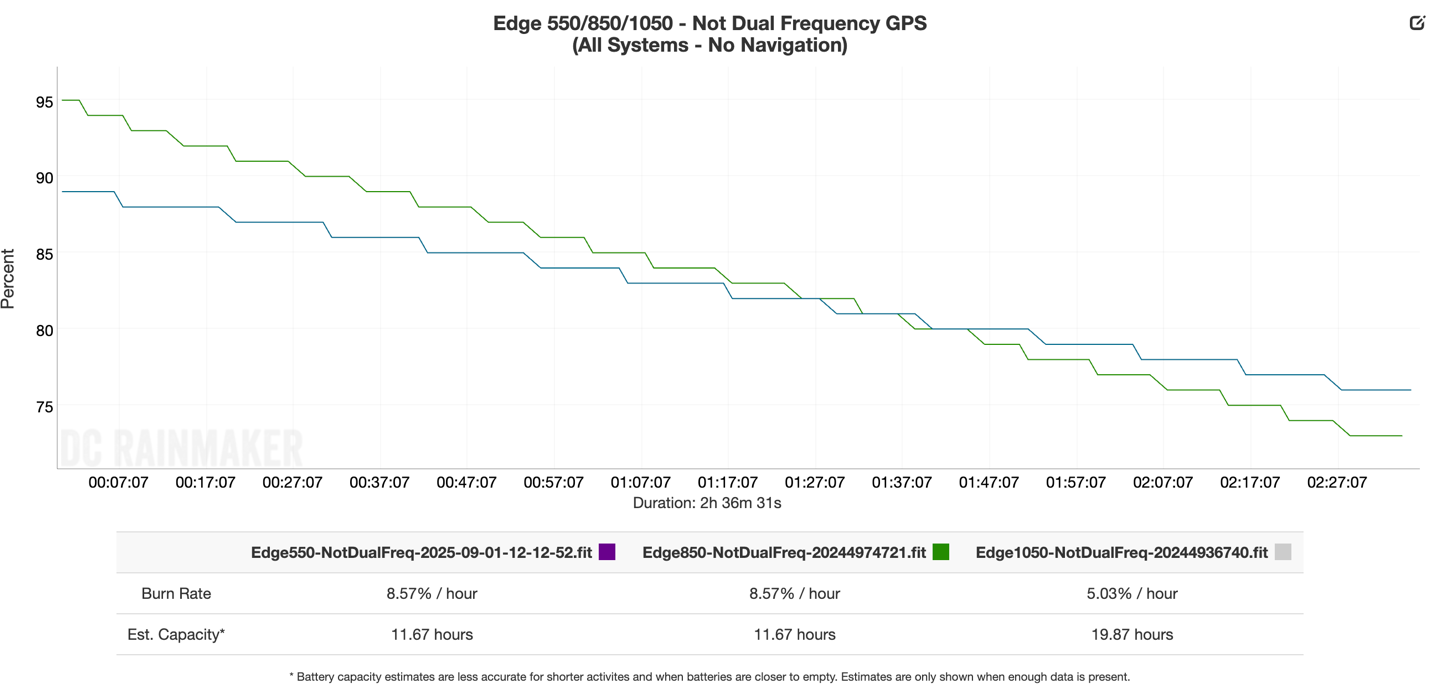
And you can see, that helps a tiny bit, but ultimately, it’s that super-bright display that’s burning the house down.
Finally, what if I changed the brightness from Auto to a set level of 30% brightness? Would I get the battery back? The 30% brightness level is basically the same as Wahoo’s ROAM V3 in a ‘full brightness always on’ configuration. First, here are the three side-by-side:
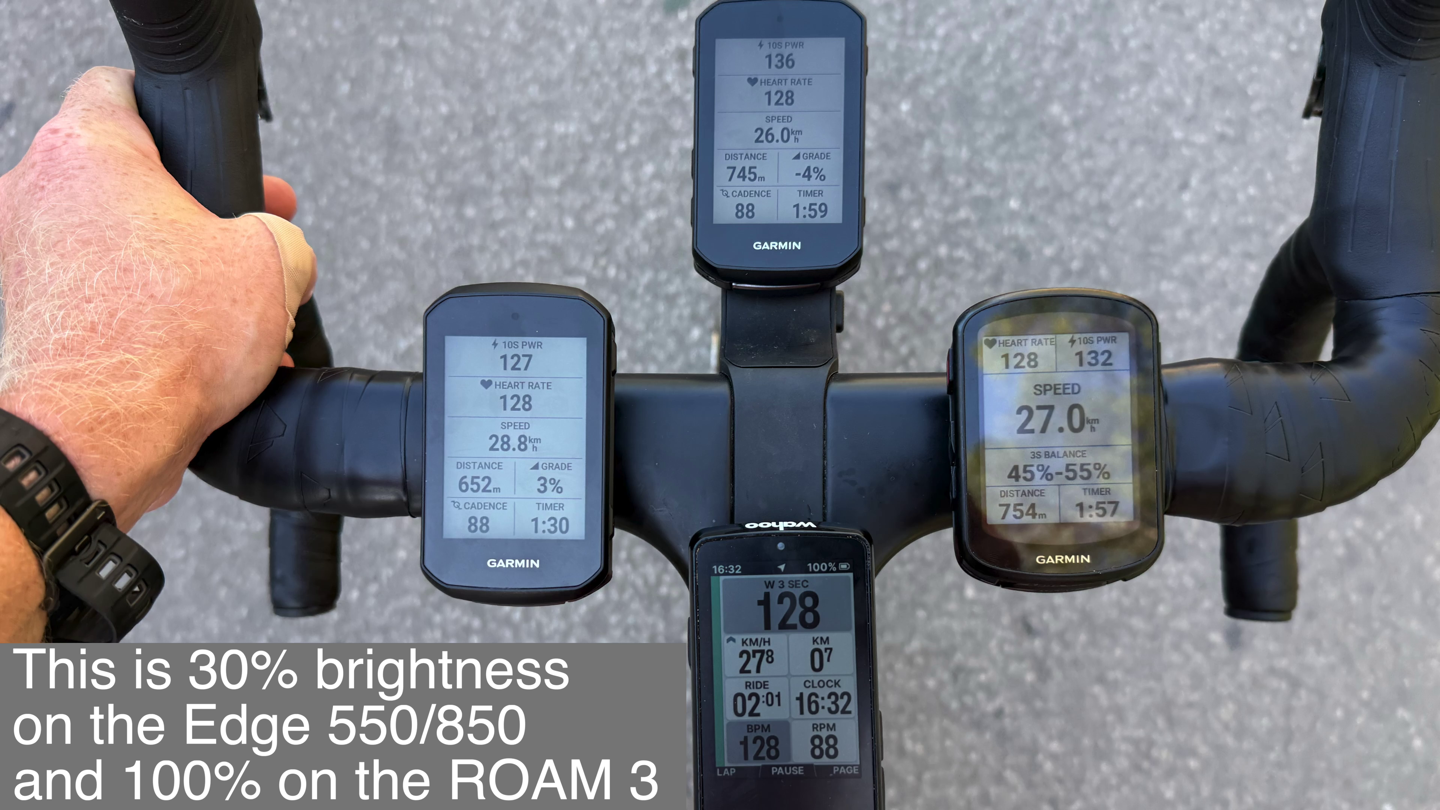
The visibility in this setting is perfectly fine for overcast days (honestly, more than fine) or anything that’s not super bright. But, it does struggle in direct summer sunlight in this configuration. (Side note: In my video I go on an entire tangent about how Wahoo fakes their battery %’s for the first hour of every ride, but I’ll sidebar that for now here.)
In any case, that basically doubled the battery life to 20 hours (the Wahoo ROAM V3 floated at 10%/hour, or 10 hours):
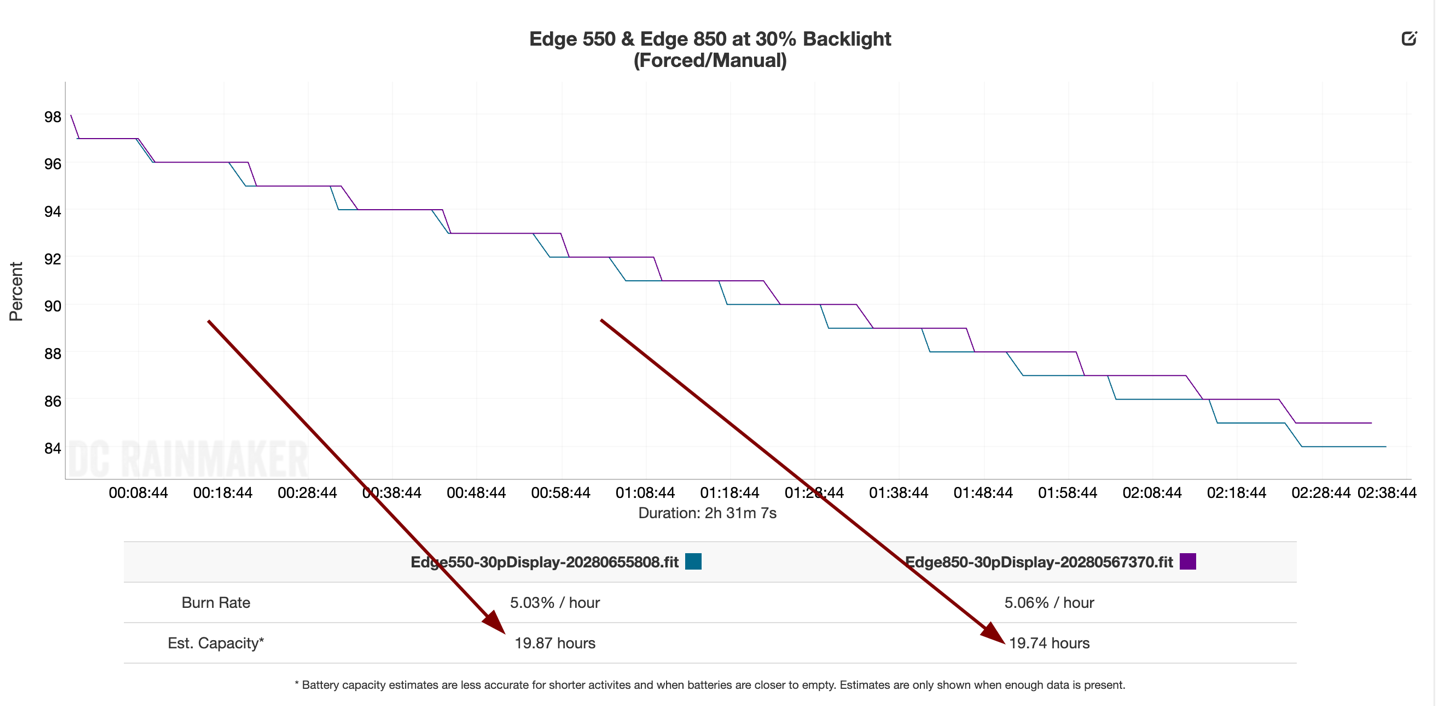
Still, Garmin’s display tech works best in the ‘Auto’ mode, in terms of dealing with bright sunny days. So in this case, it wasn’t a great user experience on said sunny day. On a cloudy day, it’d be great.
Ultimately, Garmin seems to be leaving a massive gap for their competitors to eventually drive through. Or, perhaps they already have with the COROS Dura. Albeit, to be super clear, it has but a fraction of the features of any Wahoo/Garmin/Hammerhead device, but with substantially better battery life than these new units. Of course, you can always just get an older Garmin unit and still have more features at a bargain price.
GPS & Elevation Accuracy:
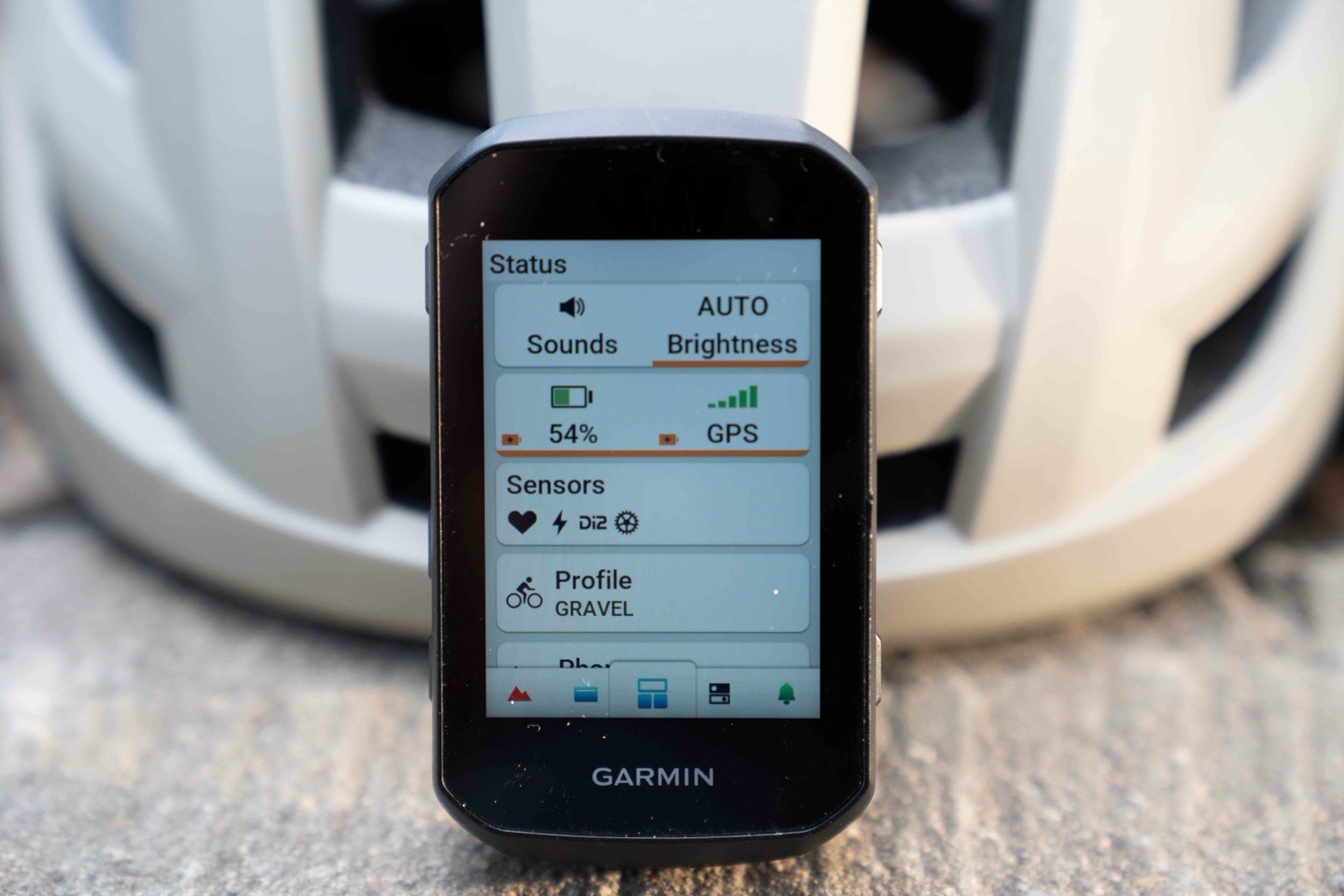
This will not be a complex section, or a long section. Frankly, I can just summarize this entire section with: Everything has been spot-on, even when lowering the GPS accuracy down, it’s still spot-on with its dual-frequency competitors.
Nonetheless, let’s quickly run through some things. We’ll start off with elevation first, just because I never do that first, and it’s 3:13AM and I need some variety in my life. Here’s this morning’s ride, which started in the sun, then climbed up into the clouds/rain/coldish, and then descended back down into the warm sunny valley below.
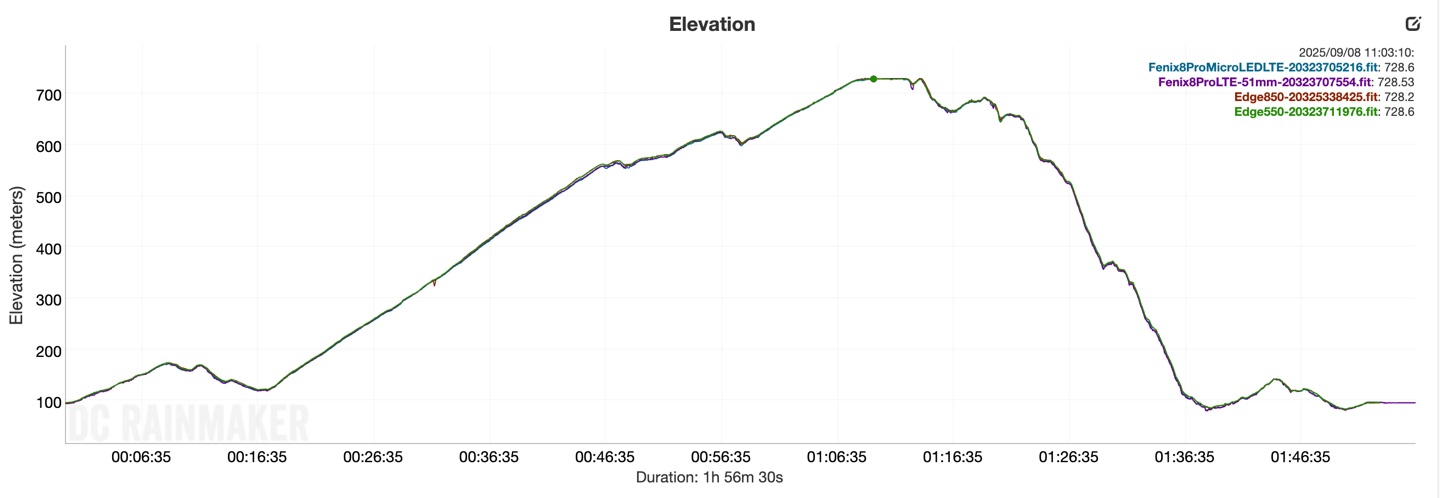
As you can see, everyone was stuck together nice and tight.
Next, another one, this time in the mountains back home, for a 2.5-hour ride. As you can see, they were all very close (the other two units were the Wahoo ROAM V3 & Edge 840). While it looks like there was some separation (and there was), it was a mere 5 meters apart (the ROAM varied, rightly or wrongly).
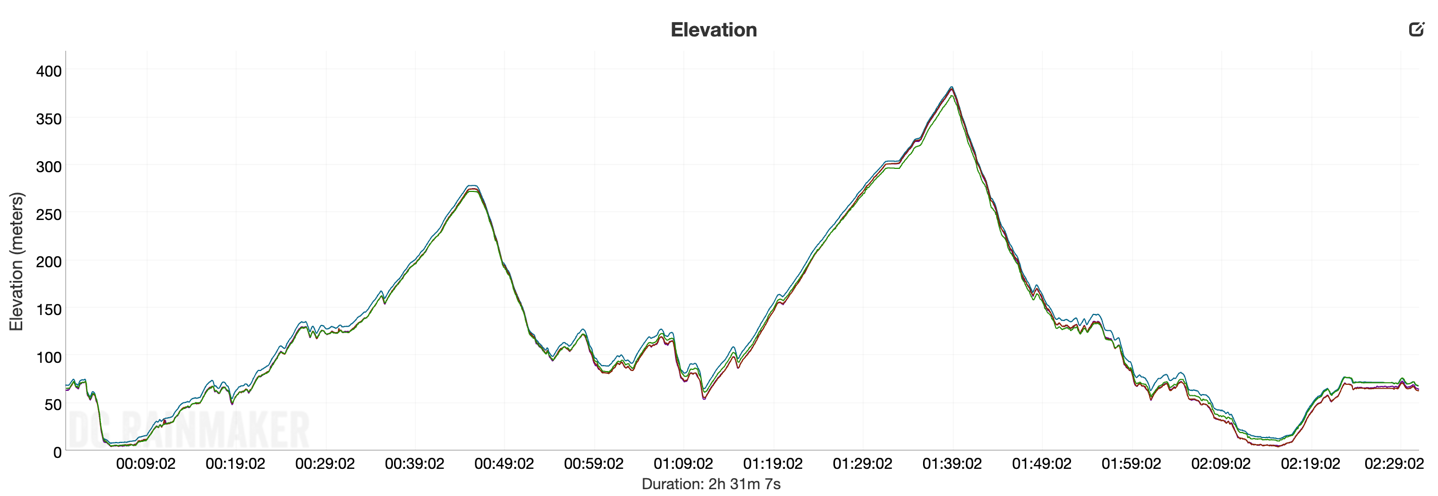
Next, this gravel bike ride – again – everyone literally identical:
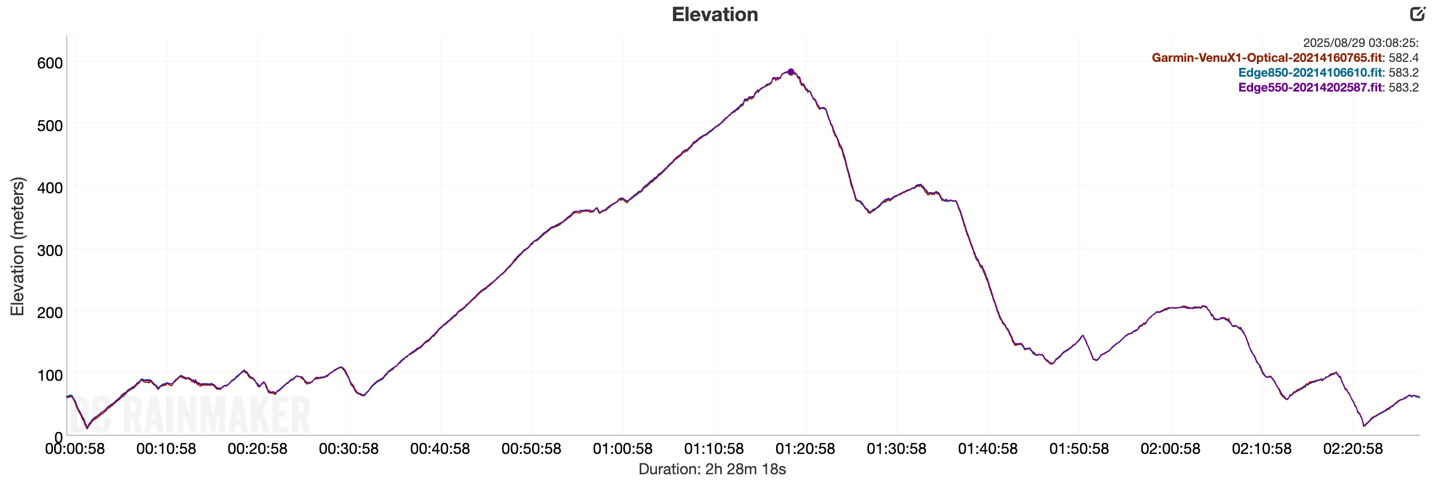
So, let’s look at some GPS tracks instead. Back to this morning first, up into the redwoods and twisty roads:
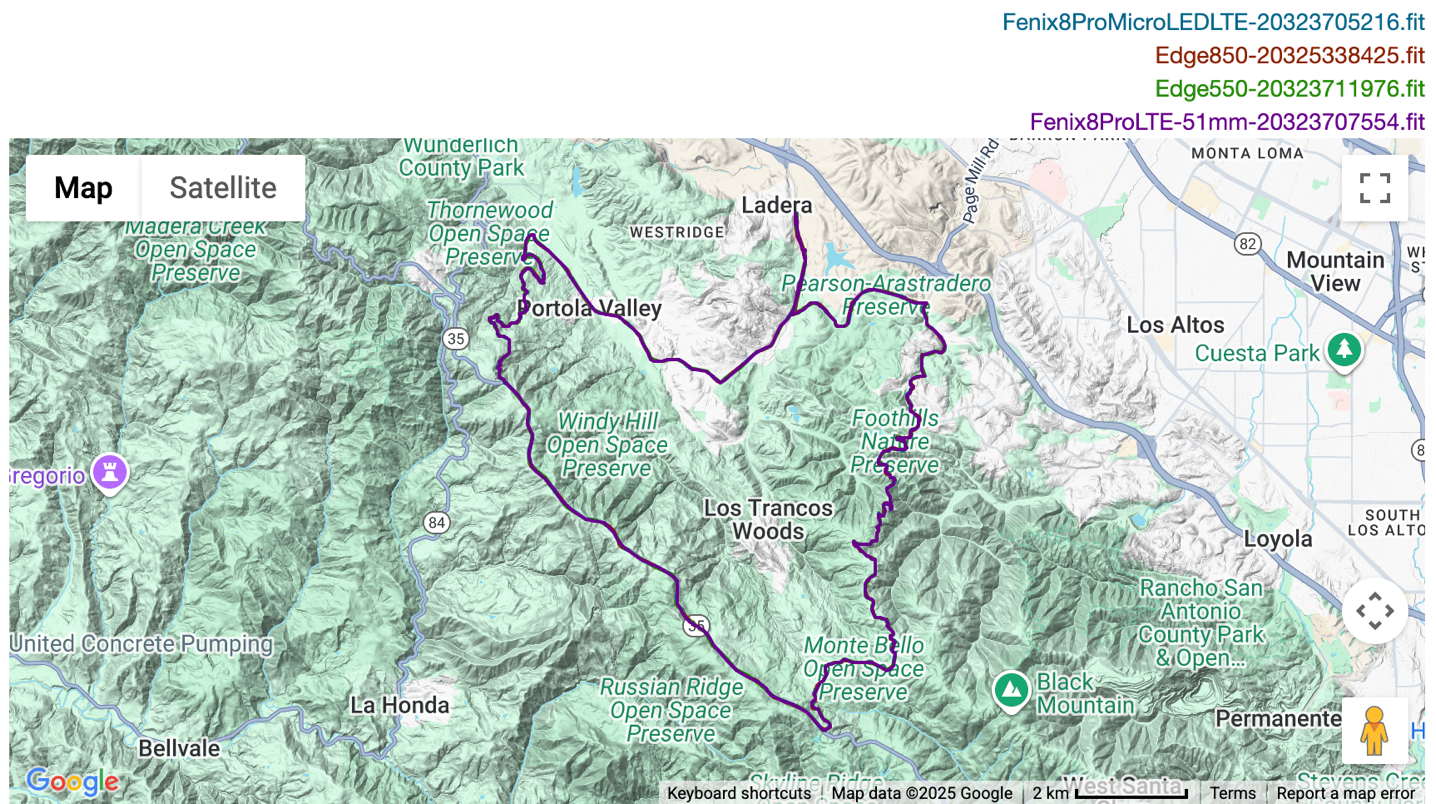
In zooming around, I can’t find anything that’s different than perfectly stuck to the road:
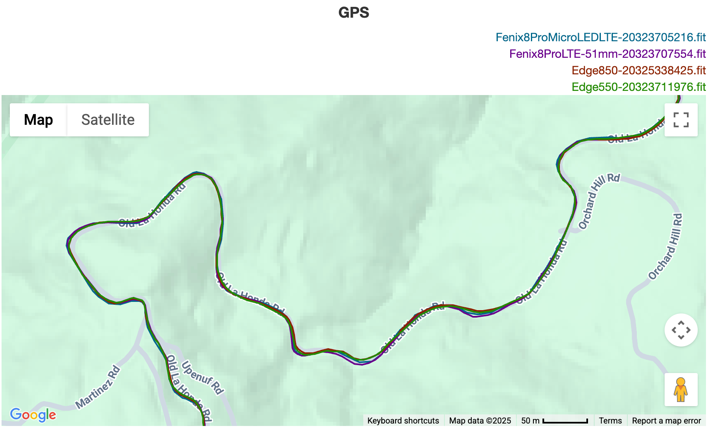
(At left, going up, and at right, going down)
Here we are for some gravel riding in France:
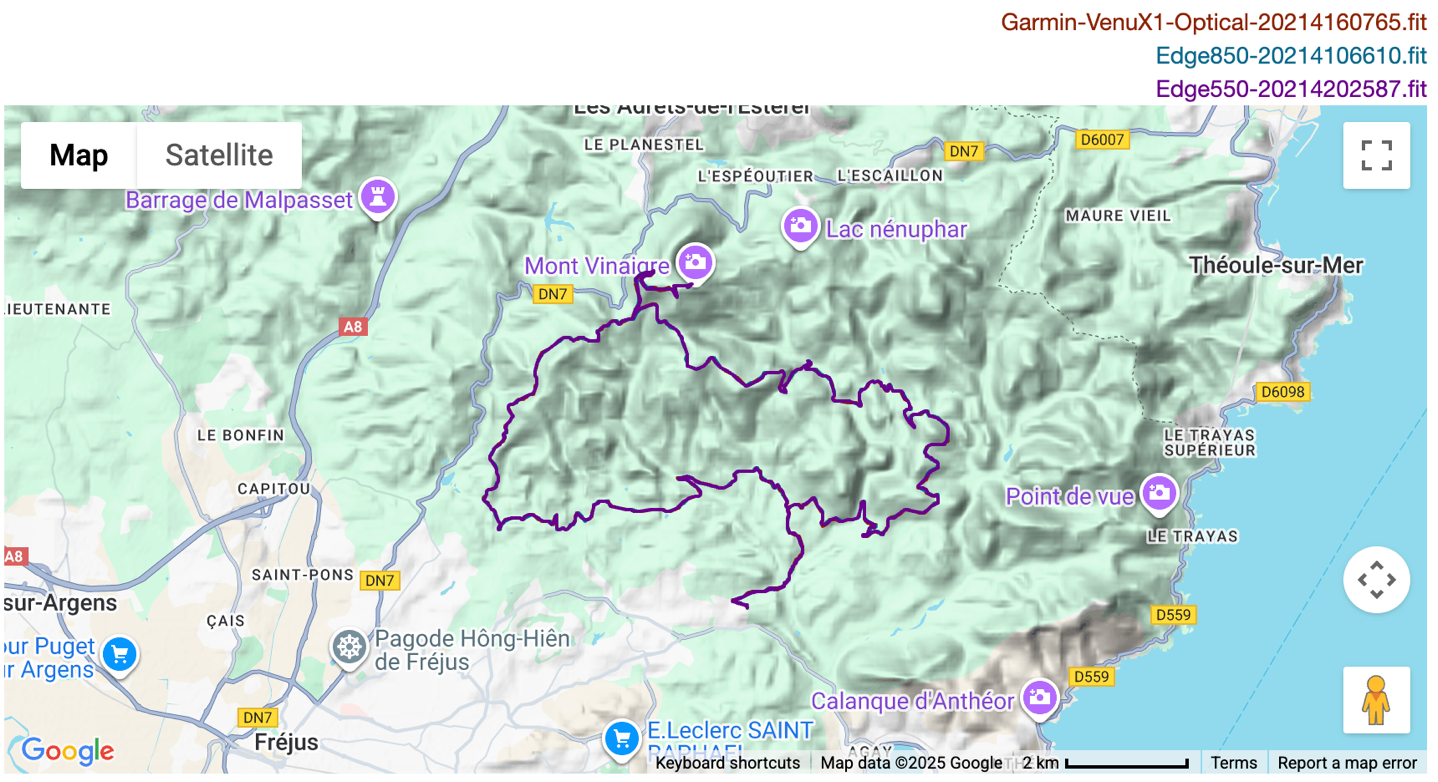
And again, even high-speed descents in the trees had no differences:

And then at home:
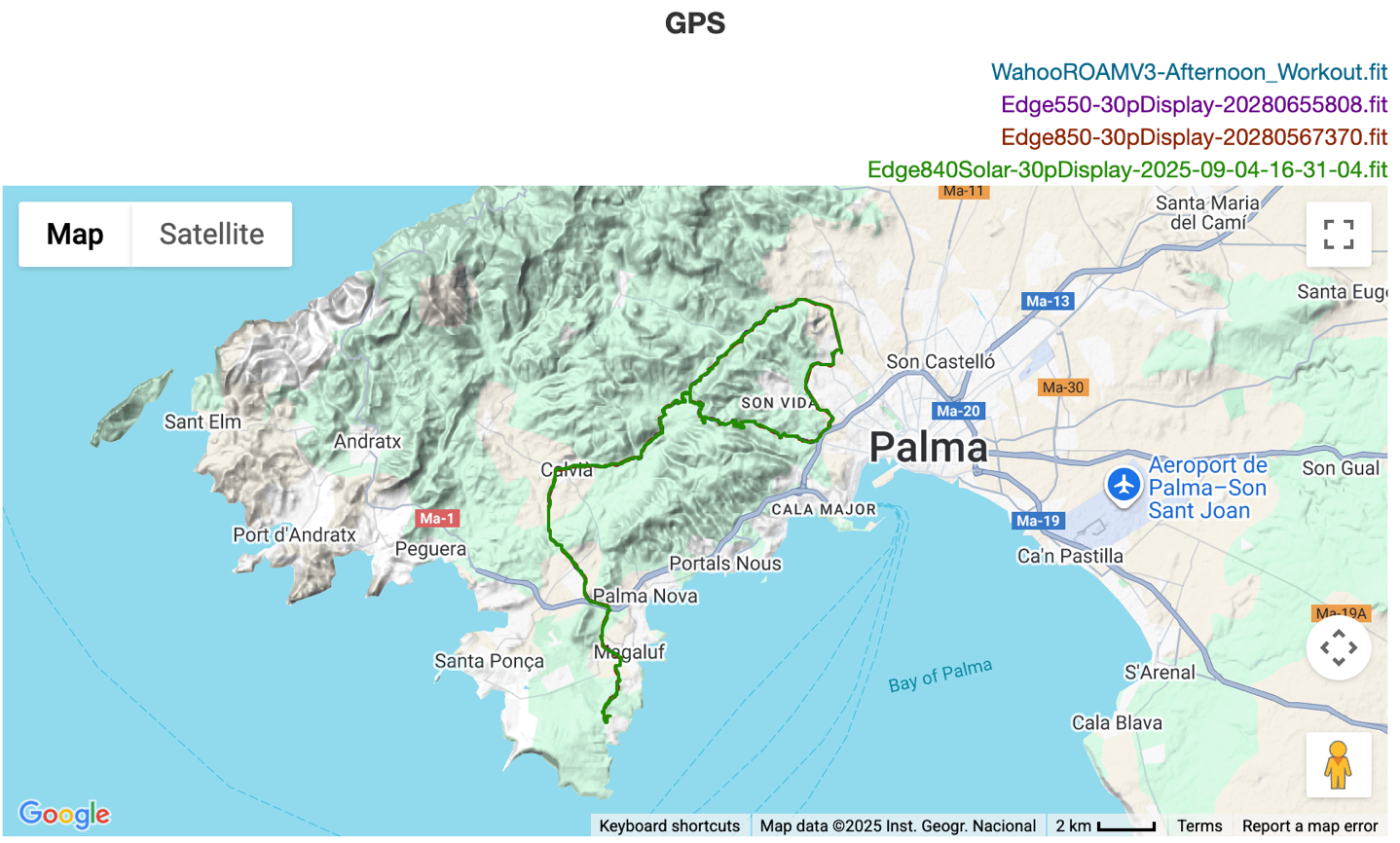
Just no differences up in the mountains on some very fast switchbacks, especially for a section I do often, and thus at a bit higher speed than your average bear:
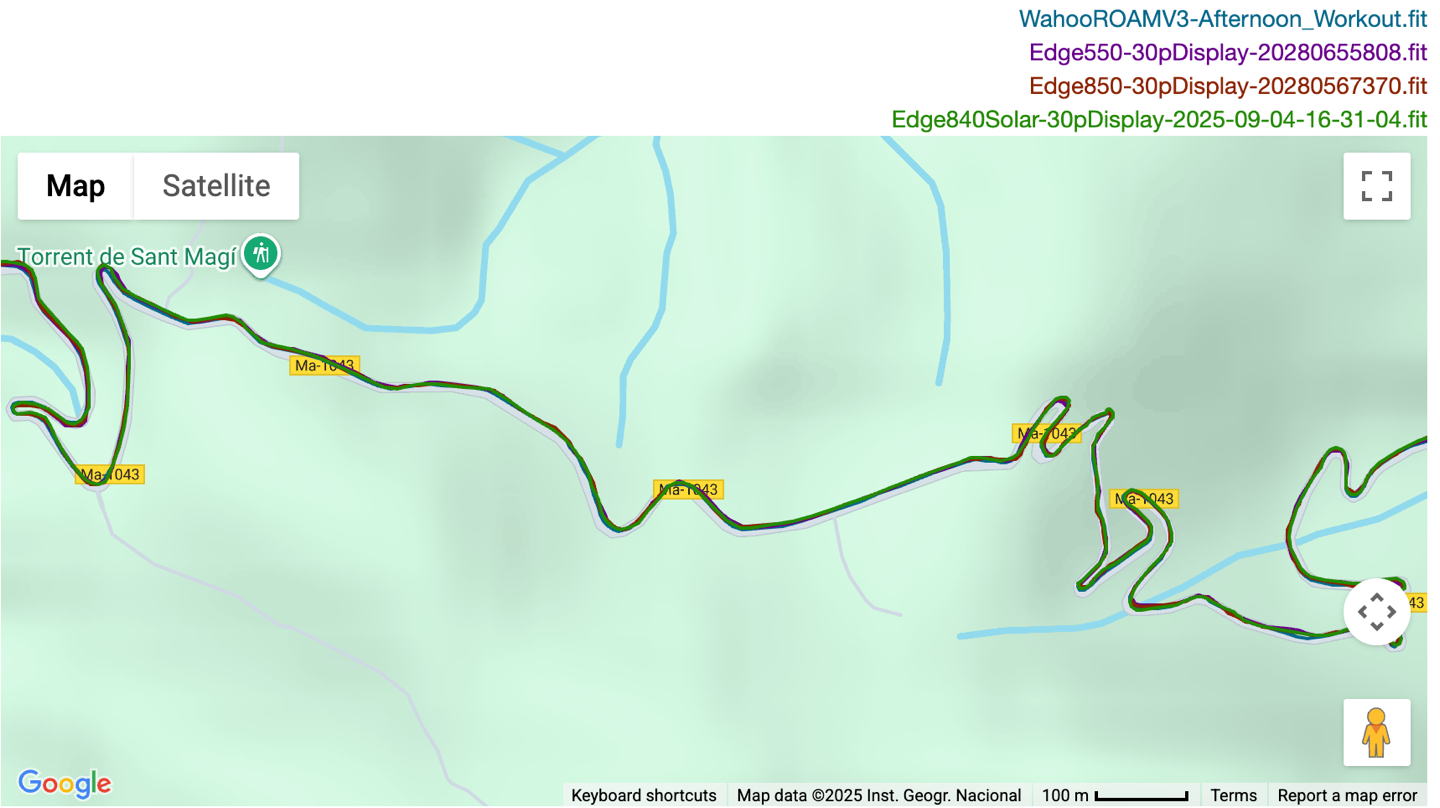
Ultimately, everything I see here from Garmin (and the Wahoo ROAM V3 too for that matter), is spot-on when it comes to GPS & elevation accuracy.
Oh, and for lack of anywhere else to put it, I didn’t see any meaningful/substantial bugs with the Edge 850. I saw one singular bug with a single timing gate placement not triggering, which, upon some digging, appears to be a more widespread issue with how the UI works for timing gates, and I thought I had set the entry gate, but actually not pressing enough buttons. I had two minor bugs on the Edge 550, including one crash of the weather app (the only crash I had), when I tried to pan all the way from California to Europe and zoom in on a storm cell. Along with one funky data field moment on the Edge 550 during an MTB Downhill automatic lap banner. But otherwise, the units have been fine, aside from issues raised up above in the review (e.g., fueling/nutrition).
Wrap-Up:
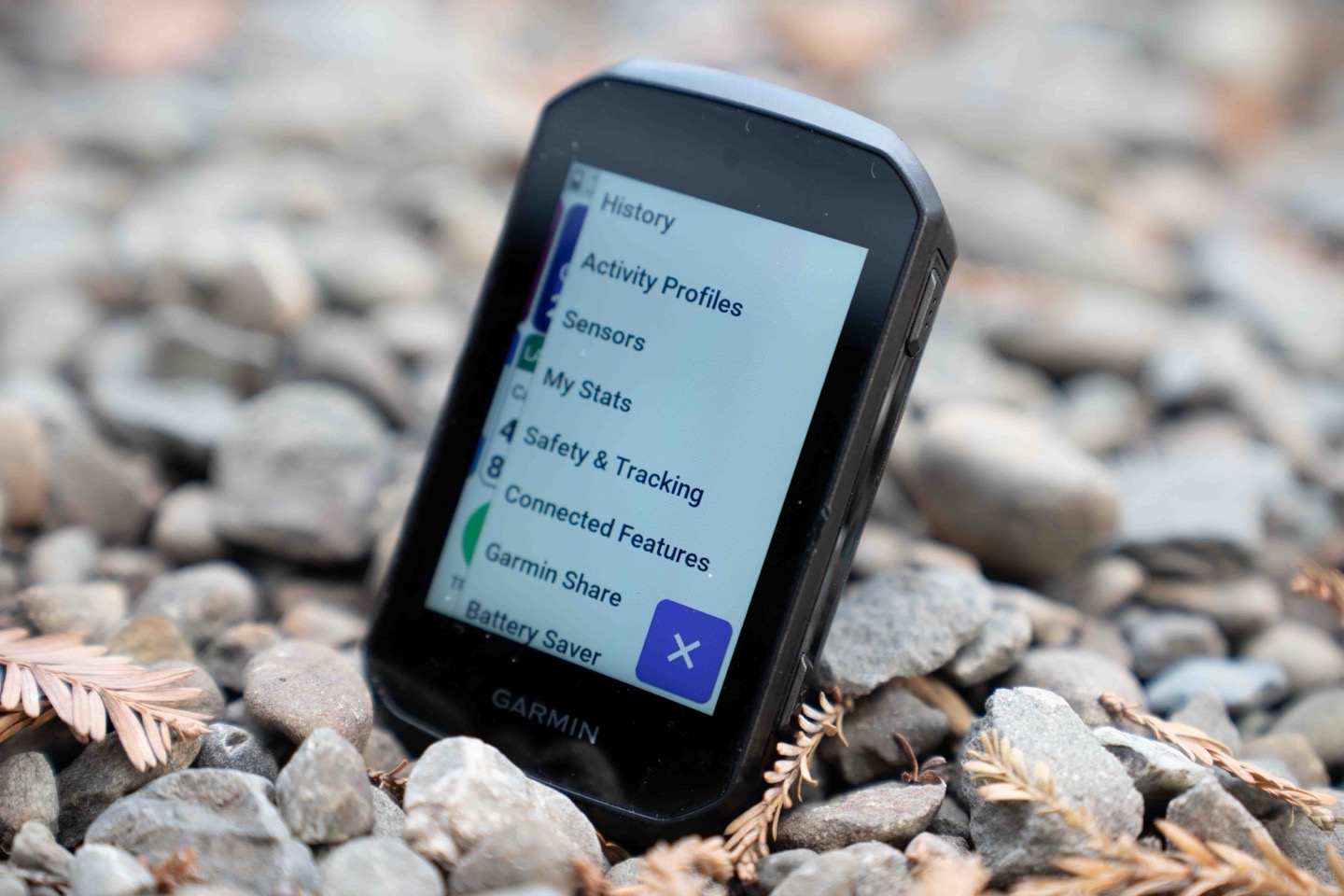
In many ways, you have to look at the Edge 850 through one of two lenses. The first lens is of someone who doesn’t really care about having more than 10 hours of GPS battery life. After all, if they have a radar, they’d be charging that at about the same rate anyway. And 10 hours covers the overwhelming vast majority of cyclists from a weekly totals standpoint. For these people, the brighter and more brilliant display, along with other new hardware features (such as the voice prompts and bike bell), will be welcome additions. After all, I hear virtually no widespread complaints about the Edge 1050, and this is simply a smaller Edge 1050 (with a smaller battery).
On the flip side, in the matter of just a few years, we’ve gone from Garmin’s flagship Edge 1040 Solar reaching battery durations close to 100 hours (or more), and the Edge 840 Solar easily getting 40-50 hours in the right configuration. Now, we’re at but a fraction of that. Now, as I said in my video, at least with this display tradeoff, you can actually see the darn display – something that Wahoo hasn’t accomplished with the new ACE/ROAM3/BOLT3 displays. Those really struggle in lower light scenarios, without fully cranking up the backlight. Whereas Garmin’s automatic backlight option here works super well, and when used (it’s enabled by default), you just don’t think about it – it simply works.
Of course, there is the whole pricing increase. Part of that is unquestionably tariff-related, but part of it is also driven by the prices that Wahoo & Hammerhead set (Wahoo Roam 3 at $464, and Hammerhead Karoo 3 @ $525). In doing so, I can absolutely see how Garmin got to their $599 valuation. Simply put, is the Edge 850 worth $75 more than the Karoo 3? Of course it is. Next, is the Karoo 3 worth $60 more than the Wahoo ROAM 3. Yes, very easily. And thus, here we are. I’m not thrilled with it either, but Garmin has always been the premium-priced company, and when its competitors inflate their prices, Garmin is simply going to respond accordingly. They know they have a substantially better product, and they aren’t afraid to price it as such.
Which is an interesting contrast in pricing to the just released Garmin Rally 110/210 power meter pedals, which, despite being very good, simply doesn’t have a substantially different/better value prop than the also very good Favero RS series, yet, cost nearly twice as much. In that case, it’s an easy choice. But, let’s save that for the other post.
With that, thanks for reading!
Found This Post Useful? Support The Site!
Hopefully you found this review/post useful. At the end of the day, I’m an athlete just like you looking for the most detail possible on a new purchase – so my review is written from the standpoint of how I used the device. The reviews generally take a lot of hours to put together, so it’s a fair bit of work (and labor of love). As you probably noticed by looking below, I also take time to answer all the questions posted in the comments – and there’s quite a bit of detail in there as well.
If you're shopping for the Garmin Edge 850 or any other accessory items, please consider using the affiliate links below! As an Amazon Associate I earn from qualifying purchases. It doesn’t cost you anything extra, but your purchases help support this website a lot.
Here's a few other variants or sibling products that are worth considering:
And finally, here’s a handy list of accessories that work well with this unit (and some that I showed in the review). Given the unit pairs with ANT+ & Bluetooth Smart sensors, you can use just about anything though.
And of course – you can always sign-up to be a DCR Supporter! That gets you an ad-free DCR, access to the DCR Shed Talkin' video series packed with behind the scenes tidbits...and it also makes you awesome. And being awesome is what it’s all about!
Thanks for reading! And as always, feel free to post comments or questions in the comments section below, I’ll be happy to try and answer them as quickly as possible. And lastly, if you felt this review was useful – I always appreciate feedback in the comments below. Thanks!



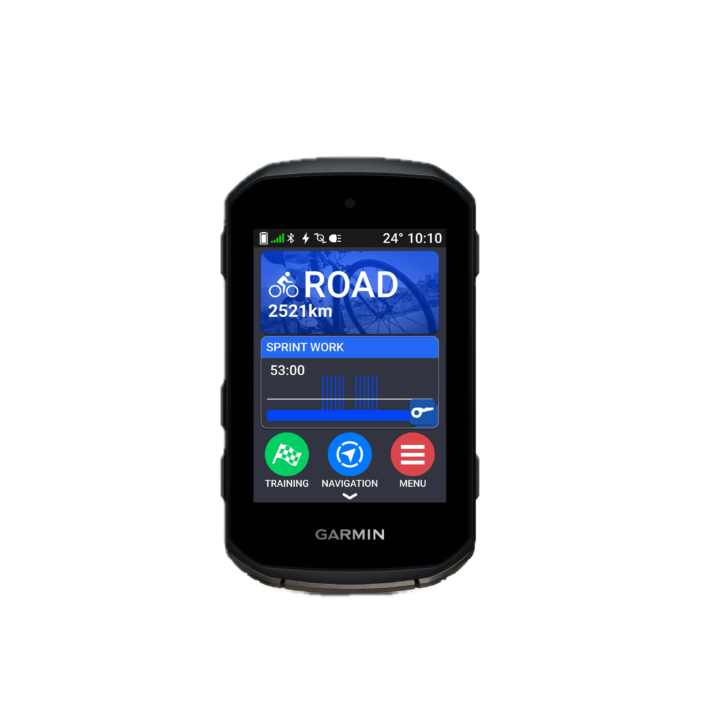
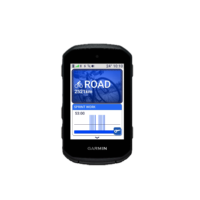
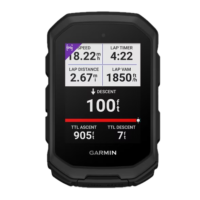
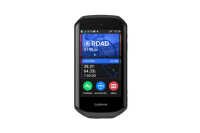
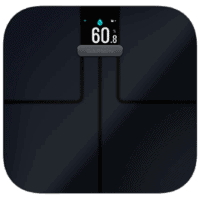
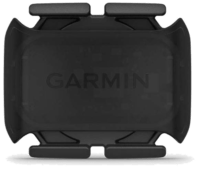
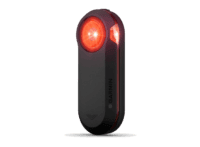
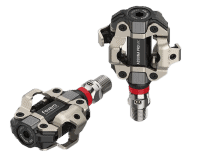
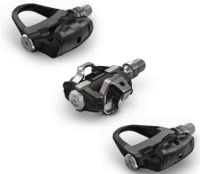
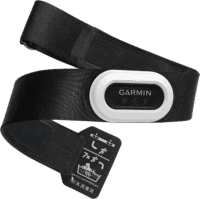





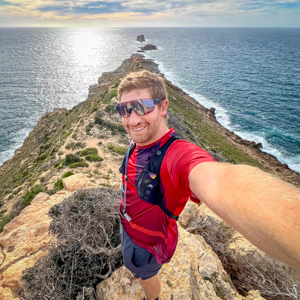




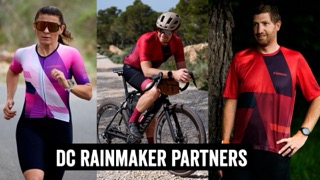




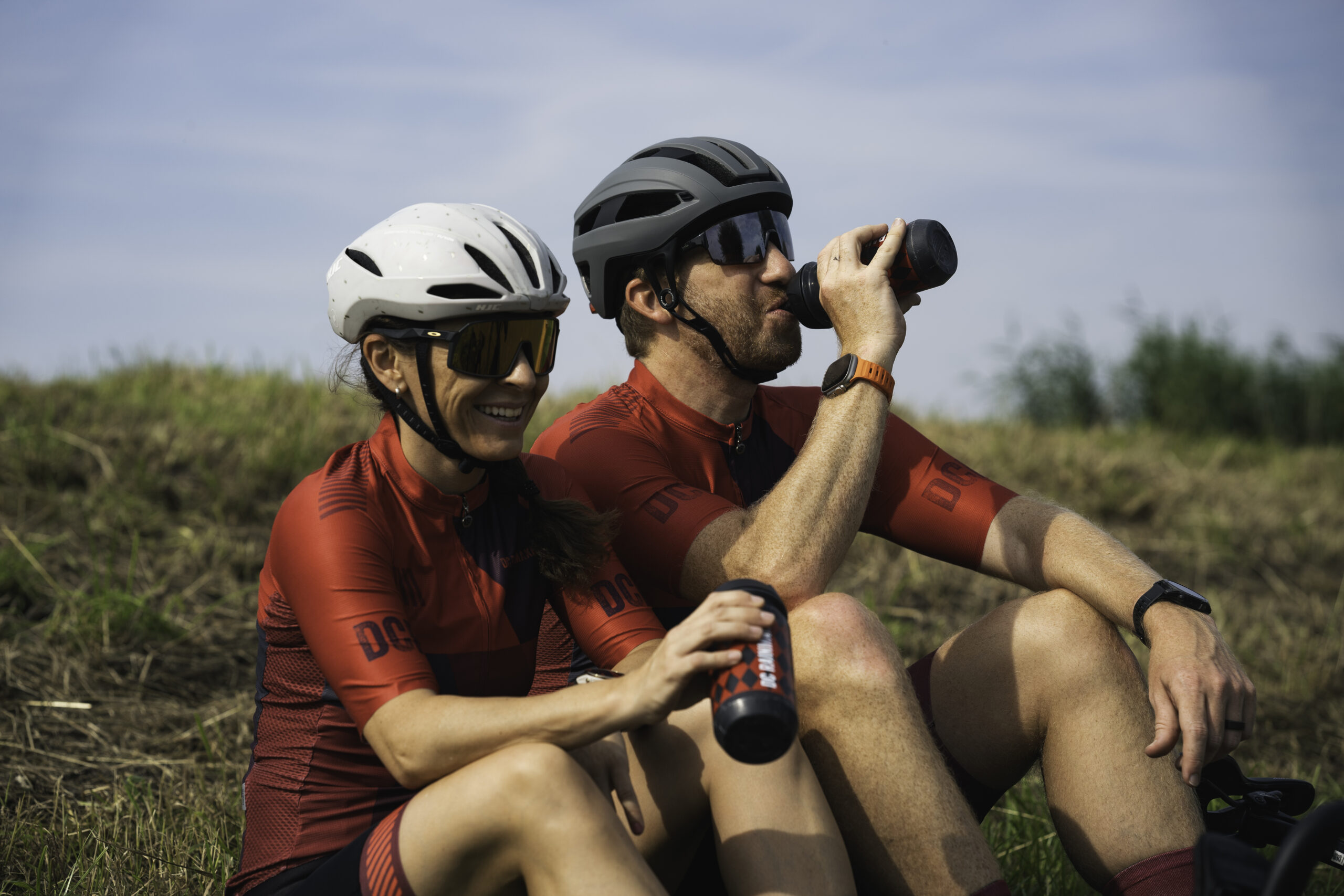

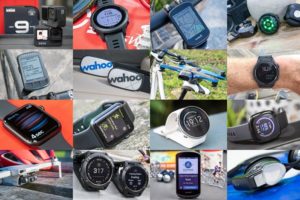

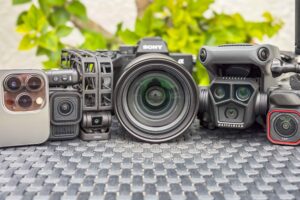

Thanks for the review. I’ve been waiting for this release.
That battery life is not acceptable to me – I’m off to buy an 840 for less money.
Aaaand 840 purchased. Looking forward to giving it a first run tomorrow. Thanks Garmin, you saved me loads of money. 40% less money and 100+% more battery!
Battery life specs drop to 12 hours – this is a no-go zone. Hard to understand why they did it. In practice, it is more like 10h with many sensors we have on the bike.
Thank you for the review. Great work as always.
In the batterie life table Garmin stated backlight is always on. Did you try to reduce it to 15-30s with any effect?
And more important as winter aka kickr time is coming. Does garmin support finally more than 50 elements within a structured workout file?
From memory with the 1050 review, with these screens, if the backlight is off it basically appears completely black, so that’s not really a workable solution, sadly.
So, is it heavier than a fully loaded 1040?
It seems as if Garmin was trying really hard to unload stockpiles of 2017 charge packs on the market…
A new pack that goes between any holder and Edge, instead of beneath that special holder nobody uses, that might actually make the loss of MIP almost tolerable. Almost.
No, it is not. 1040 is 12-15% heavier.
840 = 85g
1040 = 126g
850 = 113g
so the 850 is much closer to 1040 weight than 840 weight despite being far smaller
its not really significant in the scheme of things – i could accept that weight gain for improved battery life but we’ve got quite the opposite
i can’t imagine that the new screen is worth these downsides – screen brilliance just isn’t something i’ve ever felt i was missing
Yes, it is a curious balance/trade-off.
I switched from a 1040 to a 1050 for the screen quality (including visibility in bright/equatorial sunlight) and it has been 100% worth it, the screen is that good!
I was slightly concerned about the increased weight (160g!) but that has not been an issue in practice.
Battery life is still plenty for me and the other improvements (faster processing, new UI) are nice-to-have.
I doubt that I would make the move to the 850 – the battery life seems to be too limited (and limiting), especially for such a porky device.
It’s sad to see how Garmin continues to dismantle the stuff that made them stand out from the competition across all of their lineup. Their MIP displays were fantastic for outdoor use, their battery life was superb and made them more reliable products, their lack of rubbing a subscription in your face at every chance was pleasant. Something changed last year, and now they try very hard to do just the things that everyone else is doing, which is a huge downgrade and seems to alienate long term customers
Also, batteries degrade, so that 10 hour battery life is gonna be more like <8 hours after a couple years, forcing users to replace their devices sooner. Edge 1050 users with deep pockets might be okay with that, but do 550/850 Edge customers want to be replacing their sooner than expected because of battery life issues?
Yep. I had to replace my 520 after a couple of years, as the reduced battery life compared to my previous 500 meant that with a little degradation, long rides meant external battery packs. The 530 has been much much better. No way in hell I’d spend AU$950 on a device with 10 hours when NEW.
And I should add, the 520 was quoted as 15 hours or something, not 10-12!
Exactly. The main / only reason for me to get a new unit is because of fading battery life on an existing one. But if the new one has such low batt life out-of-the-box then it’s a non-starter. I mean I’d still be using an Edge *130* if I wanted short life.
Ray, is the gear ratio analysis coming to the 1040?
No plans that I’m aware of.
“Now though, the Edge x40 series is most definitely considered prior generation, and thus will stop receiving major feature updates (it’ll continue to get bug fixes, minor things, etc…).”
Must say that is frustrating to say the least, first F8Pro and now in Edge Garmin is disregarding people favouring MIP screens… What happened to the initial idea of having 2 side by side lines/variants with the same functionality/lifespan just different hardware?
This is what pisses me off with Garmin now. Their hardware is great but from a software standpoint, it’s meh and 2 years old devices quickly stop receiving major updates that are not hardware incompatible.
One of the things that surprised me and frustrated me as well, was that my 840 didnt allow me to swipe pages (left / right) while locked, my 1040 lets me do that – and I think that’s an awesome feature. I dont want edit fields, I just want to change pages.
Does this one allows it?
Ray, one of the things I’ve read repeatedly about the edge 1050 is that the new speaker is just too quiet to be audible out on the road with no option to route it through headphones.
Is this a problem you noticed on the 1050 or the 850 at all? From what I gather you seem to suggest that at least the bell is loud enough for others to hear but what about other alert chimes?
It was at launch for me (too quiet), and I noted it in my review. But they made some changes after that (about 3-4 weeks later), and it’s been fine for me. Same with 850. Zero issues now.
Being able to adjust the Auto brightness level should be a simple change.
You said “Battery life specs drop to 12 hours, or 36 hours in battery saver mode.” Did you test battery saver mode? I don’t see it in the review.
For the riding I do, I’m still mostly happy with the Explore 2. Add the free-ride Climbpro and that’d be a great option for a lot of riders.
ah, you would think. The auto brightness on the 840 is absolutely worthless and I expected it to be fixed with software. It never was and never will be now.
Not yet tested battery saver. Was focused on all the other variants I could do first (changing GPS, changing backlight, course/no-course). It’s on my to-do list though.
Just out of curiosity, since I may be the only one left this affects, does it still say it pairs with a VIRB (do you even have a VIRB now)? My 1040 will say it’s paired with my VIRB 360, but it can’t control it in any way.
Just checked, still shows that it’s pairable to a VIRB.
I do actually still have them, but they are currently in boxes in Amsterdam waiting to get moved down.
Thanks. I’m surprised Garmin hasn’t finally ended VIRB support yet. I’m thinking about finally replacing the VIRB (recently having trouble with VIRB Edit on my M2 mini) with a Max 2, and definitely will replace my Hero 11 this time around. Looking forward to your reviews of the new GoPros.
It looks to be compatible with the charge battery pack. Any indication what that would increase battery life to?
Considering that the new devices are about 30g heavier than the old and assuming that most of it went into a bigger battery, to learn the impact of the screen a little, you end up with a battery of roughly 1500 mAh, so the pack (if it was new, not deteriorating in a box for eight years) would add about two charges worth of the main battery. Vs three charges on the 840/540. So the pack would get you roughly to 840 runtimes – at least when running in full consumption mode (frugal modes that don’t blank the screen would give the x40 far more extra runtime than the x50)
It doesn’t help that Apple is announcing new iPhones etc today and I’m about to spend a lot of money on probably multiple Apple products like I do every year. Price and battery life really dampens my enthusiasm for the 850. Plus I really only use basic functionality with my 840.
Weird Wahoo gave the Roam 3 such a poor screen. That makes it an automatic no go for me.
In general, I am totally fine with the battery life and I am happy to take the better screen… And for the one day where I definitely need more battery life, reducing brightness might be the option. I am still on a 530, might be due for replacement.
Two comments:
Is it on purpose that you do not list the prices with the specs?
And… I think you missed something here: “– Added WorldWide TrailForks data as standard to all units (only”
I am actually in the same boat as you are, have a 530 and the 850 sounds like a solid move. Obviously would have liked a bit more margin on the battery life front (e.g. 15 hours instead of 12) but luckily I am rarely on the bike for longer than 8 hours.
Also two questions to Ray,
1. if you live in a less ideal climate as Mallorca (Amsterdam for example) will battery life be a bit better considering the rarity of sunshine?
2. Considering the screws on the unit, could the battery be replaced somewhat easily? (e.g. by a local electronic repair shop) I could see myself having the battery replaced for 50 bucks after 2 -3 years to reduce the detoriation of the original battery?
And if you have time (we all know you are way too busy these days) one more question.
I noticed in one of the video reviews there was a “reduce backlight” option. Do you know what impact that would have on the battery?
Because if “auto mode” gives you 10-12 but “Reduced mode” gives you 15 without much of a difference, it seems like an easy way to adjust when you are riding an extremely long ride (or when the battery is no longer running on full capacity)
Normally, the last line of my specs section includes any price differences. Looks like that got zapped as I cleaned-up/re-arranged stuff. Fixed!
As for the sentence about TrailForks, it was saying that it was now fully standard on all units, 550/850. Previously it was only available on the 8xx series without activation, whereas now the 550 gets it without activation. Either way, it belonged in the section two chunks down below on differences.
For the crappier climates of the world, you’ll probably get relatively similiar battery life between an Edge 840 and Edge 850. Even 30% backlight setting on the Edge 850 is considerably brighter than the Edge 840’s normal configuration. So 30% puts you at ~20hrs in my testing.
Most of my riding was in the sun, but I did have one rainy section on Monday in California in the trees/rain/mist/clouds/whatever, and playing around with the backlight a little bit on the climb, even 20% was more than enough, and 10% was also fine too.
Great combination to pair this with a microLED Fenix (whopping 4 days battery in standby) for 2k bucks.
“And also notably, the maps have considerably more detail than before.”
Any side by side comparisons for this? Sounds nice…
Yeah, I was trying to shoot some shots in California, but solidly struggle-bussing to get the NA maps downloaded to my Euro Edge 840. Ended up stealing Des’s unit to show the speed comparisons. Should have just shot those shots before I left.
In any case, back on the plane to Europe, and will add the proper map changes there. The differences in maps seemed far greater to me in Spain/Mallorca (side-by-side), than California. May be a regional thing. Just a ton more detail in the terrain/texturing on the 550/850.
The battery is a huge disappointment!! True that covers most of my rides, but it means big stress for long rides. Hope Garmin reverts this course (namely looking to the course in the Edge840 and getting back to it)
How are the buttons? On my 840 they are extremely bad except for the lap and start/stop one. Like they have no haptic feedback. Very mushy feeling. Are these the same or are they better with a distinct click? Thanks
These feel totally fine to me. No audible click, but feel firm.
Crazy. No way I’m going back to that sort of battery life, I can live with a MIPS screen on the 3 days a year in Northern England when bright overhead sunlight is actually an issue.
Hopefully be able to pick up a cheaper 540 at least…
Maybe I’m not recognizing the irony here?
• Transflective MIPS-Display excels with bright sunlight. Device shuts off backlight, sun provides backlight. That’s how the Gameboy worked. Battery lasts for many hours. When there is no sunlight, the backlight must turn on and starts draining the battery.
• Transmissive displays (the usual stuff in Laptops and Smartphones) excels in low light conditions, but need a lot energy in bright conditions to remain readable. That’s why using a smartphone in the sun is horrible (and the heat of sun + battery discharge is hitting quickly the thermal limit of 35 degre in consumers devices).
Taking into account that most people ride bikes at daylight, the usage of a MIPS-Display was a conclusion. I wonder why Garmin didn’t:
• Made the auto-brightness more responsive – so that the MIPS-Display remains well readable at morning/evening or adding a user preset for the [less aggressive auto-brightness, default auto-brightness, aggressive auto-brightness].
• Using an AMOLED screen. I don’t no what kind of LCD Garmin uses now. But AMOLED would have bee the obvious choice?
Probably most of us just desire a 530 Plus, 75g, little more screen and better processor? Or a 850 with AMOLED.
Nice, but I will still use my 1040. Just a question about the weather animation. Lets say it is 12am and I start my trip. Does the weather animation show the weather up to 2pm or just up to 11.45am. And if not up tp 2pm, why?
positive: the case is mounted together with screws. (guess the new EU rules apply). so you have a good chance to swap the battery after some years.
i will get the 850 – mostly because of the buttons the 1050 don’t have.
on the MTB i can’t use the touchscreen.
Garmin!
what are you doing???? I have been waiting to upgrade from my edge 830 (get rid of micro usb)
and I’m the edge use case user who wants to go for a 10+hr ride occasionally.
the battery life made this not be an instant buy from me like I was planning.
the other thing to note, is I owned my 830 for ~5 years. the battery life degraded a bit since purchase as is to be expected with use. 10-12hrs is just disappointing as a few years from now it will definitely be less.
at least do a refresh to your edge battery extender, then it *might* make sense
My biggest criticisms with the 840 is that it’s near nigh impossible to read messages on it – like the font is so small and is white on black ground. Does the 850 basically address that?
I’m assuming those with existing bike mounts for the 840 can still attached the 850?
Got the same issue!
Also when the road is a bit bumpy or I am on mtb/gravel it’s problematic “clicking” on buttons on the screen.
Same. Garmin needs to consider that many with pockets deep enough for their products, also tend to be long in the tooth and in need of readers.
Also, the 840 buttons (when needed) are mushy/imprecise.
Interesting that (for me at least) the 840 has disappeared off the Garmin website so you can’t do a direct comparison. I think that says it all.
Filter “older devices” brings it back into view. But yeah, apparently Garmin wants us to forget everything about the time when their investment into a low level operating system with all the rough edges that come with it actually gave a noticeable runtime advantage over devices that simply take the comfortable shortcut of running everything on Android, where development is so much easier, cheaper and faster. With a battery guzzling screen like that, the “Android tax” just does not make much of a difference.
link to garmin.com
Yeah, it’s part of a slight change in presentation to make it more obvious to new buyers to buy the new models, and reduce all the things on the screen. They started doing it this past spring I think, after Instinct launched.
They’ll still continue to sell the older units, and in some cases, even continue making them. Garmin sees their prior gen units as their cheaper option. It’s a strategy they recently made a bit more public in some investor statements.
840 now the Best Buy? – seems like the smart buy today, thoughts?
There is something that I don’t think I’ve seen mentionned here about battery life: it’s not just about the battery life between charges, but it’s also about the lifespan of the battery over time.
Battery health (battery life, but also how stable the charge and discharge are) is inversely correlated to how many times the battery has been charged in its lifetime. On devices where the battery is not replaceable, that means that the battery life between charges effectively correlates with the lifespan of the entire device: the more often you have to charge a device, the faster it will be rendered unusable.
In my >10 years using Garmin devices, it’s always been the main replacement trigger: when the longer (~6h) one-day activities I do are getting uncomfortably close to being too much for a fully charged battery. From experience with MIP devices, that was anywhere between 4 and 6 years of frequent (4-7 times per week) use.
And so naturally with a device like this one that requires so much more frequent charging than the previous generation – and starts with so little margin, it stands to reason to suspect that the device will be rendered useless much faster. I wouldn’t be surprised if it can’t run a 6h ride within a year of frequent use!!!!
On-board charging is an option. The Garmin battery pack exists but is only compatible with one mount. USB-C charging during ride is possible, but what a clunky solution… Ideally, the battery should be replaceable. But failing that, at least provide a model with a battery large enough to compensate for the higher draw?
And of course it feels like Garmin is financially incentivised to sell devices that will need to be replaced more often…
Hello,
Thanks a lot for this very complete analysis as always.
In the conclusion you mention that for you, Karoo 3 is above Roam v3.
Honestly I don’t understand why, or I am missing something big.
I tried both of them in the past month and despite having a very good screen, it’s very difficult to get used to the Karoo 3.
The rerouting is awful, I went offloop for a while on a ride and 30 minutes after being back on the route it was still crying and asking me to move back on the route where I left it …
The drawers for Climb & Strava segments are a good idea but in the end it requires a lot of touch interactions with the computer while you expect keeping your hands on the hoods.
Not my experience at all re-routing is prompt, accurate and visible. Waiting on the roam v2 to show a faint light blue line somewhere took a lot longer.
Weird, routing for me on Karoo 3 is excellent. And visibility far better, and all the other new/integration features far better.
I do think the Karoo 3 is sluggish in the menus (super sluggish sometimes), but honestly, so is the ROAM 3.
When will you post your Wahoo Roam v3 and Bolt v3 review? Why didn’t you post it when the products were announced like you’ve done here?
I guess there is only one Ray and despite the availability of coffee, his time is limited…
A super-key difference is when Wahoo annoucned the ROAM 3/BOLT 3, they didn’t have same-day-ish availability, and in fact, it was 3-4 weeks later. As such, the software wasn’t final (in fact, quite bad, even despite the then also-bad release firmware).
I don’t like publishing reviews on non-final software, because so much changes. In this case, they specifically said “no reviews” allowed (e.g. first looks/etc were allowed, because the software wasn’t done.
So, when I publish a first-look type post, then the product gets pushed to the back of the queue for an actual review. I thought i’d have the new Wahoo reviews done this summer…but alas, a gazillion other things got in the way. I’ve ridden every single ride on them, so thousands of kilometers at this point.
It’ll be soon, though, not a next week thing. That’s still a proper nightmare of new products coming out.
Shame the bell isn’t on the 550 😒
Given that and the battery thing, I guess I’ll do what I usually do and buy a new, discounted previous version that already has everything I need (want)
Still on an Edge 520+ and all I really need (want) is ClimbPro but the bell would have convinced me to get a 550; not fussed about a touchscreen
The bell is a cool option and an appealing reason (for me) to sell my 840 and get an 850, freeing up handlebar real estate. I like that it works with D-Fly and AXS buttons. It would be a real pain to click physical computer buttons on a ride to ring a bell though.
Have you seen HideMyBell mounts?
Does the 850 limit the 5 Hz to just downhills like the Edge MTB, or does it allow you to use it everywhere? Do you have any example files with 5 Hz data?
Just downhill.
Yeah, I’ll add in some data files/linked to download.
That would be great! I need to check how that works in http://www.fitfileviewer.com, see also my email message.
Hej Ray,
great review (as always).
One question which you may be able to answer:
Is it now possible to sync new Komoot routes while an activity is running? I often start riding a Komoot route and then have to change s.th. while riding. I just open Komoot on my iPhone and create a new route.
With my Wahoo I can then open the ELEMNT-app, sync and load the new route to the BOLT. On my Garmin 530 this seems not possible. I have to stop the activity, sync, select new route and then start a new activity.
Maybe you have an insight? It is the one thing keeping me from upgrading to a new Garmin.
Ole
PS: using the Komoot ConnectIQ-pp for Garmin is no option for me…
Already x40 syncs mid-activity natively.
Okay, thanks!
I had been waiting for this launch… and after reading this I ordered an 840
I think many people, like myself, are in the same position. Sadly, it doesn’t seem like it will move the needle in terms of future (Garmin) direction… lots of opportunities for new competition!
Ray, how is the quarter twist mount placement compared to an 840? I know the 1050 changed twist mount placement so a lot of stem-based out front mounts would no longer work when they did work with the 1040. Do you foresee any mount compatibility issues with the 850 when someone previously had an 840?
No compatibility issues here, same basic place as the x40.
The reason for the shift on the 1050 was weight/balance.
When I bought the edge 1050 I was horrified to find that you have to crank the brightness right up to see anything in bright sunlight. I ended up selling the edge 1050 and buying the 840 simply because the good old lcd displays are clearer in bright weather. So now we no longer have an lcd display version and we’re down to 10 hours battery life. Could be difficult if riding an Audax 300, 400 or 600. I guess this will leave people panic-buying the edge 840/540
Not my experience with the 1050. I ride in some of the brightest sunlight (basically at the equator) and never get near the max brightness setting. Most of the time, auto brightness keeps it below 50%.
Anyone familiar with Garmin knows that the first few years are all about defects and software improvements. In my case, the 540 is still a flawed design even after years.
Any idea about battery life without mobile phone connected during rides (Bluetooth)?
Won’t make a meaningful difference. Those new screens eat through a considerably larger battery in much shorter time. So for every minute disabling some non-sreen feature would have gained on an older device you’d get seconds on the new one (and it didn’t make much difference on an 840 generation device to start). On the 840 you’d look at the consumption (from Bluetooth) over 30+ hours, on the 850 there are only that many hours in a charge you could deactivate.
There’s generally almost no difference there, at least historically when I’ve tested.
It was cool to see you did a route local to me. I always call that part of Old La Honda where it narrows and passes between those trees the “Two Towers” in my head when I’m riding by.
As a casual rider, I like using the Edge Explore 2, but as I get older I do wish it had a sharper/brighter screen when using maps. I’d be okay with trading some battery life, but I can’t justify the price jump to an 850. I do hope there’s a lower priced option in the future.
This is deeply upsetting — Garmin please bring out a MIP display version!!!
I simply cannot commit to a device with such a poor battery (from launch), and I do not want my head unit competing with my phones display, it’s a functional device after all :(
I do not think there ever was an Edge model with MIP display. Maybe the black & white spray in the Edge 130?
Whoops meant transflective display!
The ~33% weight increase vs the 840 is somewhat disappointing. For me, the 840 is what I use for races (to save some grams), and the 1050 for training/ regular rides. With the added weight, the 850 is not on my wish list.
What would have been great, is the option to sync profiles/ data screens between Edge devices. So that a change to a profile on one Edge computer would automatically sync to the other Edge computer(s) of the same user.
My 840 has the ability to transfer sensors and Activity Profiles?
I was hoping Garmin would port over the flashlight technology to the bike computers to have an emergency backup headlight, or a useful front blinking light. There is a lot of space on the front of the unit to make a pretty sizeable light.
Maybe on the 1060….
I agree this would be awesome. That said, you think battery life is bad now…
Any insights if the 850 can store more than 100 Strava live segments?
Does weather widget include wind direction ?
The 560’s beta have wind & rain route optimization
with two settings, Speed Optimize (more tailwind)
and Belgian Mode (more headwinds & rain for enhanced training)
Yes, it does.
I feel like Garmin has totally lost it on pricing in general and punishing others for the tariff craziness that’s going on in the US. My Edge 1040 and FR 955 will do the job for a long time. Says a guy who has been updating his Garmin hardware constantly during the last 25 years.
Thanks for this great review.
I wonder when they will incorporate front light, I think this is one of the feature users would appreciate as they do on the watch. To start, not necessarily to see where you are going but to be seen.
• The device size has increased (Edge 530: 50 x 82 x 20 mm -> Edge 850: 54,6 x 92,2 x 16,8 mm)
• The device weight has increased (Edge 530: 75 g -> Edge 580: 113 g)
• The Screen-To-Body Ratio didn’t improved (Edge 530: 2.6 ” -> Edge 850: 2.7 “)
• The runtime decreased from 20 hours to 12 hours
Feels like an device from Apple or Google. More of anything but the actual quality doesn’t improve. I don’t like charing. We don’t like charging? Nobody likes charging. I wouldn’t complain if the improved the screen-to-body ratio a bit (not fully to the edge) and kept at least 16 hours of runtime.
Question: Is the battery replaceable? I see screws on the backside.
I really would love to know why R/D took the decision to prioritize the display specs over battery life. For many years customers rated long battery life over display quality (have a look for the YouGov poll from 22). Now it seems that completely changed: FR970, Fenix 8 Pro and now the Edge 550&850. I`m curious if the current Garmin customers (like myself with an Edge 530&FR255) will accept that change and do an upgrade on the new gen. For me it`s sadly a definitely no-go.
Someone on an Ebike who drives the quarter turn pins from the big battery perhaps?
Thanks for another great and honest review. Coming from an edge 830 and being ready to upgrade for the next season, it is “interesting” that Garmin still manages to make the decision to upgrade a difficult one after all – even when ignoring the price tag for now. Few questions on what bothers me on my current device and if I could expect an improvement on the 850, if you don’t mind me asking;
– on the navigation page there is only room for 2 additional data fields rather than 3 or 4. I believe the 1050 would give be that, but what about the 850?
– more a software thing, but perhaps solved on the newer devices: I cannot retrieve a gps route when I sync from garmin connect to my device, while an activity is ongoing/recording. Certainly a preparation failure, but Ive had a few misses on long rides where I cycled say the first 50k of my route without navigation turned on, but later found out that I forgot to sync the route as I was trying to start up navigation later on… couldn’t get the route to show up after syncing until after I stopped my activity, which also took me time and frustration trying to figure it out and ofc split the activity in two..
– to increase ride time on long rides, would there be an option to use say 30-50% brightness level that could go to full brightness for say 5s after a button click, or a toggle between 2 predefined brightness levels? The 10-12h is really stretching it for me so anything usable that could extend that duration when you desire would be welcome… if 30% is poorly readable then it’s not going to work during the entire ride, and 10-12h is not too difficult to drain on a single ride (7-17). I would have welcomed a bit of weight and thickness to get that value at least above 15 and preferably up to 20h, so hoping for some solutions/workarounds here.
Point 2 was solved already with the with the 40 series:
link to dcrainmaker.com
Garmin decided not to backport it to the 30 series.
As they didn’t backported the new Bluetooth File-Sharing.
For everyone else with a 30 series: Stop riding, Save Activity (Yes. I know that is sad.) and now you can send GPX via Bluetooth from Edge Edge or Connect (App/Website) -> Edge.
First issue (number of data fields on navigation/map screen) has long been addessed through ConnectIQ data fields.
Good to read it’s been fixed. I figured out the ‘solution’ on the go, but ofc this happened on an overnighter of 350km where I didn’t initiate course navigation to save battery life for where it matters (the area where I don’t ride regularly). Big disappointment to see my 210km ride split into pieces. Why this fix wasn’t backported to the x30 is beyond me as IMO its a bug fix not a feature update. I might opt for the 1050 to gain more batterylife, which I assume can equally be prolonged at 20% screen brightness, and to solve the 4 fields+map screen issue. But these experiences (epix 2 pro is another example) of nosupport on premium devices withhold me from buying just yet.
Again, the maps + 4 data fields ‘issue’ has been long addressed through ConnectIQ, including for x30 series devices.
I appreciate that, but these are high-end devices. If I pay a premium then everything should Just Work. It’s great that people can fiddle with GC+, but that’s not quite for me.
Something else though, Garmin doesn’t seem to publish their battery capacity.. I picked up that the 850 uses a 1490mAh battery, but what about the 1050? Obvs becomes important when needing to bring power packs etc.
It does _just work_. No fiddling required – and certainly no GC+.
First no 1050 Solar. Now no 850 Solar?
I have an aging 530 with greatly reduced battery life. I’d also be willing to overpay to get the new, new road & MTB features. Upgrade options suck.
Solarbwould be meaningless on the x50 devices given the battery burn of the screen.
So I am guessing the area of “best screen in all conditions”, would you say the 1050/850 trumps the others now in general? IE: Wahoo Gen 3 models?
There’s no question the Edge x50 series are the best screens out there. Edge 1050/850/550 – all the same screen, simply the 1050 is bigger.
The Wahoo Gen 3 models are far far far behind from a screen standpoint, in comparison.
Ray, is the ClimbPro lagging like on my 1040? I like the idea of seeing the profile ahead, but in Switzerland, where I ride, it’s always off. It’s more of a reminiscence of the past than a prediction of what’s coming :-)
Are you running the latest firmware? I’ve seen lags like that, years ago, on my 1040. These days with the current firmware (28.20), ClimbPro, both free ride and navigated, works well here in central Pennsylvania.
I see the same behavior on my 840 with current firmware. Sometimes it still shows I’m on the climb after I’m finished, other times it says I’m done when clearly not at the top. It started years ago and has never resolved.
It’s been spot-on for me.
That said, there are two elements here:
1) Are we talking the ClimbPro specific climb ending/etc
2) Are we talking the gradient responsiveness (which has been great too).
The ClimbPro pieces can be influenced by the route provider, as we’ve learned, which can be a factor in some areas.
ClimbPro location and stop/start. I’m in Denver, CO so you would think the information would be good here. Many of the saved routes I have were created in Strava.
I experience both ClimbPro data being off and measured gradient lagging. But here my issue is with ClimbPro (your #1). And, actually, a very simple – one would think – thing:
– I don’t care where the start or end of the climb is defined. It would be nice if it matched where most people would point their finger, but I am OK if it ends like 100 horizontal meters before the real peak (as it usually does).
– I can accept that the gradient field is not as reactive as the level meter app on my phone. The bike is moving and hence Edge is experiencing acceleration in all directions, so probably needs some averaging (and hence the lag).
– What I don’t get, is how – despite precise GPS and reasonably precise mapping data – it just can’t put the pin on the right point of the climb profile. The profile mostly makes sense, but when I for example see a short steep section or a flattening, I am usually past this short steep section or already on the flat part.
with the auto mode think there is no option to vary the sensitivity right? seems like that would be an easy big win. that being so, how does the battery life on auto mode compare to using the set % you would want for appropriate visibility in a given light condition? eg is the 30% setting life similar to auto mode in conditions where 30% is good or does auto mode go overboard and prioritise view quality over and above what is necessary, hence compromising battery life
i’m ok with 12 hours battery life, but at those prices i’d need it to last several years which it won’t – before too long battery life will become unacceptable
For what it’s worth, I’ve never had any problems with the batteries Garmin uses. I’ve needed to replace my Edges about every 4 years for other reasons (usually the barometer fails), but never because of the battery.
I’ve had trouble with Apple batteries and GoPro batteries, but never Garmin’s. Of course, none of the Edges I’ve used (1040 currently) has the new display of the 1050/850/550.
i’ve never had problems as such, as you say normally something else kills it before the battery degrades to problematic levels but they certainly do degrade, just previous versions have had twice the initial life so it hasn’t been such a problem. from 10 hours it doesn’t take much to become limiting for anyone who does long rides
Its interesting they have moved from transflective to transmissive. Does that mean the display is more difficult to see during the day because the sunlight isn’t helping light the screen? Or does it crank up the brightness to try and account for that?
I’ve no idea why they didn’t stay with transflective to take advantage of daylight during the day, then have it backed up by a dimmer backlight
Garmin did it because the transmissive display has higher resolution, nuch better contrast, much better colors, better off-angle visibility, better black levels, etc.
I had the transflective on the 1040 and was struggling with readability (especially on colorful pages like the map). The transmissive on my new 1050 is miles better in virtually all conditions – of course, at a significant cost to battery life despite being heavier/chunkier.
“Does that mean the display is more difficult to see during the day because the sunlight isn’t helping light the screen? Or does it crank up the brightness to try and account for that?”
In theory, the answer is yes to both questions. In practice for me readability in brigh sunlight (and I am at the equator) had never been an issue/has been better than the 1040.
Can’t argue with that, makes sense. I looked at it purely from a brightness/battery perspective but its also a tradeoff with other important aspects of the display as well.
I’ve just been wearing a Garmin watch for years with a MIP display which is of course a different display technology again, but its clarity in the sunlight is fantastic.
Thanks for the review! I wonder what difference there is now between the 550 and Edge MTB?
Well, as someone who does longer rides around the world and has been looking to upgrade an 830, that’s disappointing. I have been hanging out for full button control, USB-C, and improved processor speed and storage. I’ll also say that when I heard about the bell, I wanted it! But 10-12 hours from a new battery? Straight out of the box that would have me needing a battery pack a few times a month. On a longer race suddenly I’m charging the thing much more which leaves much less time and capacity for charging everything else. It sounds like the new power-hungry screen is something they see as a key feature, which is disappointing because all the rest of it sounds great, and if they were to bring out an 850 solar with 26 hours of battery life and the possibility of a solar top-up I’d buy it straight away, but at this point (without even looking at the price) I’m just sticking with the 830 and my BoltV2 as a back-up for when things get wet. I’ll still curse every time I plug in the one micro-USB cable I’m forced to carry, or standing on a mountaintop waiting for the unit to tell me the way down, but it sounds like it is still the best option.
One question – I presume you can still turn route recalculation off, right?
Might be worth your while to just get a USB-C to micro USB connector rather than a full cable. I upgraded most of my stuff to USB-C a bit ago, despite not everything being there yet, and now just carry around some adapters to USB-A and micro USB to make up the difference.
I’m in the same boat as you, having an 830 that works as well as ever and being unwilling to upgrade to a non-solar 850.
I simply wouldn’t go out for a >10 hour ride without a powerbank anyway 🙈 Although it’s a shame that Garmin’s own powerbank costs 150 Euro 😱 .. Are there any third party power banks supporting the charging port of the Edge units? I always reverted back to USB-C, which is not really optimal during riding..
Garmin map update via WIFI took 3 days for 840 (Euro map) have Garmin done anything to improve WIFI update or is still useless and you have to find laptop where Express works?
Still sucky.
I did actually manage to get maps updated via WiFi at home on an Edge 1050 I think it was. Took like 5-6 hours, but did actually work.
Whereas, for an Edge 840 I was trying to get North America maps via WiFi, just kept hard failing. Gave up and had to borrow Des’s.
As noted above, I really wish Garmin would offer smaller regions too. I appreciate the ‘just get everything’ approach, but it’s also just a heck of a lot easier in last-minute realizations, to download the region you need at a hotel or such.
In olden times they had MapManager (?, maybe the wrong name) that allowed you to select sections of maps far smaller than continents and send them to the (tiny) storage on your Garmin device. It’d be nice if they had something similar online, maybe US state/European country size chunks.
No fullscreen datafields available … this means all CIQ fullscreen datafields are not working. Bad thing Garmin … Edge 850 no option to me.
Any insight as to why there is still no Roam 3 full review. Will there ever be?
Anyway i decided to go to karoo 3 from Roam 2 and couldn’t be happier. Overall it seems the best in my opinion.
Ray said somewhere (maybe the TR forums?), that he planned to update his comparison guide once the x50s were out. As someone with a Bolt v1 who needs to upgrade, I’m looking forward to this. My hope is that it’ll give a feel for who each one of these is for.
Keeping my 1040 solar. For now at least. I did the Tour de Stations this year, – 17hrs, a lot of it in low and no light, starting out at 2:30am. The Garmin 1040 backlight worked superbly. My Fenix 7 solar died 12 hours in. I would be gutted to have no gpx after climbing 9,000 meters. Afterall… ‘If it isn’t on Strava it didn’t happen’.
Ray, will any of the new software features be added to the 840 series? Smart fueling or gear ratios?
I’m guessing nope…
Nope.
So I suppose nothing to the 1040 series either? Is that right, Ray?
I asked on Garmin Forums, but got no answer from Garmin.
I thought the 1040 series was supposed to remain their flagship with just a different screen technology, guess not then.
Much appreciate your honest and in depth reviews.
If one can get Karoo 3 below 400 EUR mark, then the value proposition form Garmin looks really bad IMHO 🤷🏻♂️
(If I don’t want Garmin pay and don’t care about physiological metrics from Garmin)
Hago viajes de bikepaking de varios dias y no puedo cargar el garmin todos los dias por lo que no es opción. Con mi 1040 usandolo casi 10 horas al dia durante 3 dias seguidos la bateria dura perfectamente y eso me da opcion de recargar el gps cuando puedo y donde puedo y con media hora de carga tengo para seguir otro dias. Es inasumible para viajeros 10 hora de duracion de bateria o hasta 20. Creo que no deberian dejar de actualizar el 1040 porque es para otro tipo de usuarios viajeros que no es opcion el cambiar a la serie 50
12 hr battery life would only guide about 10% of the non-elite field back to Emporia during the UNBOUND 200. Sponsored by Garmin.
Sure, but it would work for every stage of every Grand Tour. Most people don’t need more than 12 hours.
So I see the add of Gear Analysis but I don’t see that as a feature on the 1050 or am I missing it?
Like with a camera’s auto ISO setting, for example, simply being able to set a custom maximum limit to the screen’s auto brightness setting would likely go a long way towards salvaging battery life, while retaining sufficient screen brightness in most cases. Seems like something they could add down the line.
Damn Ray, you write the best reviews! Seriously, thank you!! I have had the 840 since it came out and it is still working fine. I do go on 12+ hour rides sometimes, but not usually. I would just do the brightness adjustment you made for long rides and use the default most of the time. I don’t really think battery life is a killer for me. The 850 looks nice but I can’t justify upgrading from my 840, at least now.
It looks like the 850 may be longer than the 840. Also, the 1/4 turn interface is directly in the middle of the unit. For computer mounts that were tight on space with the 840, it appears the 850 may no longer fit those. Can anyone confirm?
I’ve ordered one, but am not confident that it’ll fit on my K-Edge Race Mount.
I’m thinking the same too. My 840 is super close to my bars when in place, like 2 mm. There’s no way a 850 will fit, Think you’d need to swap to the XL mounts or wait for 850 specific mounts. Annoying especially if you have multiple bikes with their own mounts.
Update: the 850 fit on my K-Edge Race Mount but just barely. While locking it in on the quarter turn, there’s slightly less than a millimeter worth of space before colliding with my stem’s front plate.
Thanks for reviewing the unit, Ray. Also, I’d be curious to hear your opinion on Rider S810, the top-of-the-line from Bryton, as there wasn’t written much on bike computers outside the Garmin/Wahoo universe lately (nothing wrong with them tho).
One comment that I have about battery life is that this is to be considered in the long term: my experience with Garmin devices over the last 10 years (and probably 15-20 units, accounting for mine, my father’s ones and my friends’ ones) is that after a relatively short time battery life starts to decay.
While this was not a real issue with units that had a lot of battery at the beginning, if you are already starting with 10 hours when the unit is fresh new, i’m worndering how soon you’ll find yourself asking if you’ll manage to get 6-7hours, which is quite a long ride but also something that could occur realtively frequently for quite a big portion of riders.
If that problem shows up in 1/1,5 years, to me that would be really a pain..
ok so there will be battery swap-ability, as seen in the new article that popped up.
Yup indeed!
Here’s the full walk-through on how battery swapping works: link to dcrainmaker.com
One small but important improvement, that I haven’t seen much discussion of, is the new split-screen view for ClimbPro, where it retains (and allows scaling of) the route map, on the same screen as ClimbPro.
This may seem like no biggie, but ClimbPro kicking in and essentially muting routing guidance on the 840, got me far off-course and lost for a couple of hours, on Tour Divide.
Ray – do you know if this feature will be passed back to older units, like the 840?
Ding, ding, ding! That’s why I turned off Climb Pro as it has priority over routing. Personally, I’d rather know my next turn over the metrics of the next climb.
Yeah, now that I’m aware it does that, I’ll turn off ClimbPro for complex routes that I don’t know well.
I’ll also disable re-routing options, which also contributing to me staying lost after initially getting off course. (And shame on me for not studying the day’s route better).
However, I do really enjoy ‘gameifying’ climbs via ClimbPro.
As a flatlander, mountain climbing is surprisingly one of the things I most enjoy, and am pretty decent at.
Ray
Are there any plans to add the weather map overlay functionality to the Edge 1050?
Yes, it’s coming shortly (as well as any other newly added 550/850 features, all come to the 1050).
i see garmin have released a software update already!
Edge 850 Version 7.09 includes “Improved auto backlight performance” – i wonder if this is actually a dimming of the automatic brightness level to improve battery life in response to the consumer reactions (and if so, whether that then kills the “brilliance” of the new display)
Ray, do you think Garmin will ever release an Edge 140, and if so, when?
How does it differ from the Edge MTB? They look very similar…
1) Different screen types (Edge MTB has older screen type)
2) Different battery amounts
3) No speaker/bike bell on Edge MTB (but does have beeper)
4) More limited mapping type features on Edge MTB (see that review where I list out a slate of quirky mapping limitations)
5) MTB has a bunch of training metrics related limitations (again, see that review too for that equally odd list).
6) And of course, size/weight.
Here in Australia
840 = $549.00 AUD
850 = $949.00 AUD
@DC – I think Garmin got Calories confused with “Grams” regarding Carb recommendation
Yeah, they’re saying a bug is occuring in that realm, on certrain courses/events, and are working on getting it fixed shortly.
They also confirmed that, despite that, most of their recommendations will err on the side of being cautious (meaning, not too many carbs). Though obviously, the amounts I saw were far too low for that.
Any idea in what time period a firmware update will give the 1050 the same added software features?
I have received the new 850 (I have also an 830 and 840) – the 850 seems to be very good and fast with a clear screen.
One thing I miss in 850 is the bell working on a locked screen and it doesn’t – for my part that is not good.
“and rarely Garmin Connect, though there’s nothing wrong with it, I just have numerous non-Garmin devices that I sync routes to”
FWIW while I used Garmin Connect for creating routes at one point, when I went to create a route for a couple-week tour from the Bay Area (welcome BTW! I see La Honda in that one pic) down to central Texas (Mountain View, CA to Georgetown, TX to be precise), Garmin Connect’s online map/routing absolutely croaked when the route got too long, the waypoints got too many, or something like that. At the time (I haven’t tried it recently), there was very clearly a nonlinear algorithm in map drawing of some sort, and you could literally be waiting tens of seconds to either lay out a long route, or make changes (possibly intermediate ones?) to it.
I switched to Ride with GPS to design the route and haven’t looked back since.
Okay, read through the rest of it, you’ve got a whole lot more Bay Area pictures in there, and I definitely recognize some of those locations. :-D It would physically pain me to just stop halfway up OLH for a picture like that tho!
Only very late in the review did I realize…no solar here. I’m on an 830 still. I’ve been pretty much happy with my 830 (from May 2019), save for ~February 2020 when the power button got stuck and, because it was still within the 1y warranty, I did an RMA swap for a new one. I’ve been hoping to upgrade to something with USB-C connector and with the obvious benefits of solar, as I’m likely to have multi-day all-day touring rides in the future where it would be helpful (and where I might well end up someplace where electrical outlets are in short or no supply).
I know from other coverage that Garmin’s switched up to USB-C these days, so no problem on that front. But if there really isn’t a solar version…man, that was kind of the obvious upgrade I’ve been waiting for ever since they started in on solar.
Guess I’m holding out now for an 850 solar model (which seems…not terribly likely if not at initial product line release? you’d know better than we would!), or for at least as long as my 830 doesn’t croak on me.
Solar would be pointless on devices with the x50 screen given the power draw.
Hi Ray, did garmin fix the issue where you need to finish your ride/activity before being able to sync your phone with the edge to upload a new course?
When the course is already on your garmin there is no issue to load it mid ride/activity but for new courses this is impossible.
Was fixed years ago on the previous Edge generation (x40 series).
Will there be a comparison video in the pipeline comparing Karoo, Garmin, Wahoo’s latest offerings now that they are all released like last year? Thanks!
I received my Edge 550 today. After only about 3 hours, I decided to return it.
Why I bought it:
– The display
– The ability to easily replace the battery if necessary
Why I’m returning it:
– The buttons have a firm pressure point, but at least on my device, I hear a spring/leaf spring click every time I press them. Call me picky, but I expected better from a device that retails for 449€. I knew that the buttons weren’t like those on an iPhone, for example, but this is really poor.
– I was surprised by the weight as soon as I picked it up for the first time. It doesn’t sound like much, but you really notice the 110 g. A bolt weighs 30% less.
– Even in 2025, the UI is still far too convoluted and complicated. Sane defaults? Not a chance. At the same time, there are still some things that cannot be configured. For example: Daily Suggested Workouts cannot be removed from the home screen. There’s already a community thread about it (link to forums.garmin.com). It reminds me of the great Virtual Partner, which couldn’t be deactivated for years. I would like to point out that I am very familiar with the Garmin universe and used several Garmin products before (FR965, Edge 1040, Edge 840). But since I also have a Bolt v3, I increasingly wonder whether all of this configuration options is really necessary. In the end, it’s all about cycling, isn’t it?
– Updating firmware and maps is still fiddly . At least with Garmin Express, which you have to use anyway because an on-device map update is so terribly slow. Currently there is also a bug in the map manager (link to forums.garmin.com)
Do not compare suggested Garmins ridiculous retail prices with street prices (in Europe):
Garmin Edge 1050 – 595 EUR
Garmin Edge 850 – 485 EUR
Wahoo Roam V3 – 385 EUR
Hammerhead Karoo 3 – 335 EUR
Coros Dura – 290 EUR
Thanks for sharing those numbers! Where did you find these prices in Europe? I’ve been looking myself, and for example I can only find the Garmin 850 at around 560-570 EUR. I’d really appreciate a link to the site.
Does Groupride stats should work with 2 persons – 1x 850 + 1×840? No data/empty tab with stats on 850? Waiting for fix/update?
Smart fueling remind only to drink. Zero food💩
If you have earbuds or like me, hearing aids connected to your phone via Bluetooth, will the bell sound through your hearing aids or through the speaker?
Ray – if the price was the same, would you get an 840 or a 550?
Can you add music to it like you can with the F970? That would be nice!
As a 56 year old guy needing reading glasses I upgraded from the 840 to the 850. The younger me would probably care less, but the new display is much better for my older eyes. Suddenly I can read the white on red warnings and smaller fonts.
The auto brightness displays shows 10% in the Netherlands. Huge improvement when riding from shade into the sun and when looking under angles. Haven’t noticed a battery impact yet, but then again I ride 2 hours, not 6. Totally worth it. For the rest: everything is a bit faster, maps clearer, buttons tiny bit better.
And the speaker is really nice. Better warnings from the radar. And I coupled the bell feature to a button om my DI2 shifter. Cool. Especially as my Hide My Bell doesn’t work below 4 degrees Celsius.
Hi, based on Garmins trends, do you think there will be an Edge Explore 3 released any time soon?
Anyone else have the top right button which feels a bit off? It’s like I have to press this one deeper then the others…
Is anyone having this issue with the 850?
Edge 850 – sensors occasionally wont connect after auto-sleep. The only work around I have seen recommended is to completely power the unit off, then power back on and the sensors will connect. It seems pretty unbelievable to me that a company like Garmin can’t find a fix for this.
That’s odd. Definitely no issues there for me (I stop quite a bit).
Which sensor type/model/brand?
I have the 840, but it has this issue. The old 530 did as well. Not all the time, but enough that I just completely shut it off vs letting it go to sleep.
The Garmin Edge 850 and 550 do not work correctly with Shimano power meters.
The “Force Vector Viewer” application, necessary for Shimano power meters to send all their data to “Shimano Connect Lab,” is available for all Edge models from the 20 series onward, including the 1050, except for the Edge 550 and 850. A major blunder on Garmin’s part, and yours for not knowing this and communicating it to the public.
Nonsense.
As discussed numerous times on this site and many others, it is the _CIQ developer (_Shimano_ in this case, _not Garmin_) that decides/declares which Garmin models the app/field is compatible with.
So when there is a new model then the developer has to add it to the list of compatible devices. It appears that Shimano had not done so yet for the 550/850 – but presumably will do so soon.
True, it is officially a Shimano problem to update. Knowning Shimano’s software practices…well…who knows. They make great hardware, but have always struggled with software.
That said, I also have argued that Garmin should let older apps work on newer CIQ devices by default. In the same way Apple/Google does for their apps. Sure, it may not work, but more than likely it will just fine. Otherwise, it basically just punishes early adopters to wait forever for their app developer to simply just check a box (which is literally all it is).
Hi Ray. thanks for the great review.
I need to ask however: did you test for gradient reading lag? I have an older edge 830 and it lags as much as 10-15 seconds so the unit is saying I’m climbing a 6% when I’m already descending down the other side of the hill. This seems to be an issue with a lot of the edge units. What would you say the refresh was on the 850 and would you consider it to be accurate?
I’m not Ray, but I moved from the 830 to the 850 and immediately noticed a great improvement in the gradient reading. There is now no perceptible lag!
Make sure you’re using the latest firmware, especially if you’re on the beta track. They’ve been messing with the algorithm recently and have broken it a couple of times. Notes for the beta firmware I installed on my 1040 today say that they’ve reverted to the previous algorithm until they do more tweaking.
Garmin have already sent me a replacement twice. Refurbished of course. Regardless of firmware, resetting, calibrating or anything else, the 830 just doesn’t work for gradients.
Interesting insight into the 850. I’ll investigate, thank you captain ozone
I originally had an edge 510. Gradient changes were super fast. The 530 is terrible. Yet IQ apps which have their own grade field (e.g. Map data fields) change super fast!
Doesn’t make sense to me that they made the 850 slimmer than the 840 when the 3.2mm difference could have been utilized by a larger battery. I get that the other dimensions grew and perhaps by slimming it they make it not seem as bulky, but the could have addressed, at least somewhat, the largest gripe people have with the device.
Great review. On the basis of this I just bought an 840 for $200 less. I need 12h battery life for time trials. Pleased so far, and I have a Edge 130 which I really like and a 520 with no battery life (track duties only now). With that saving over the newer 850, it seemed an obvious upgrade. I had an 810 in the past and missed the touch screen above all else.
Now that this has been out for a bit, what would you recommend between all the current offering from Wahoo, Garmin, Karoo, etc? Curioius if there will be another comparison video of the 3 like last year updated? Thanks!
any idea when the 550 review will be out?
I just noticed today (10/31) that BikeTiresDirect.com here in the States has the 850 for 15% off when added to the cart. Presumably, this is part of a Halloween sale so I am not sure how long it would last. However, since I could not be sure that I would see a discount greater than 15% later in November, I made the purchase. I will take advantage of a 60-day return window to see if a greater discount can be had for Black Friday, etc.
Thanks for this review. It’s November 2025 and I just bought an 840 instead of the 850 due to this review. I already had an Edge530 but found 2 things frustrating:
– Unable to change the vertical scale on the elevation graph (SO FRUSTRATING)
– Low detail on climb pro
I read this review and then the Edge 840 review several times. I chose the 840 as it fixes both problems with the 530 and has much better battery life than the 850. The extra features that the 850 has over the 840 are irrelevant to me, but the 850 battery life is a big problem.
I cannot understand why they changed the screen technology on the 850? The 840 requires NO backlight at all during the daytime.
Any info on new smaller Edge models coming (soon)? Edge 150?
Ray, at 2:20 in your video review it looks like you’re bombing down Page Mill Rd not far from my house above Silicon Valley. Oops, just saw at 15:10 indeed you’re in my neighborhood.
Yup indeed! Was there for a few days. A great loop early in the morning with the mist and all initially: link to strava.com
Solid review as always.
Could you help with some queries?…Does turn by turn routing on the Edge series work on road for vehicles like a motorcycle?
Can you plan ‘courses’ in any of their other apps like Explore, Tread or Basecamp with the Edge series or only Connect?
Now for my whinge…man Garmin’s platforms are such an absolute mess! Connect, Explore, Basecamp, Tread…they all sort of do some of what I want them to do but none do all of it which makes them all sort of rubbish for a lot of things like route planning! Almost like Garmin has different teams who have never met each other and they are off building duplicates of each others work to justify their jobs!…just take the best bits of all of them and amalgamate it all into one platform damnit!!!
Build a unified software/firmware/cloud platform that combines the features of Edge, Etrex Touch/Montana & Zumo, Connect, Explore, Express, Tread, Basecamp into one and offer the units in different form factors/hardware features and you would absolutely dominate at less cost.
It’s a shambles!
Sure, routing will work. Back when I started with Garmin I used a 60CSx for everything, driving, cycling, hiking, skiing. An Edge probably isn’t the best choice, since they have Zumo, but it will work. You might get weird directions (“turn right on I-80” as opposed to “take the ramp to go east on I-80”) but the map should be clear.
Is Basecamp even supported any more? If I remember right, Explore only works with specific Garmin watches, not with an Edge. Generally when I’m building routes for cycling, hiking or skiing I use Strava, although there are many other ways. Lots of people use Komoot. I don’t know of anything driving/motorcycling specific since generally I use Apple CarPlay for that kind of thing nowadays.
Thanks Paul,
Good to know it should sort of work for road based directions. A Zumo would be too large and fragile for the type of riding I do – that’s sort of my point, lots of the units could easily do everything, if they just added 5 or 10% more features to them and built a consistent set of firmware and cloud platform. Then they could just offer them in a range of form factors.
As you say, hiking, skiing, mountain biking, dirt biking – there is a lot of crossover, but Garmin’s approach seems to be to treat fitness/hiking & outdoors/road navigation each as distinct segments that do not crossover, which for me means heaps of waste and products that don’t quite do what I want. Particularly when it comes to the route planning aspect and some other quirks with syncing and management.
Yeah, they do still offer Basecamp, and it still runs on the latest macOS, they just aren’t developing it anymore. For me, it is about the only platform Garmin offers that does what I need it to do as far as route/track planning, managing waypoints, etc. Garmin supposedly introduced Explore to supercede Basecamp for their Outdoor route planning etc, but I think it has been about 5 years and it is still pretty unusable with the issues and lack of development…..and I guess that’s my point – if they put their effort into just developing the one ecosystem (Connect seems like the best one to build upon) they could have some amazing products, probably at a lower cost and there would be no need for third party plaforms like Komoot – for now, Im still left juggling across multiple, partially functional platforms and sticking with some oler devices. Just seems odd for a company that started in GPS navigation to be so disjointed in that part of their business – and it feels to me like it stems from completely different teams developing the products/firmware/cloud services with lots of duplication. Rant over – but Garmin, please listen! :P
One other thing I realized that you don’t get with an Edge is any sort of real time traffic info. If you run into something on a route that forces you to detour, you won’t know it’s coming and you’re basically on your own. An Edge will insist that you go back to the place you deviated from the route until you get far enough away. Eventually it will reroute you, but not for a while. With a Nuvi or with the in dash Garmin in my Honda Pilot you get real time info and rerouting options, so that you’ll know that something is coming up and possible alternatives.
Garmin is the way it is for historical reasons. They’ve gotten better recently, but they’re not quite there yet.